Last week was a quiet week, with no new intakes. Quiet doesn’t mean not busy, though, as we were working behind the scenes, as it were, to get the nonreleasable screech squared away for placement as an ed bird. The follow-up vet visit at Smalley’s went well; the x-rays showed no change from his first visit, and vet Peggy Hobby agreed that he was, in fact, nonreleasable, providing a letter to that effect for the state and feds. So all the requisite paperwork has been submitted and now we hurry up and wait. Once everything’s approved, he’ll be going to Beth Thomson of Blue Ridge Raptors and in all honesty, she had to do all the paperwork; all I had to do was get the follow-up vet visit and ask Peggy for the letter stating he was nonreleasable. Beth has a great setup and an excellent working partnership with her ed birds, so he’ll be in good hands once the transfer is complete.
|
Hard to believe we’re five months into 2024; at this rate next week we’ll be gearing up for Christmas! Last week was a quiet week, with no new intakes. Quiet doesn’t mean not busy, though, as we were working behind the scenes, as it were, to get the nonreleasable screech squared away for placement as an ed bird. The follow-up vet visit at Smalley’s went well; the x-rays showed no change from his first visit, and vet Peggy Hobby agreed that he was, in fact, nonreleasable, providing a letter to that effect for the state and feds. So all the requisite paperwork has been submitted and now we hurry up and wait. Once everything’s approved, he’ll be going to Beth Thomson of Blue Ridge Raptors and in all honesty, she had to do all the paperwork; all I had to do was get the follow-up vet visit and ask Peggy for the letter stating he was nonreleasable. Beth has a great setup and an excellent working partnership with her ed birds, so he’ll be in good hands once the transfer is complete. The great horned is perching now, so this week he’ll be moved into one of the flights. He utterly despises me, which is the best feeling in the world for a rehabber working with young raptors—means I’ve done my job and he’s still wild. Same for the barred twins, who also hate me, clicking those beaks and lunging at me when I feed them. Only in wildlife rehab would having your “patients” dislike you be cause for celebration! Given that the great horned and barreds are at approximately the same stage of development, at the moment it’s a toss-up as to which birds will go in which flight, but at the moment it’s likely the barreds will go in the mini-pen and the great horned in the main flight. Maybe. We’ll see…
0 Comments
LWR had two releases last week. The antsy barred owl self-released, which will occasionally happen, so there’s no video. But the red tail gave us a lovely release video, so there’s that.
The screech will definitely be placed as an ed bird. He utterly refuses to use that wing—at all. I’ve been in touch with the raptor educator who’ll be taking him once all the paperwork is in order and her mew modified for a non-flighted bird. I’ve known this educator for several years now, and I know this screech will be going into as ideal a setting as a nonreleasable bird can have—it’ll be like a permanent spa day for him.
The nestling great horned should be branching soon; his wings are nicely feathered but he still prefers sitting in his nest to perching, although he has a low perch in his box for when he wants it. He outgrew his smaller box and had to be moved to larger digs last week, utilizing his feet extensively during the move…i.e., he footed me with both feet, and is getting some strength in those gunboats he calls feet.
An adult barred owl came in after being picked up from the middle of the road in a nearby county. Both his right leg and wing were broken, and as I was preparing to euthanize, he handled the situation himself, within minutes of intake. Given the blood that drooled from his beak after his death on arrival, he obviously had severe internal injuries.
And the nestling barreds who came in late last Sunday are doing great. They quickly began to self-feed, which is always good—limits human contact. Like the great horned, they also prefer their nest to their perch, although I have heard them doing a little test wing-flapping. They’ve grown enough since last Sunday that they also required a larger box late last week, and oh, the outrage that a mere human handled them to move them to their new digs!
The nestling barred from last week was transferred out, and since Nature abhors a vacuum, another baby, a nestling great horned, came in. The great horned nestling—despite his size, he’s not a brancher yet; he has a low perch in his box that he studiously ignores but he loves his nest—was brought into the finder’s yard by their dog, so there was no way to renest him. Fortunately, the dog didn’t injure him, and the finders called DNR immediately. A game warden picked him up and brought him to LWR, where he’s made it quite clear we don’t need to worry about imprinting with him. He’s self-feeding, so human contact is limited to taking his empty food dish out and putting the full dish back in—and every single time he tries to foot me, so he definitely knows humans shouldn’t be his friends. It took us the full week, but we finally arranged transport for the barred and he’s now with a colleague in North Georgia who had two barreds already. Now she has a trio, and the little guy she acquired from me will learn to be a proper barred from being with others of his species. And of course, today, the day after we transferred the bird, I got a call that two more baby barreds will be en route to LWR this afternoon…Nature has a warped sense of humor… The adult barred needed release last week but uncertain weather forecasts kept him penned. I don’t mind delaying a release due to rain when we actually get the rain, but vague threats of rain with no follow-through do annoy me when a bird’s good to go. The screech is looking less likely to be releasable with every week, but he needs to be in a flight to be sure. He does already have placement should he be nonreleasable. As soon as the adult barred is released, the screech will go in the mini-pen and we’ll see what he can do. If you recall, his x-rays showed no fractures but he refuses to use that left wing. Soft tissue damage may or may not heal for flight, so we’ll see… And the red tail showed last week that he’s good to go. Again, uncertain weather delayed his release, but we’re aiming at getting this gorgeous fellow back into the wild this week.
LWR’s first baby of the season, a nestling barred, came in last week, which was a head-bangingly frustrating week. The nestling barred was spotted under a tree in a young woman’s yard, and she did the right thing in leaving him there for a couple of nights to see if the parents returned or were feeding. By the third night she decided he needed help, so she picked him up and then, based on her account (and my eye-witness when she arrived with him nestled on her shoulder like a human infant), proceeded to tote him around like a ragdoll for a couple of days. This bird is young enough to imprint easily, so I’ve been in touch with a colleague who has two barreds about the same age, and we’re working on transferring this baby to her so he can be with others of his species and hopefully not end up nonreleasable due to imprinting. Y’all, when ANY wild baby needs rescuing, there are simple steps to follow:
A second barred came in after being hit by a car, and again, it was a frustrating situation. The person who hit the bird couldn’t or wouldn’t drive it to LWR, so he found someone who would after a day or so of trying, and after I had given him the number of a volunteer transport group that he did not utilize. The person he found locally delayed getting the bird from him for another day, so it had been almost a week before the poor barred made it LWR. Thankfully, he only had a concussion and is eating well and alert now, so he’ll likely be released within a couple of days. He came to LWR in a wire dog crate wrapped like a Christmas present in a blanket, and the crate itself had a leash and a USB charging cord wrapped tightly around it. Both had to be cut to even get into the crate. Revising the above instructions for adult wildlife:
A third barred owl was DOA after being rescued from the side of the road. The finders in this case had actually done everything pretty much by the book, but the bird was too badly injured and died en route to LWR. And God only knows what happened to the fourth barred, as the caller never responded to my message. This person indicated there was a rehabber in their area and I know for a fact there’s no one with the proper permits there, so this one most likely needs to be turned over to DNR to check out, but I’ve tried to give the caller time to do the right thing. So…yeah…one of those bang-head-on-desk weeks pretty much all the way around. In better news, the screech is doing well, although I’m not sure he’ll be releasable. We’ll just have to wait and see, and if he’s not releasable, I may already know of potential placement for him as an ed bird. And in fist-pumping, triumphant-yell news, the red tail is flying quite well now and should be good to go in another couple of weeks. In conclusion, to be honest, given the events of last week, your incensed rehabber is insufferably pleased that she made it through this entire update without cussin’ even once…
Yup, after a fairly quiet pre-Easter week, three days after Easter, LWR got an early morning call about a mature bald eagle. Seems a farmer in a neighboring country was in his field and witnessed this bird lose a fight with another eagle. When he crashed to the ground, the farmer called DNR, who picked up the bird and brought him to LWR. He was a small male, with puncture wounds to the left wing and right thigh, consistent with being held by—and flung from—another eagle’s talons. X-rays at Smalley’s Animal Hospital revealed no fractures, amazingly, and since we were only dealing with puncture wounds that, with meds, should heal fairly quickly, DNR and FWS agreed to allow LWR to keep the bird rather than transport it to UGA’s Wildlife Clinic. He was alert, aggressive, and ate well once the mice were cut up and offered with forceps—often takes adult birds a while to recognize food they haven’t caught themselves. All seemed to be going well…and the next morning, he was dead. All parties involved agree that he obviously had internal injuries, which, of course, don’t show on x-rays. Given the heights at which eagles soar and his hitting the ground at great speed from that height, I suppose none of us should have been surprised that he had internal injuries. Still sucked to lose him, though. The week before Easter, an adult great horned owl came in, with all the flesh gone from his left wing. I mean, even the muscles were gone—it was exposed bone and tendons. Sadly, we can’t regrow muscle, so he required euthanasia. The day before the eagle came in, a gray phase screech came in from a nearby county. The deputy who found him had just hit what was probably a barred owl with his patrol vehicle, instantly killing it. When he stopped to see if it was still alive, he found the screech near the barred carcass and assumed it was a baby and he’d killed the mother. (Gray phase screeches and barreds have similar coloring.) In fact, what the deputy had done was prevent the screech from becoming the barred’s supper. The screech’s left wing felt broken at or near the shoulder, so he also went in for X-rays. Luckily, there was no fracture but he still “guards” the wing. We’re giving him time to see if he has soft tissue damage that just needs time to heal. The red tail is in the main flight and starting to use his left wing a bit more. His flight is still pretty low to the ground, but it’s steady and straight, so hopefully in a few more weeks he’ll be flying high and strong. So all things considered, it wasn’t a horrible two weeks, despite losing the eagle…I mean, it ended with two of my favorite species under care…
LWR experienced one of those “wish you’d stood in bed” weeks, with two euthanasias and a DOA spread out over the week. Hopefully this week will be less lethal. Starting with the falcon, both potential placements fell through, and discussions with DNR and FWS led to their agreement that she was not placeable as an ed or display bird and that she would never have quality of life in captivity—what I’d been saying all along, if y’all recall. As Resee Collins of FWS said, “This bird is trying to tell us that a life in captivity isn’t worth living.” It was agreed that euthanasia was the kindest option for her. Normally FWS and DNR aren’t involved in a rehabber’s decision to euthanize, but in this case both agencies had become invested in the attempt to place the falcon and so we all worked our separate resources toward that goal. Sadly, it was the falcon’s temperament that was the deciding factor: She had trashed her tail feathers and had a lesion on her cere from slamming into walls, etc. She was not happy in captivity. And sometimes euthanasia is the only release we can offer the birds in our care. Early in the week, a great horned owl came in, starvation-thin and lethargic. I started small, frequent feedings and thought he might have a chance but he died overnight. Earlier today, an osprey came in with an open left wing fracture. He was humanely euthanized. The red tail still favors his left wing but is starting to hold it almost level with his right wing for a few seconds—an improvement, however small. This week he’ll go into the main flight so he’ll have more room to move and hopefully to strengthen that wing for flight. There will be no update next Sunday, March 31. That’s Easter Sunday and I’ll be spending time with my family.
Hope y’all’re enjoying “the wearin’ o’ the green” today!
During the break from updates last week, LWR wasn’t exactly at a standstill—no new intakes but a couple of releases, and some potentially good news for the falcon. Yup, the screeches who were supposed to be nonreleasable based on their x-rays were in fact released. Sometimes it just feels so GOOD to be wrong! The red screech took a little time to assess the situation before providing what I think is probably the prettiest screech release I’ve ever had. Just look at that flight!
I was so excited over that one that when I laid my camera down on his empty box to retrieve the gray for release, I accidentally hit the record button…and was so focused on the bird that I didn’t notice that what I actually did was turn the dang camera off when I picked it up to record the gray screech taking flight. I could have kicked myself! But take flight he did—not as picture-perfect as the red, but nonetheless a strong flight straight into the woods and out of sight.
The red tail is now in the mini-pen, where he continues to favor that left wing. Recall that x-rays showed no fractures, so he apparently does have tendon or ligament damage. As y’all well know by now, that may or may not heal for flight, and it can take a good while to heal. So we’ll just have to give him time and see what happens.
And the potential good news for the falcon is that she may be placed. Possibly. Maybe. It’s not guaranteed yet, so fingers crossed!
(Your intrepid rehabber’s cracked wisdom tooth was extracted with no issues—aside from a mild reaction to Percocet, which I apparently cannot take—by the way.)
February ended with an intake, and March began with an intake. Aside from that, it was the same ol’ same ol’ as far as the screeches and falcon were concerned. The last intake of February was a gorgeous adult male red tail who came in favoring his wing and a little on the thin side. An intake exam revealed no obvious fractures, so we headed to Smalley’s the following day to make sure I hadn’t missed a tiny break. His x-rays showed no fractures, so he’s on “cage rest” for a bit before being moved into the main flight to test the wing. His appetite is definitely good! The first March intake, a barred owl, wasn’t as lucky; his right wing was trashed—open fracture at the shoulder and flipped upside down. This didn’t require x-rays to know it wasn’t fixable, so he was humanely euthanized. The screeches actually switched places in the photos for this update, and if you look closely you can see both birds are peering through those slitted eyes, the operative theory being “my eyes are closed so you can’t see me.” Against all odds, it looks as if they’ll both be releasable after all. This is the best outcome, of course, but it’s taken us all by surprise, as their x-rays had everybody convinced they’d be nonreleasable. These are the times ya love being wrong! And the falcon has the remainder of March before we call it if no one needs her for an educational or display bird by then. It sucks, yes, but not all nonreleasable birds are placeable—or even suitable for placement. I’ve said from the get-go I really didn’t feel she was ed bird material, and everyone interested in her ends up saying the same thing once they’ve had time to look her over… There will be no update next Sunday, the 10th; your intrepid rehabber needs a little rehab herself—got a cracked wisdom tooth that’s already gotten infected and has to come out later this week, so I’ve gotta get that handled before baby season kicks in.
LWR had only one intake last week, which made for a welcome mini-break. Gotta take advantage of those small breathers when we can! The sole intake was a red shoulder with a broken shoulder. Sometimes fractures require x-rays to determine their severity; this one did not. It was an open fracture at the shoulder, and as y’all know by now, open wing fractures are a death sentence. He was humanely euthanized. The red tail who came in with no fractures and seemed primarily concussed began throwing up everything that was in his very full-on-intake crop. It took him two days to finally empty his crop, and another day before he attempted to eat anything—only a mouse head—and the day after that small meal he began having seizures as he cast a very nasty dark green, slimy pellet containing the entire undigested head. Within a couple of hours, he was unable to stand and the seizures had become virtually nonstop, so I opted to end his suffering. All I can figure is he’d gotten into some kind of poison that, despite his emptying his crop, had still managed to get into his system. The falcon is still on hold, at least for another week. Several people suggested various facilities to check out as placement options, and none of them panned out—and the facilities or raptor educators THOSE facilities suggested were also uninterested. I have a couple of other options to check out, and then we’re just gonna have to call it. The red screech is looking like a sure release, to my delight; the gray is a bit iffier, but I have him pretty much placed already should he not be releasable. Given that they’ve only been in the mini-pen for about 10 days, we’re gonna give them both a bit longer, just to be sure and to allow for flight conditioning, as well.
Any week in wildlife rehab is a mixed week, I suppose, but last week was one of those “highest of highs, lowest of lows” weeks: releases, a death and a euthanasia, all within slightly over 48 hours.
Beginning with today’s intake, this gorgeous mature red tail came in with a massive concussion, badly bruised eye, and a full crop. He’s well fleshed and nothing appears to be broken, so we’ll give him time to decompress and see how he looks in 24-48 hours.
Moving to the releases, both red shoulders regained their freedom. Red shoulder 1, who’d come in with a broken “hand,” had what would have been an utterly gorgeous release, had the focus lock on the camera stayed locked… As it is, if you follow the blur in the approximate middle of the screen, you can see him flying low to the ground right up to the end, when he shoots up into a tree.
Red shoulder 2, who’d come in with the massive eye infection, was more than ready to go and convinced I was preventing his flight. He had a death grip on the glove, and when I released my grip on him, he flipped upside down, batlike, for a second before realizing he was free.
Click to set custom HTML
The barred owl went a few feet from the glove, landed on the ground, and when I put away the camera and started toward him to retrieve him, it suddenly dawned in him that he was, in fact, free, and he soared away as I scrambled to get the camera back out and on.
The red tail with the swollen toe didn’t survive. He was alert, eating voraciously, and then…dead. I honestly suspect some sort of venom from maybe a spider bite or something, even though no wound was ever visible on that toe.
A small male great horned owl came in with an open fracture at the right wrist and required euthanasia. Given that great horneds are on the nest right now, that likely means a female is out there having to leave her babies unprotected while she hunts to feed them. Scenarios like that make me shudder…
The falcon is, quite frankly, on borrowed time at the moment. We’ll see what next week holds.
And when the screeches were moved into the mini-pen, they both surprised the heck out of me by flying—and flying well. Maybe it was sheer adrenaline aiding them, but we’re talking straight, strong flight. Recall that their x-rays indicated they would NOT be releasable because they wouldn’t be flighted…and yet they seem to be preparing to prove us wrong. In cases like this, I’m delighted to be wrong!
|
Archives
April 2023
Categories
All
|
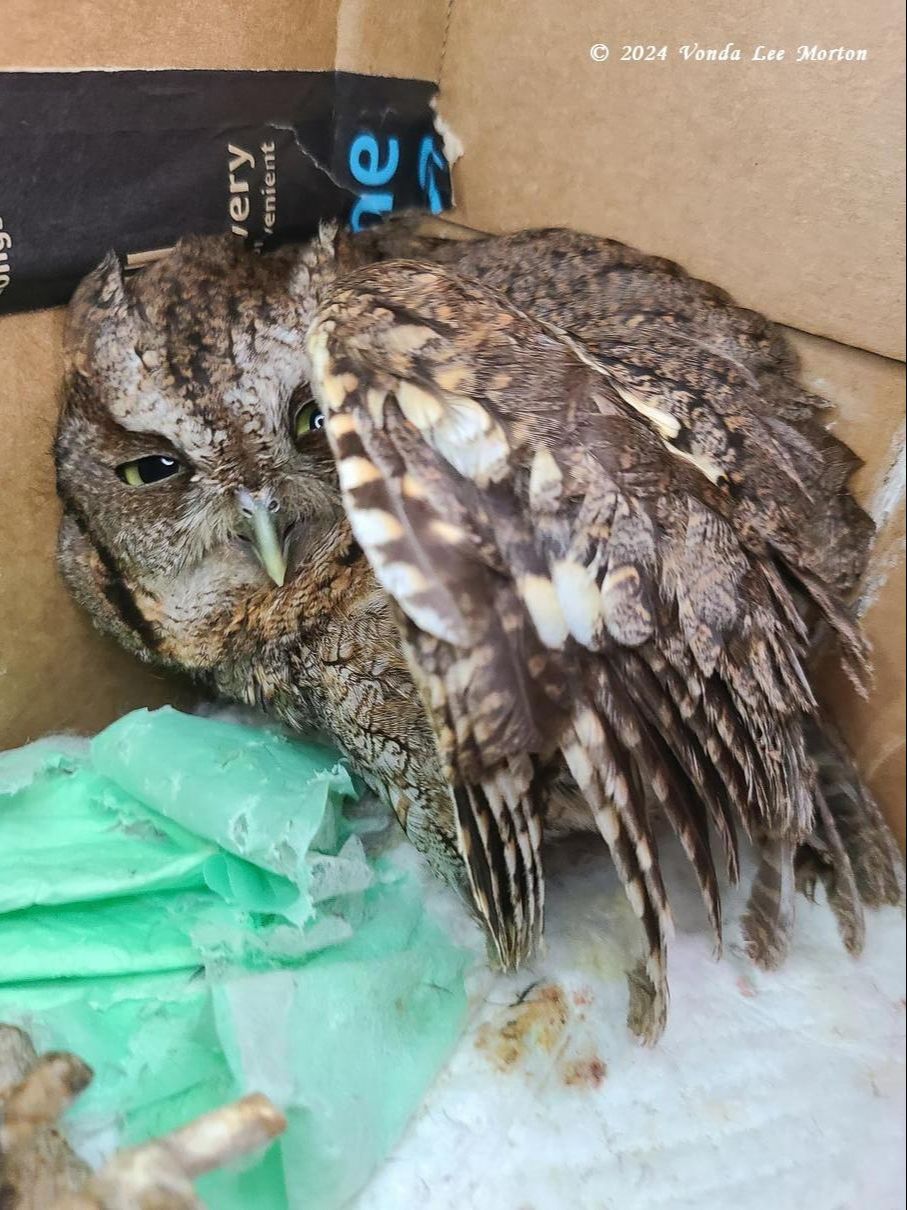
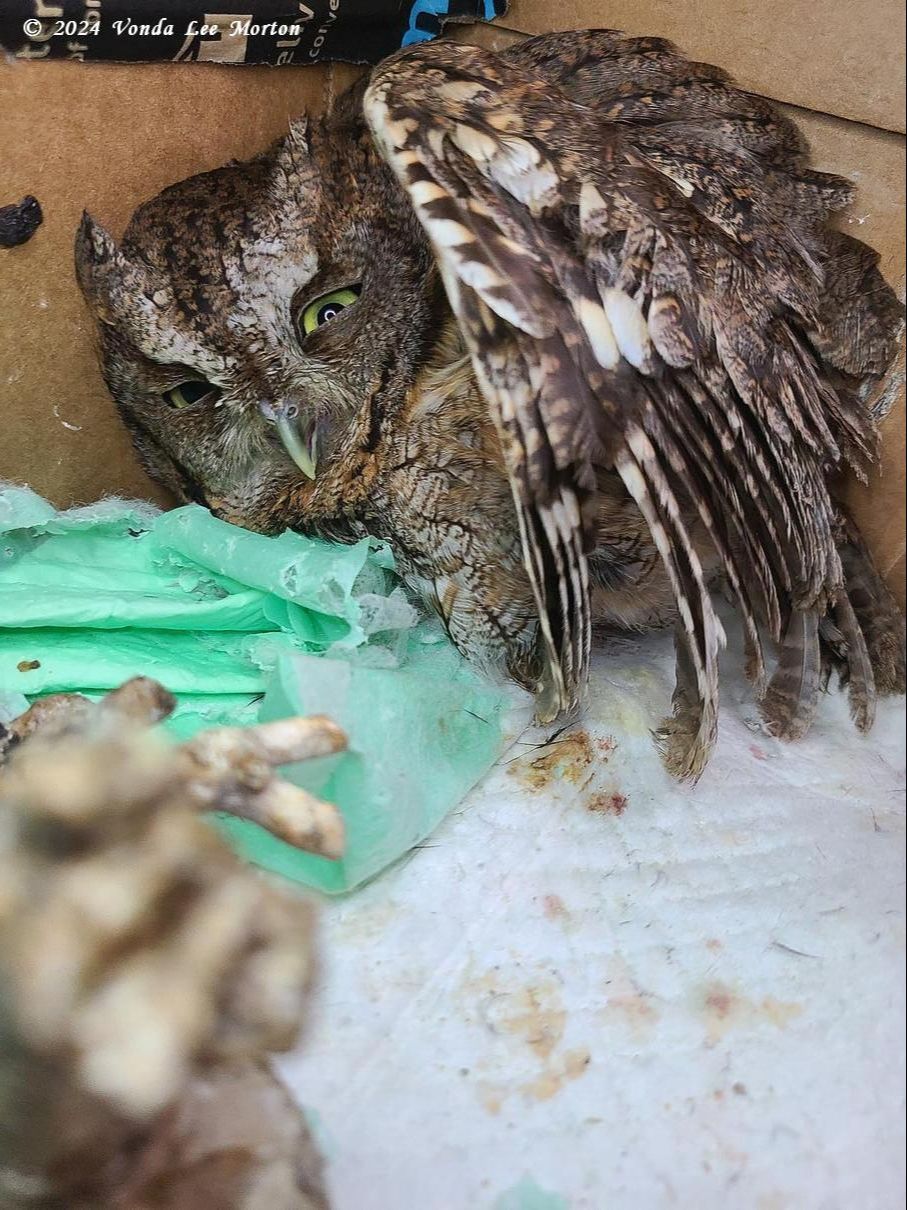
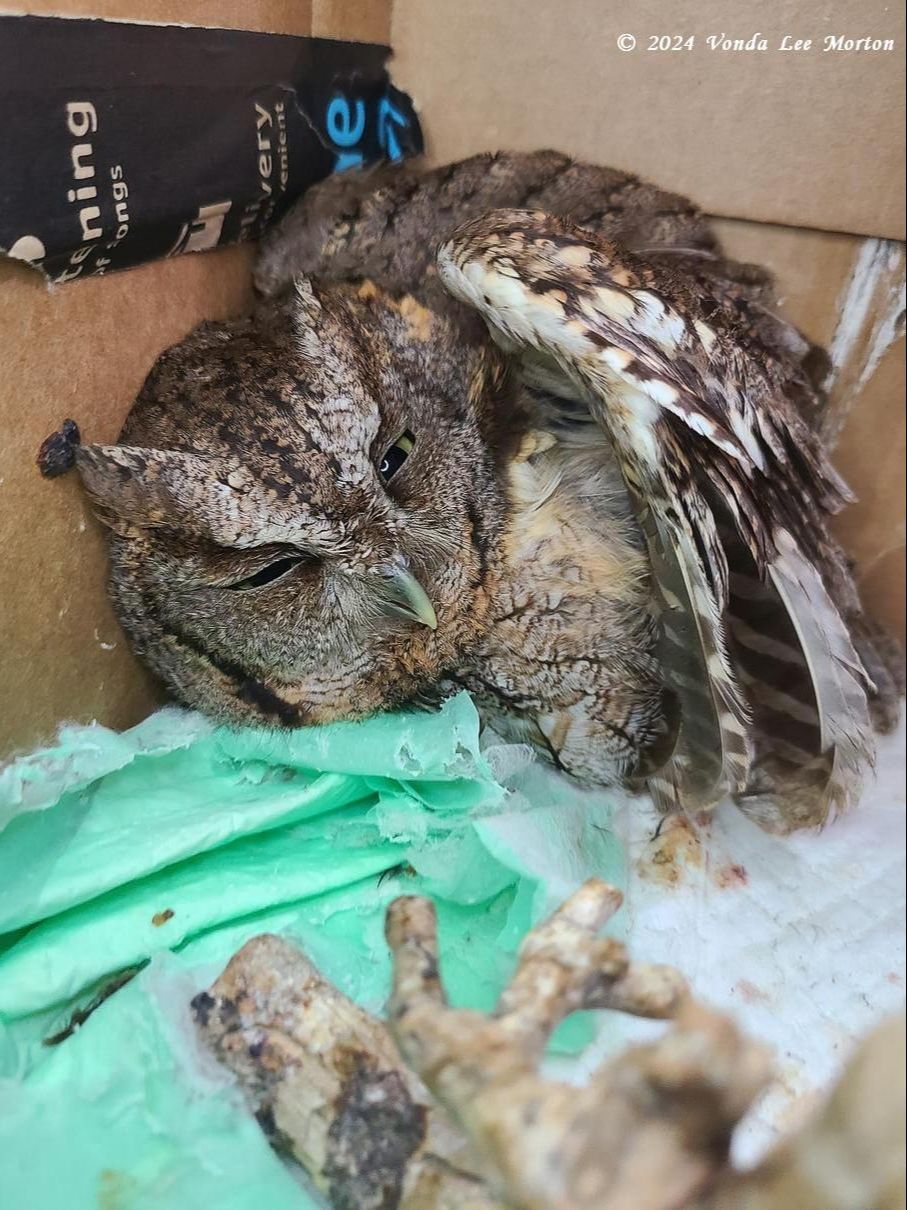
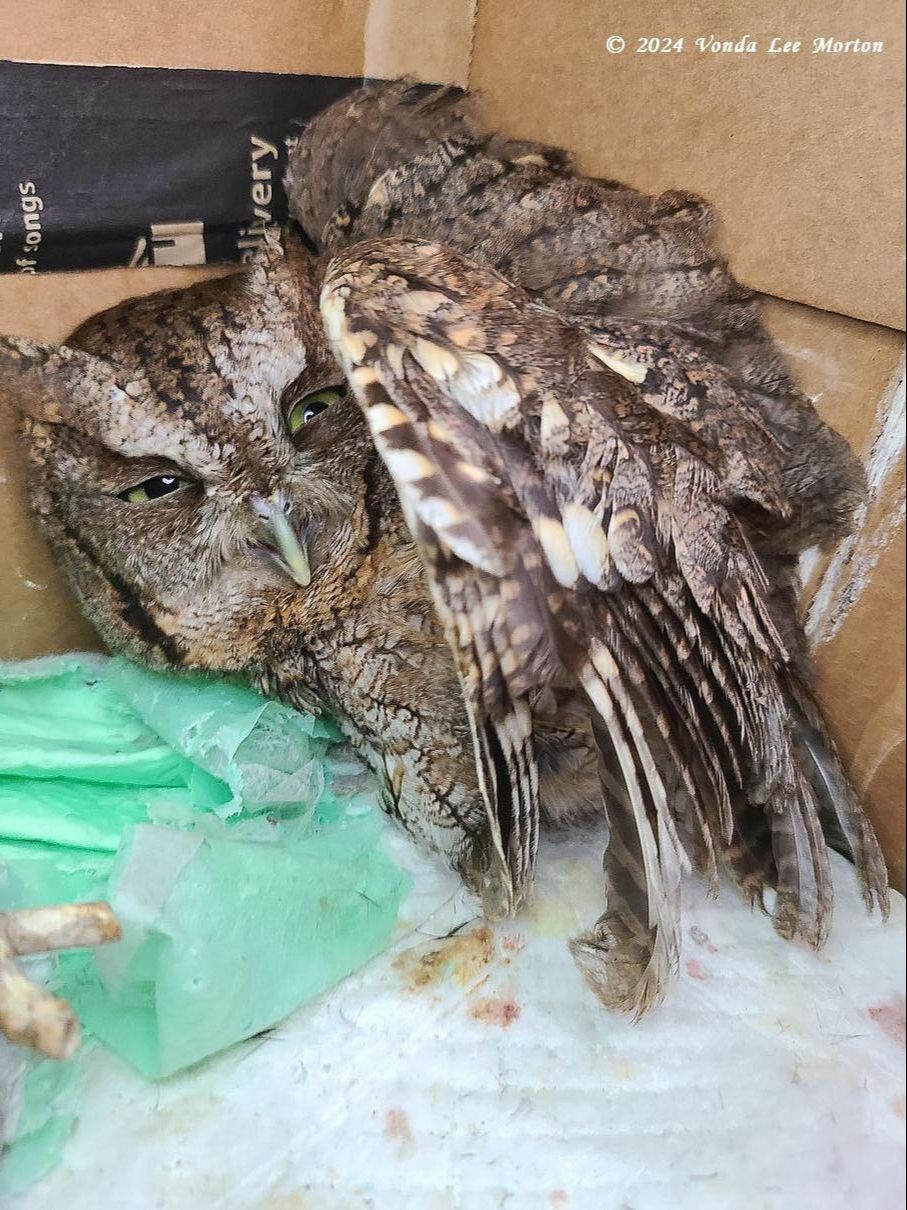
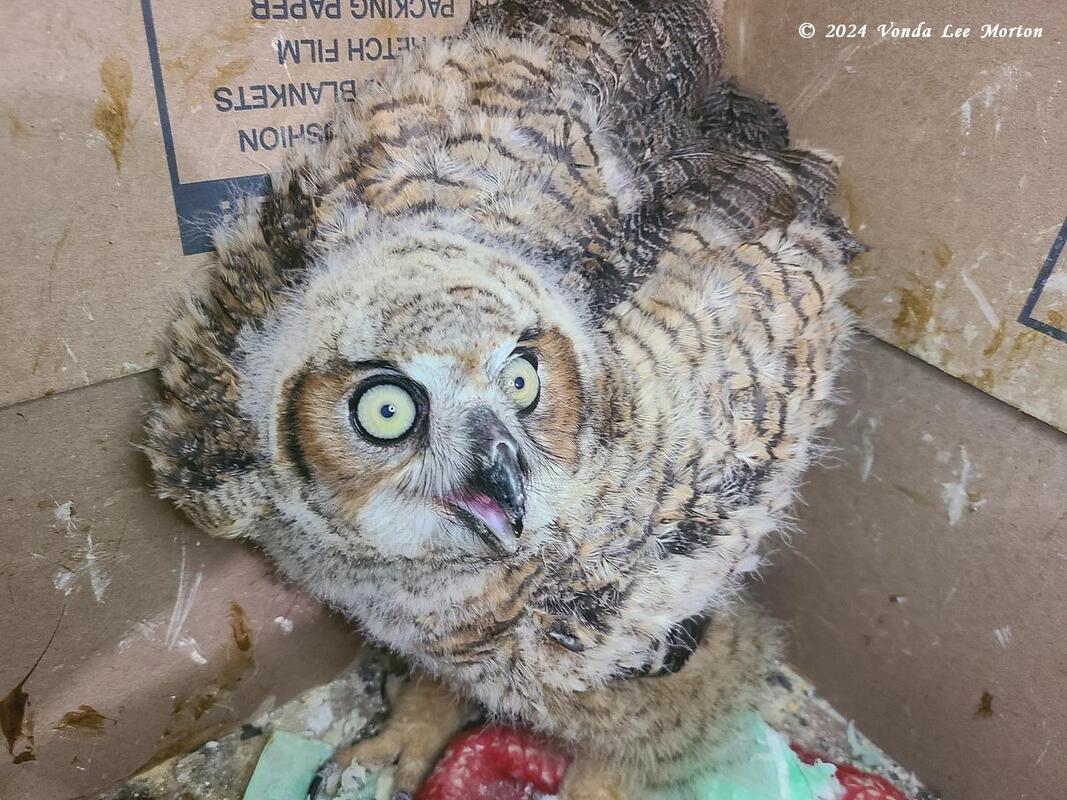
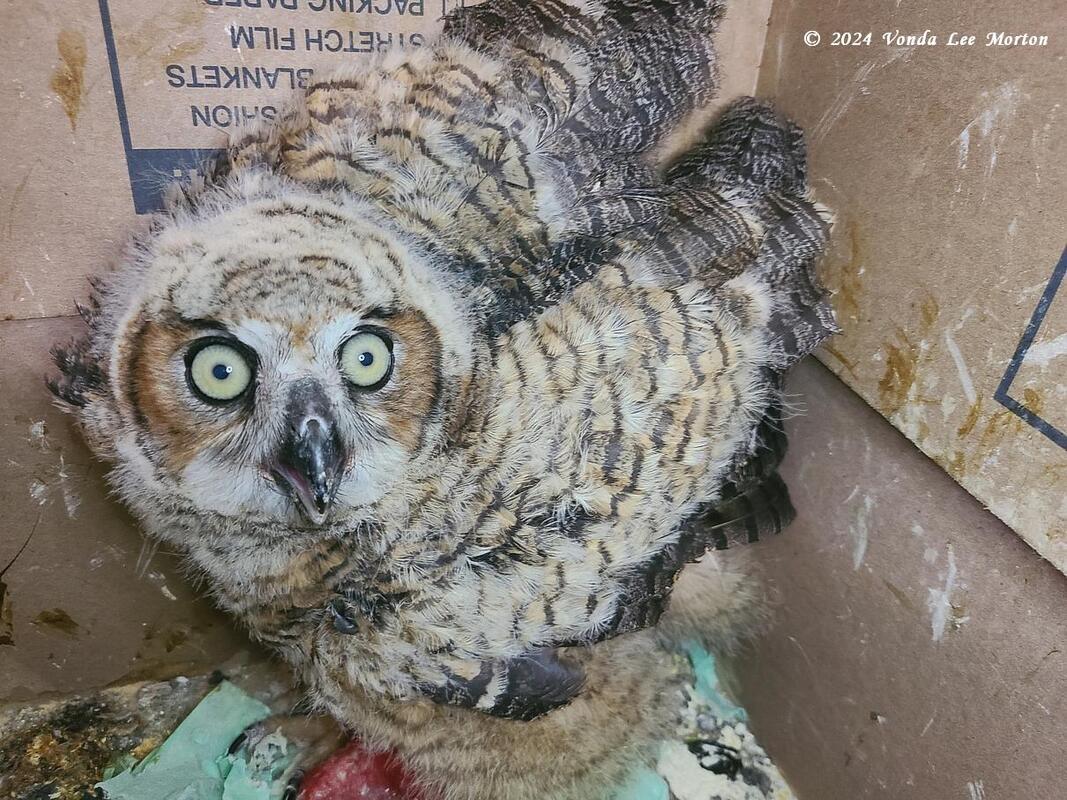
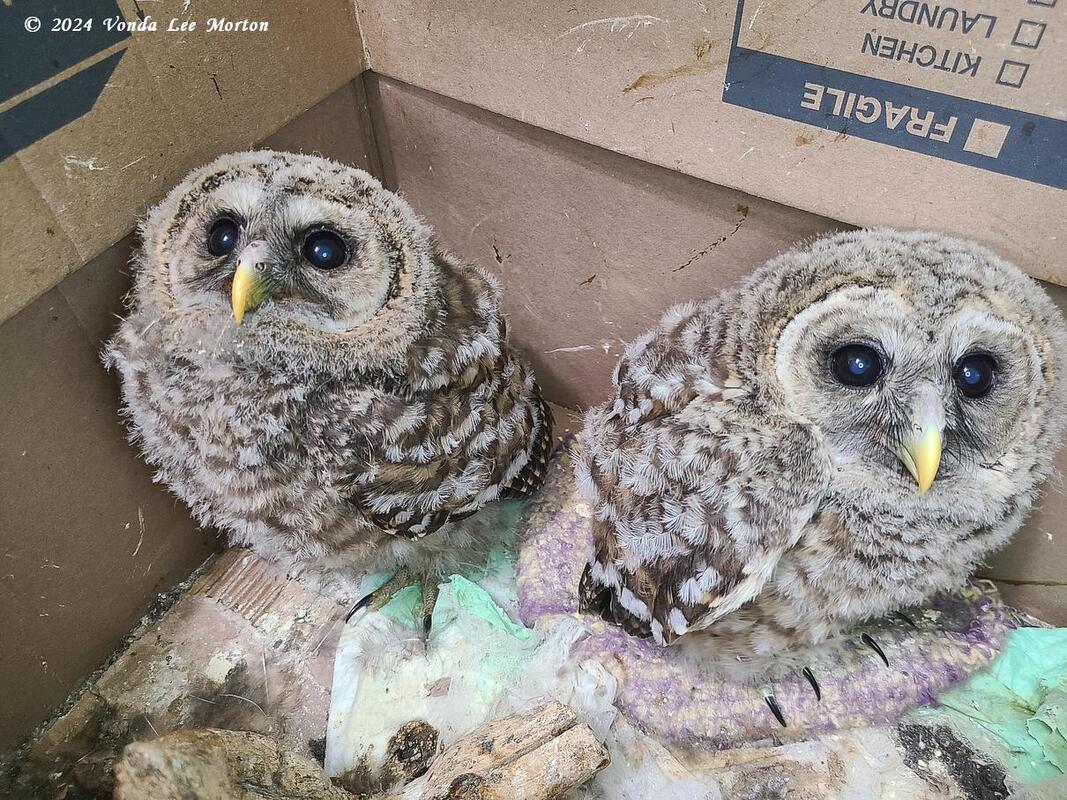
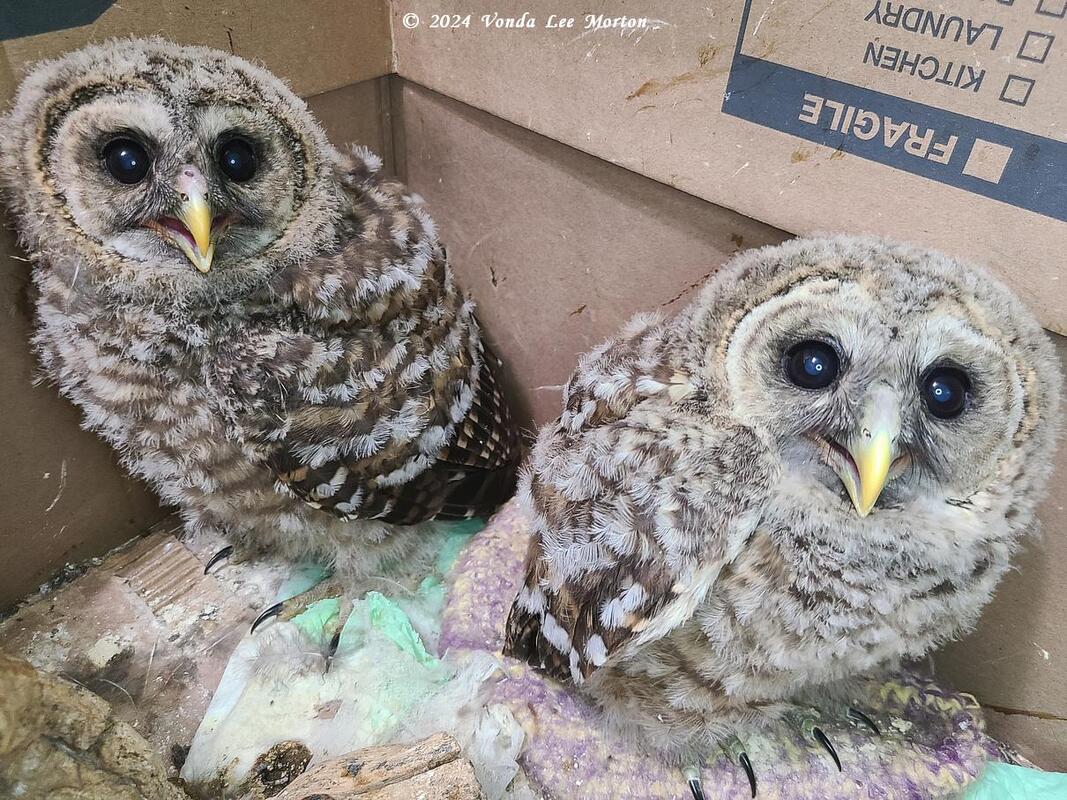
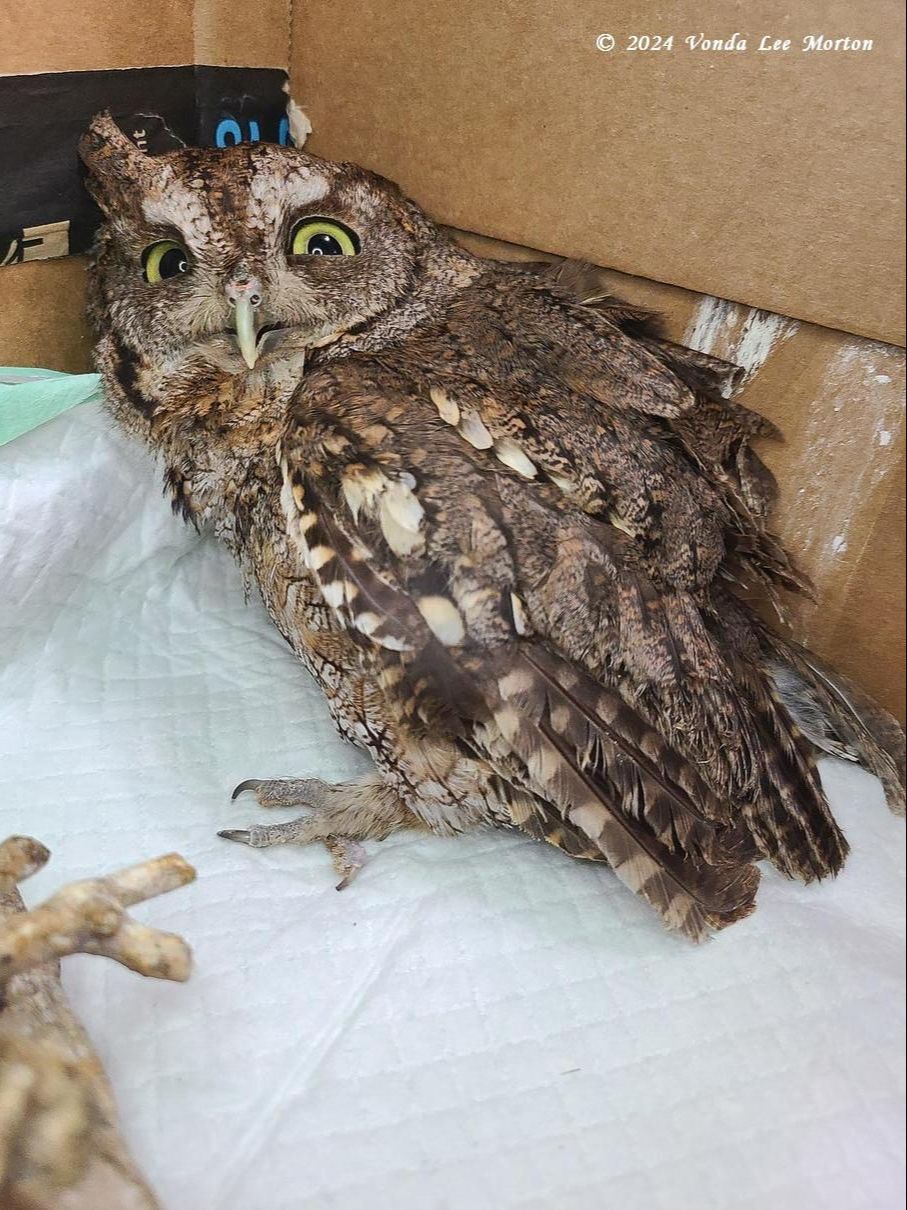
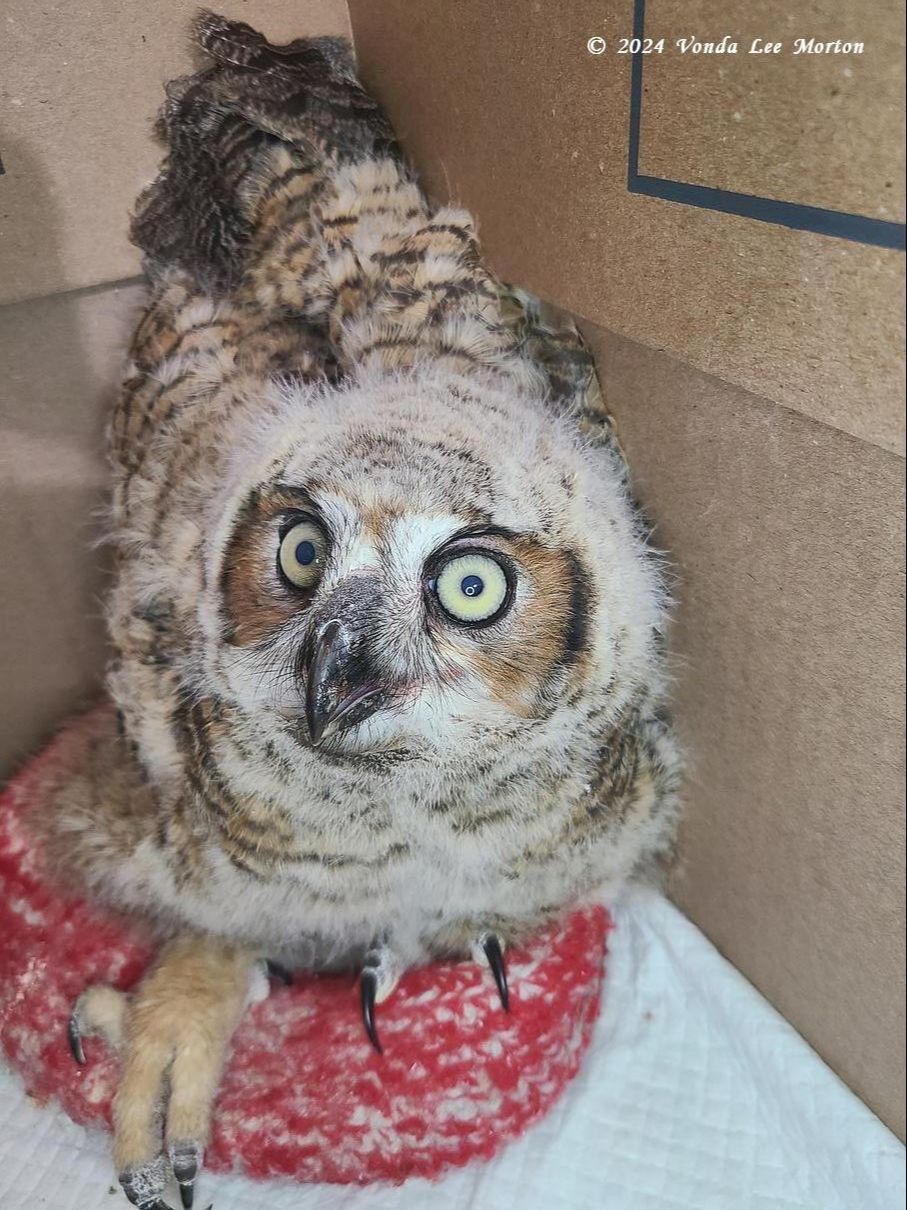
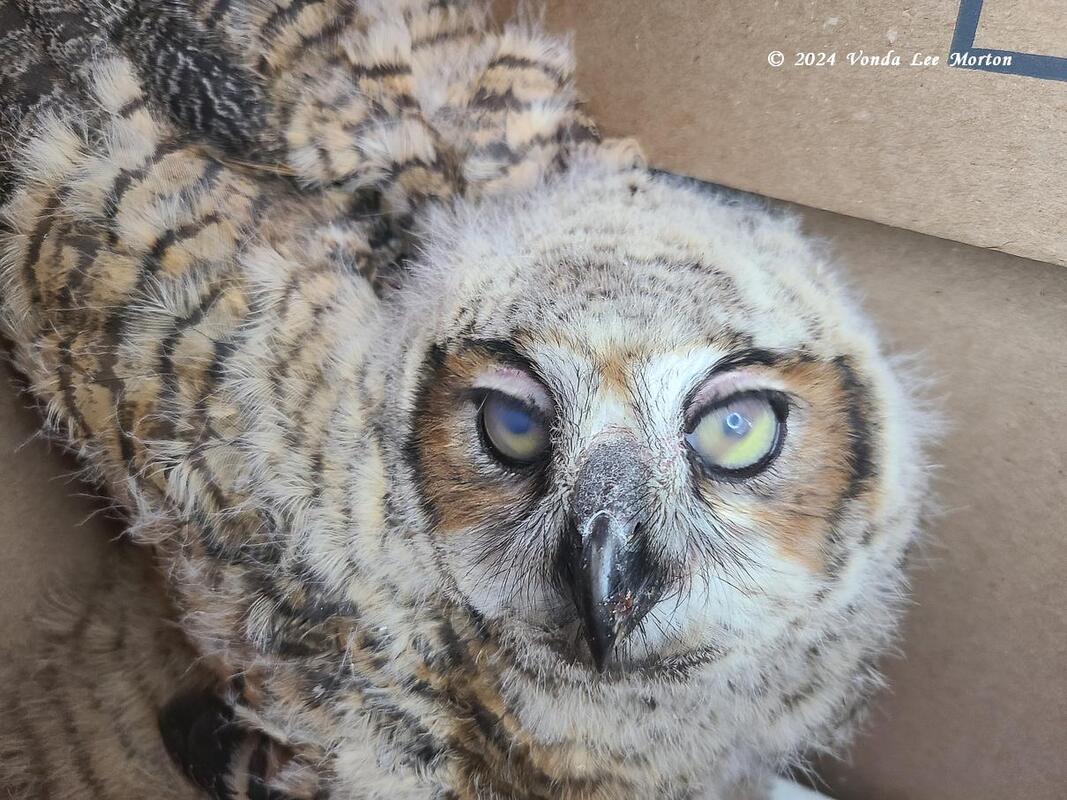
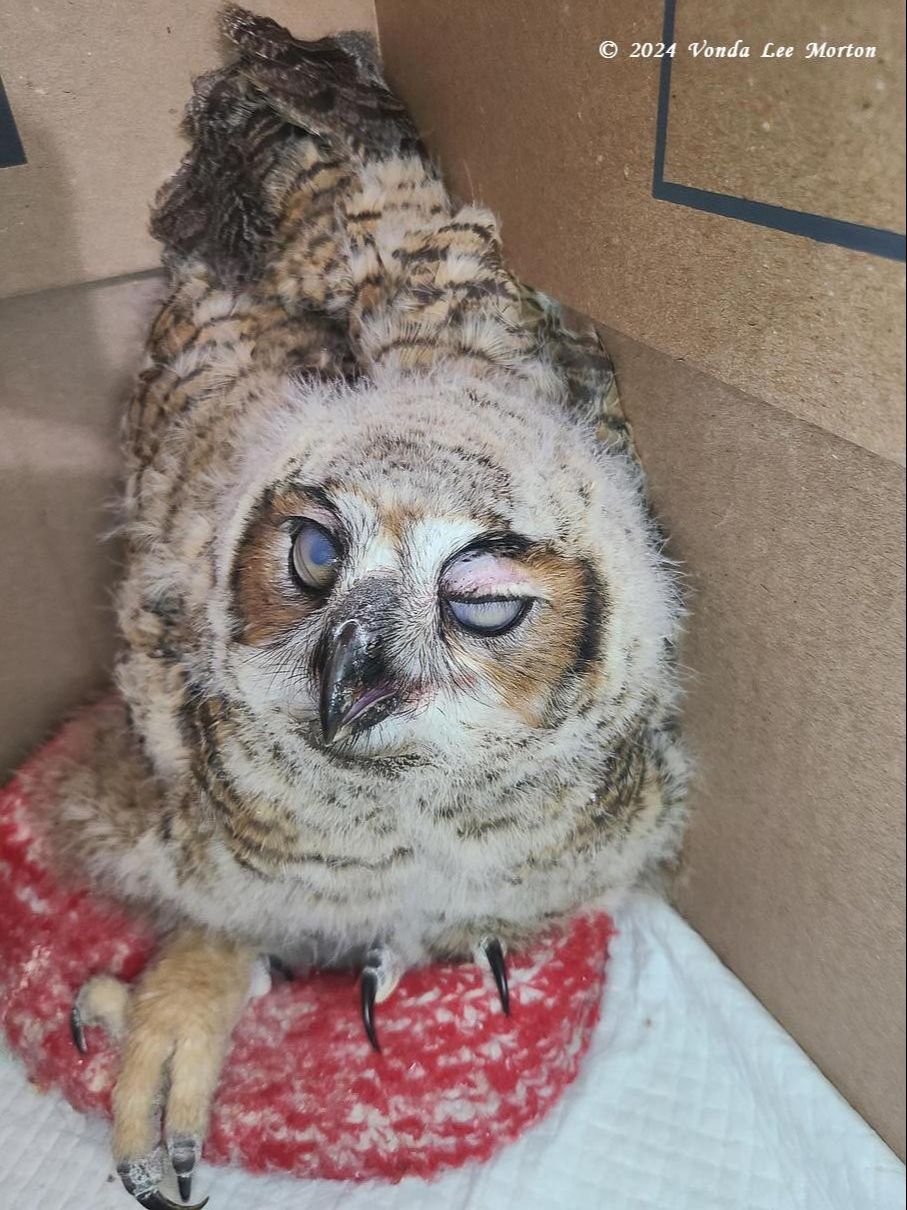
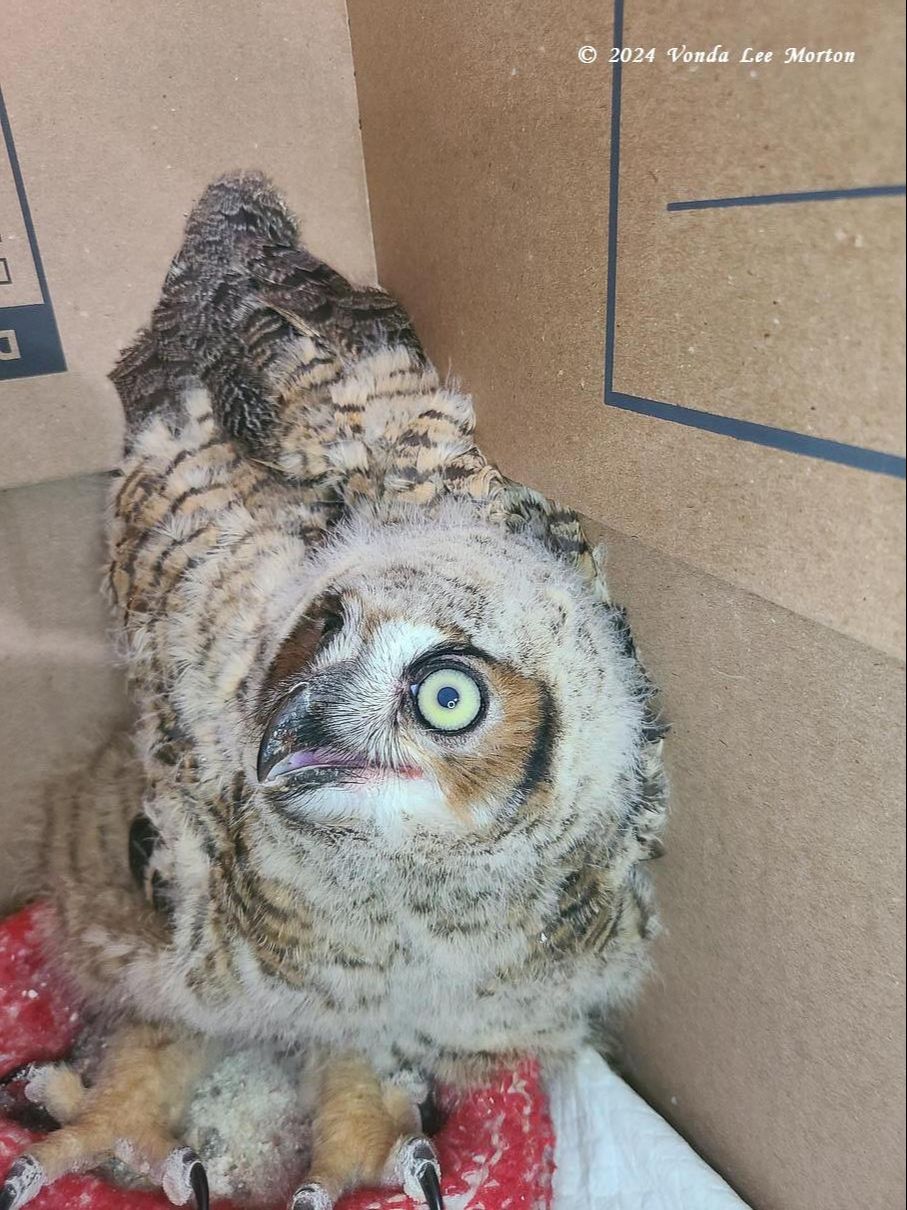
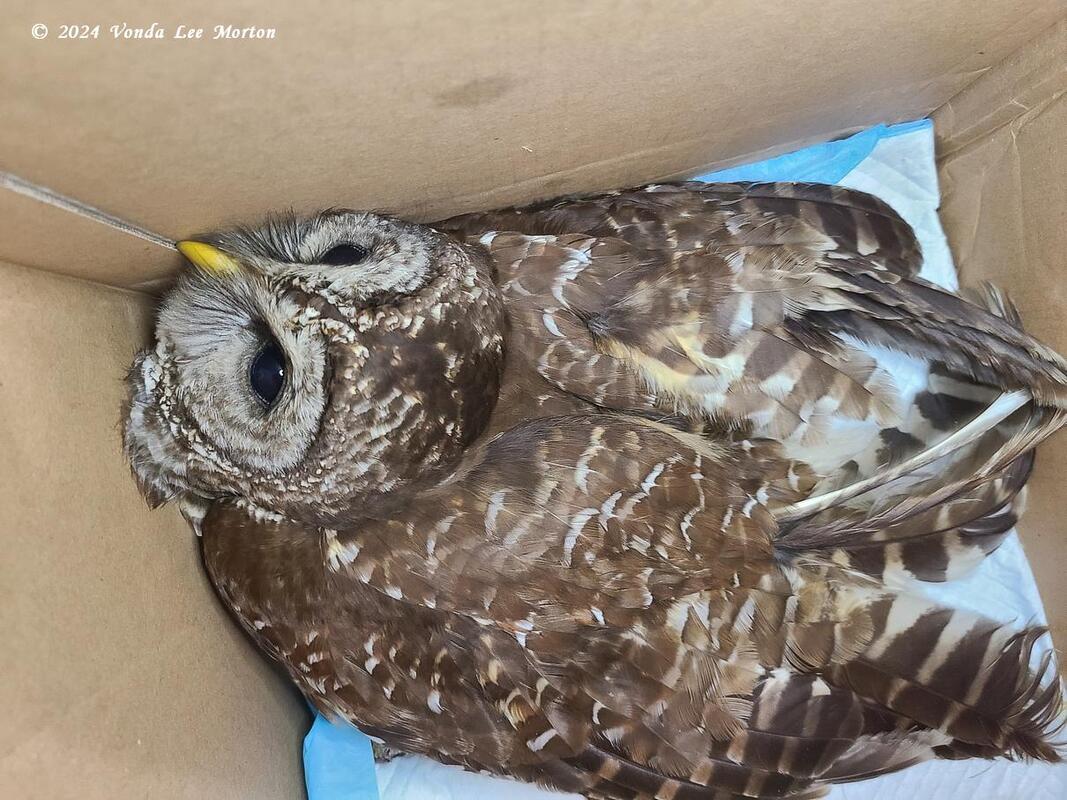
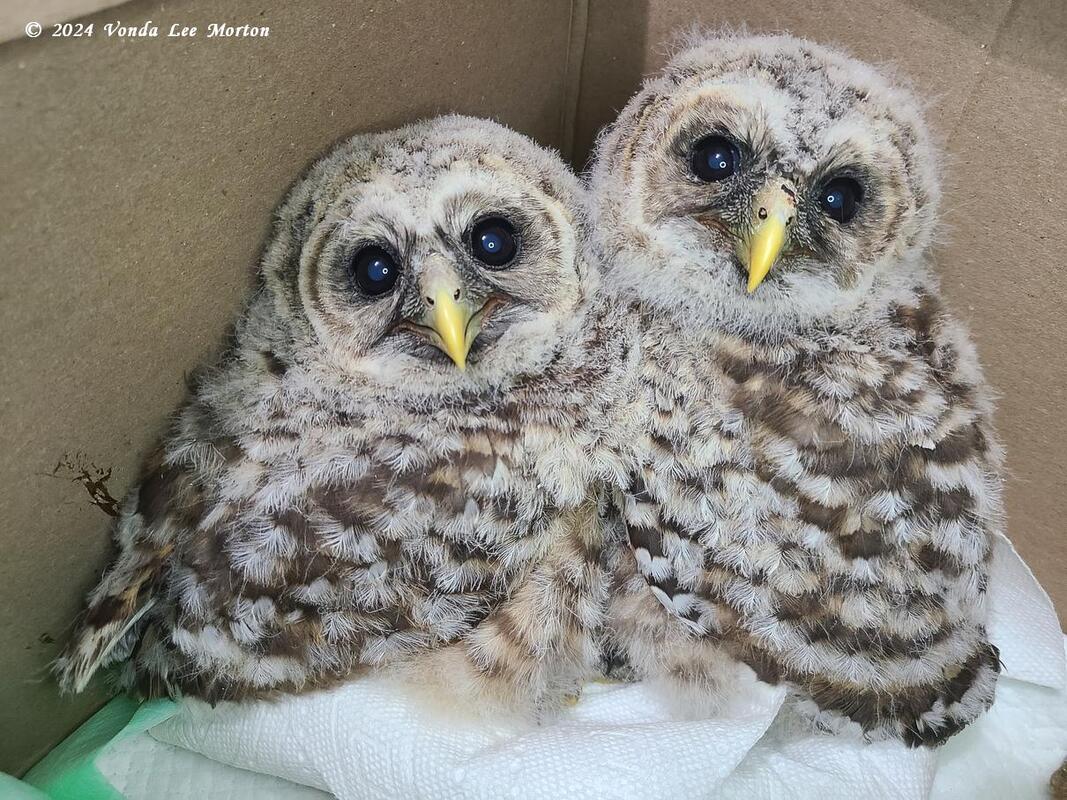
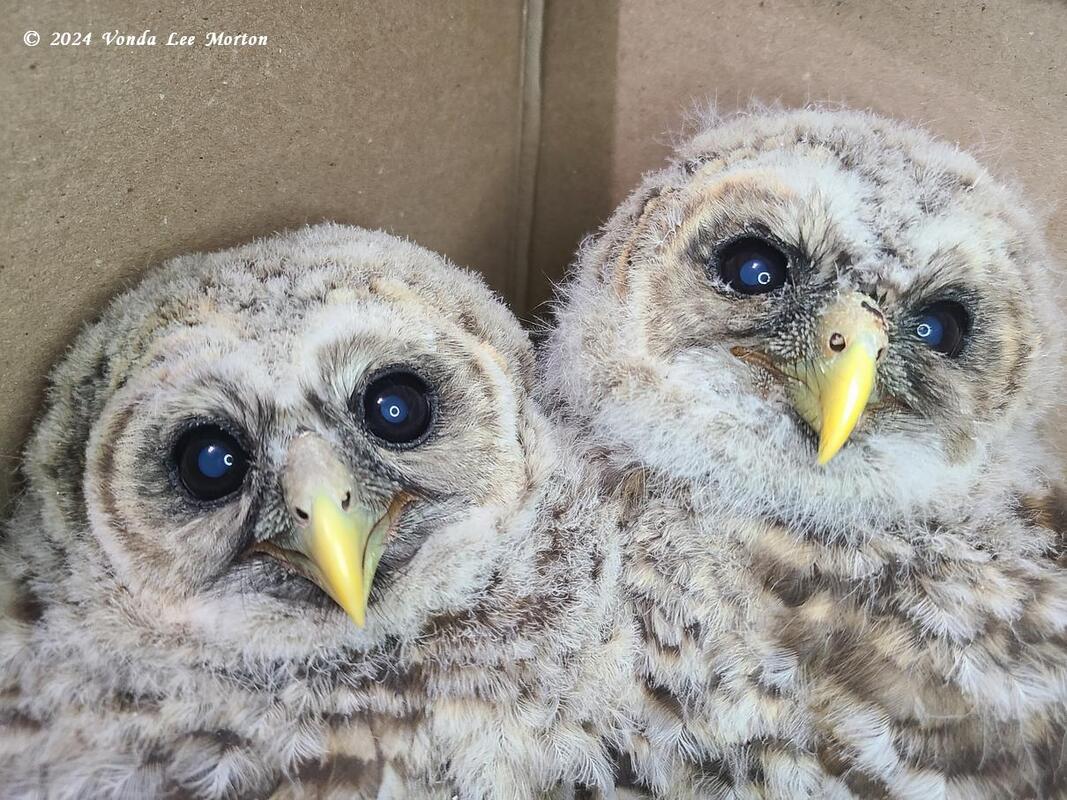
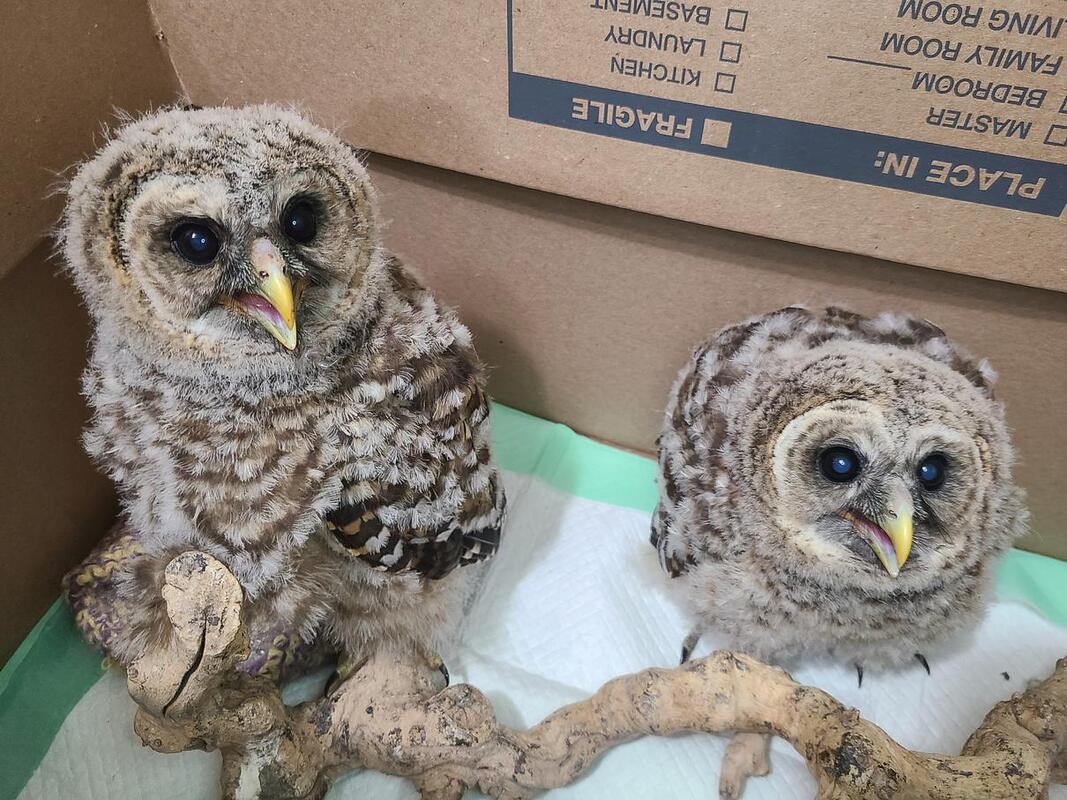
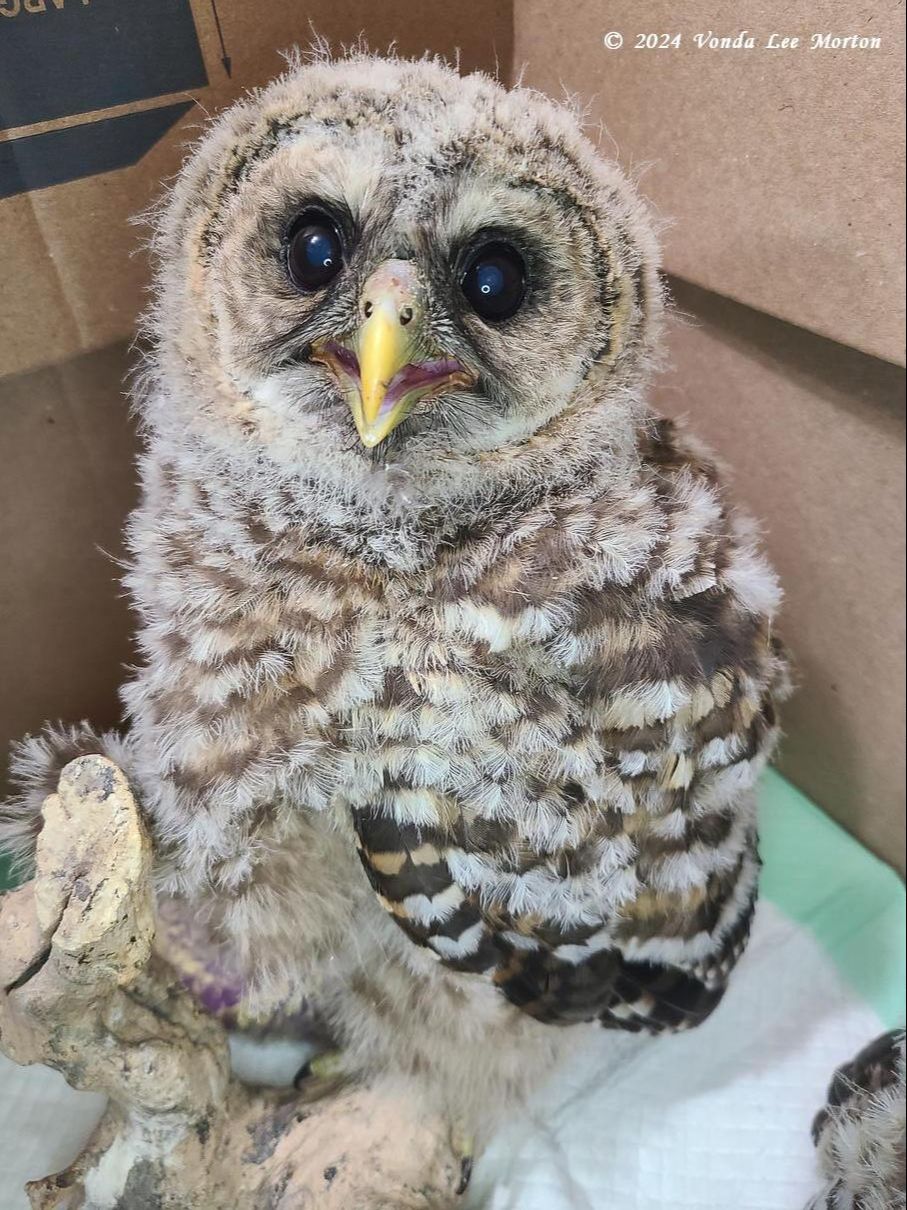
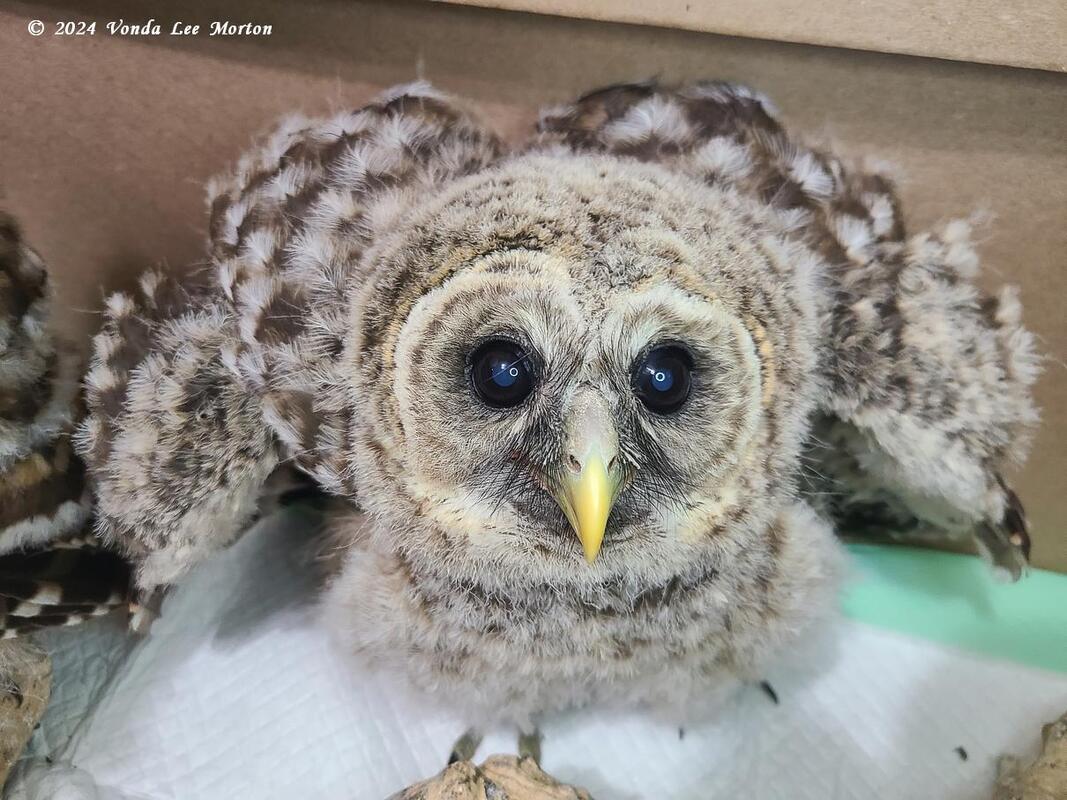
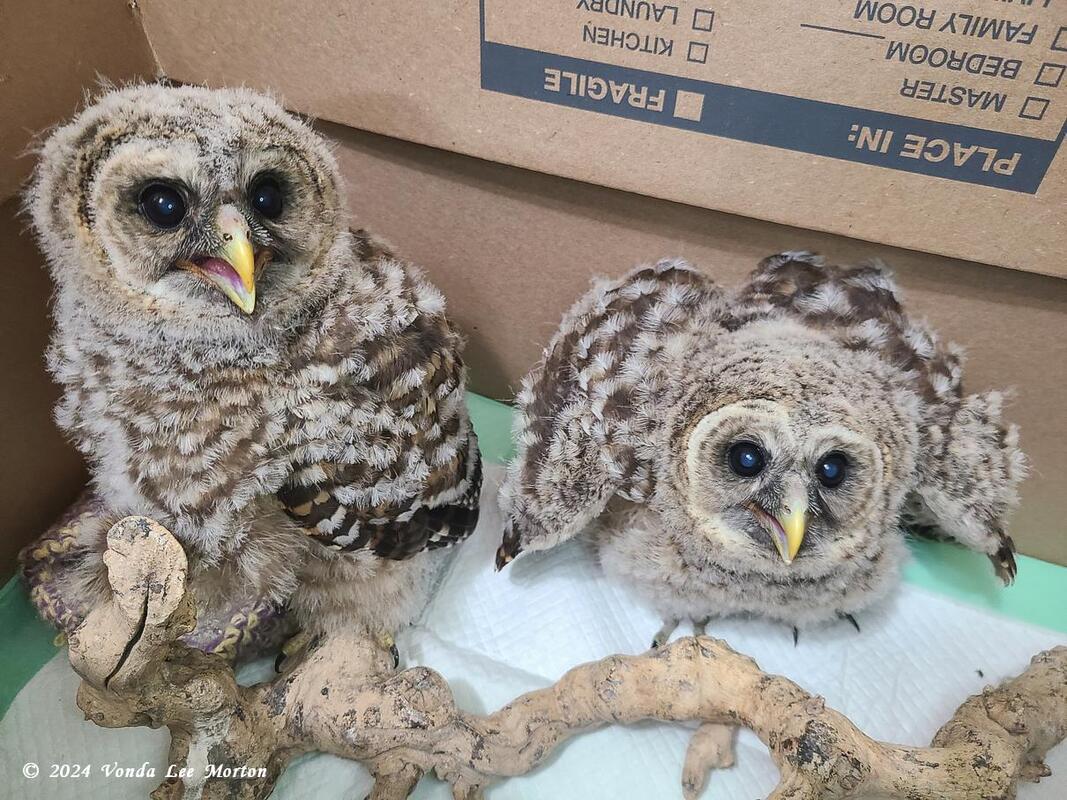
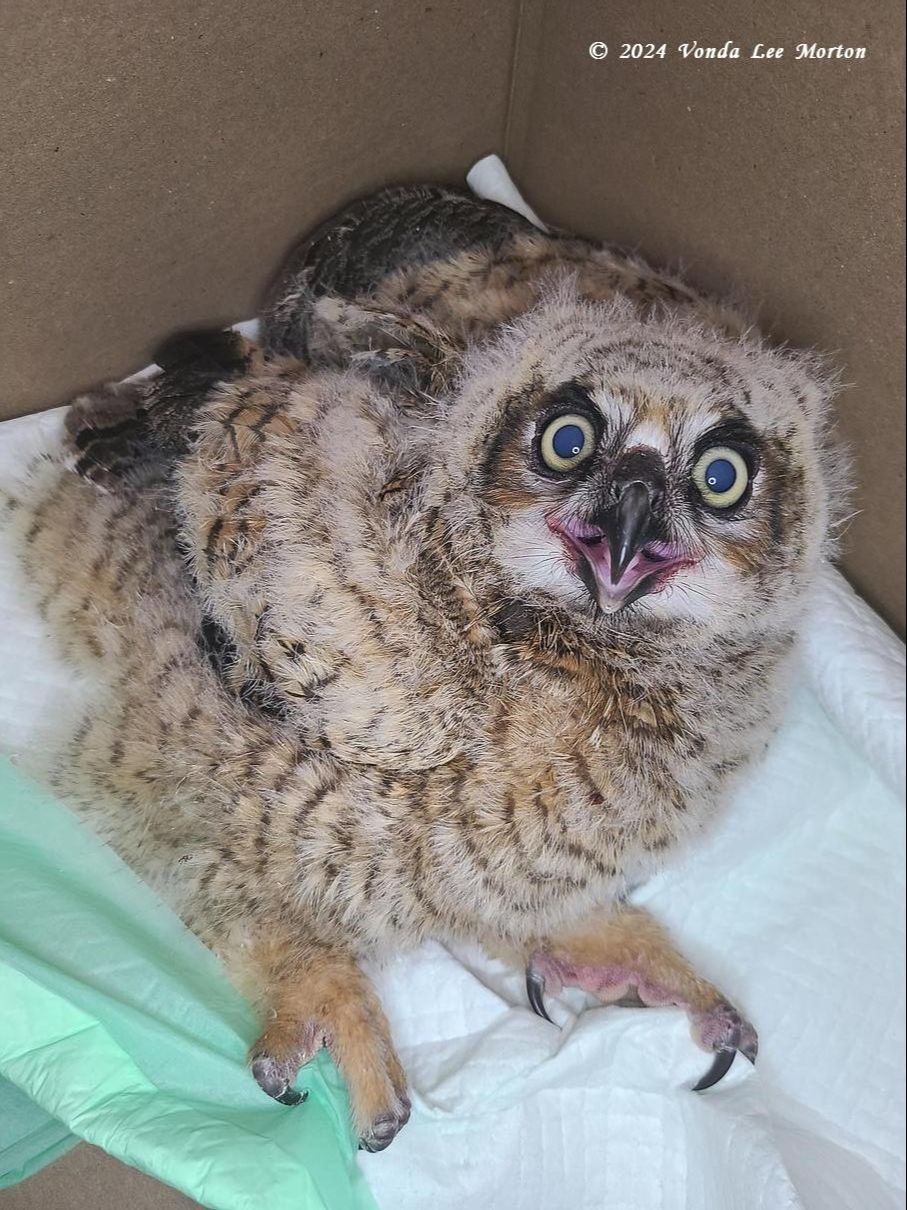
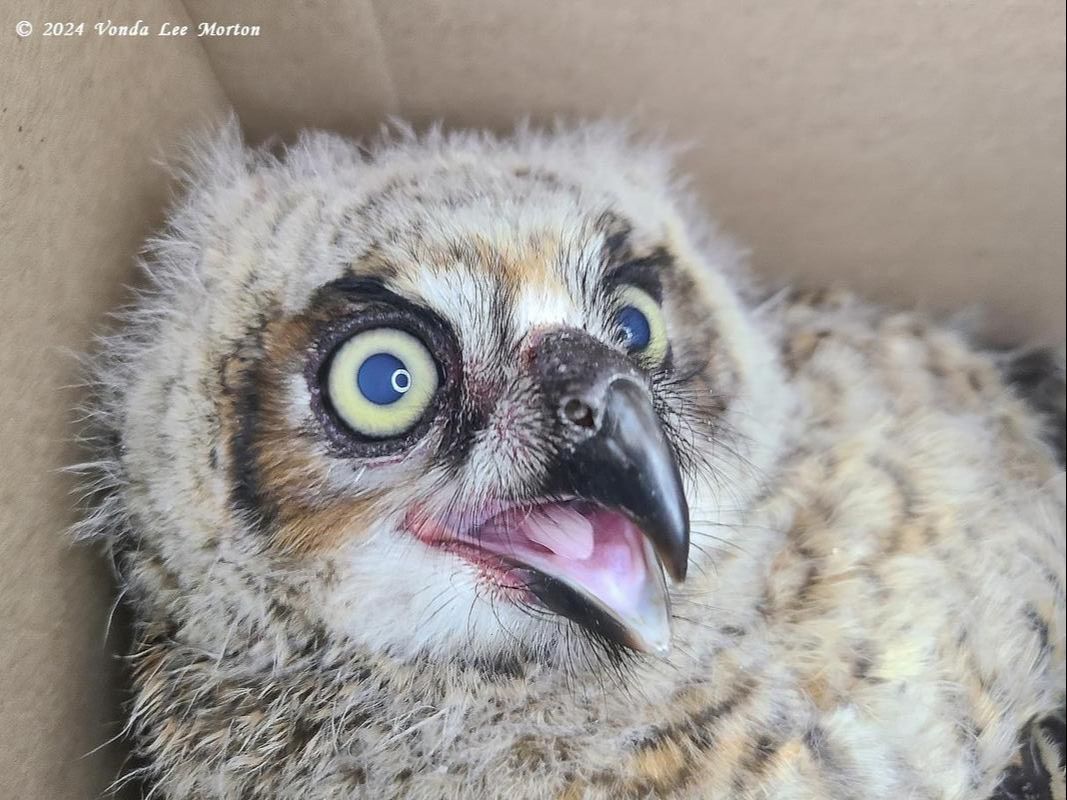
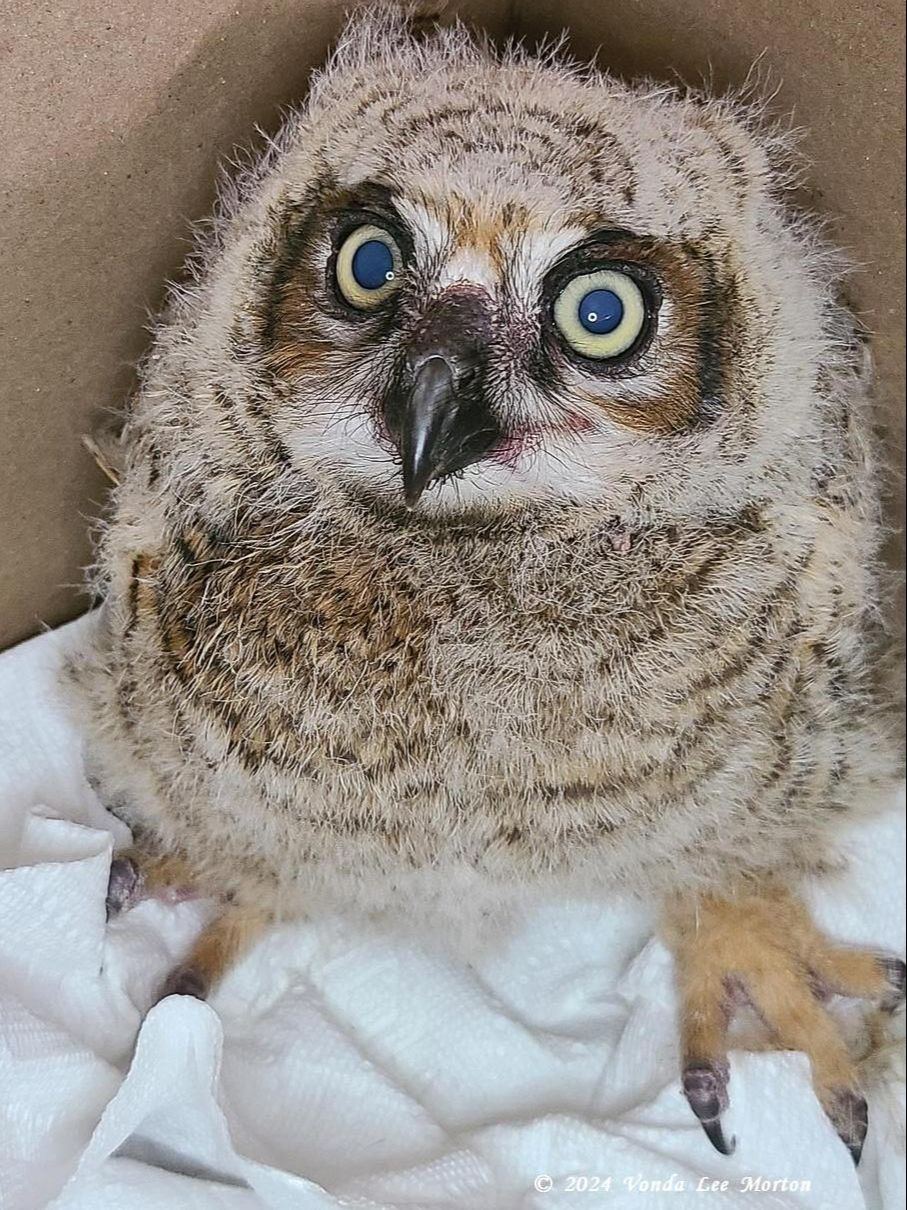
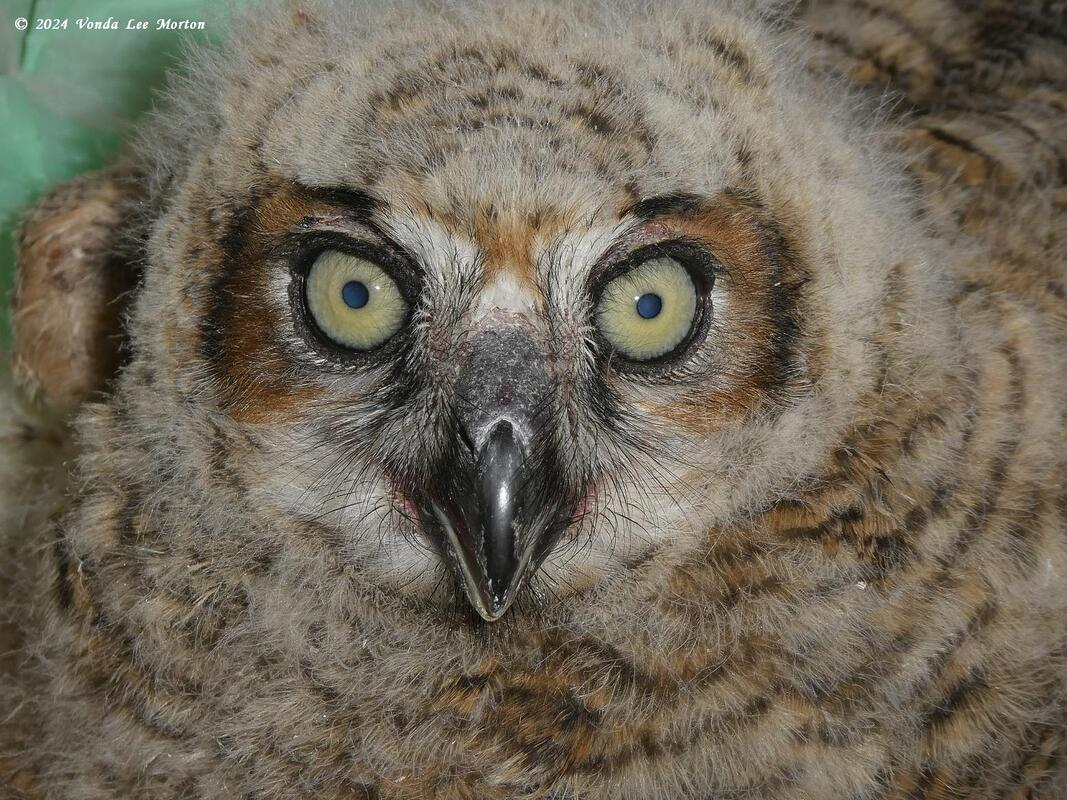
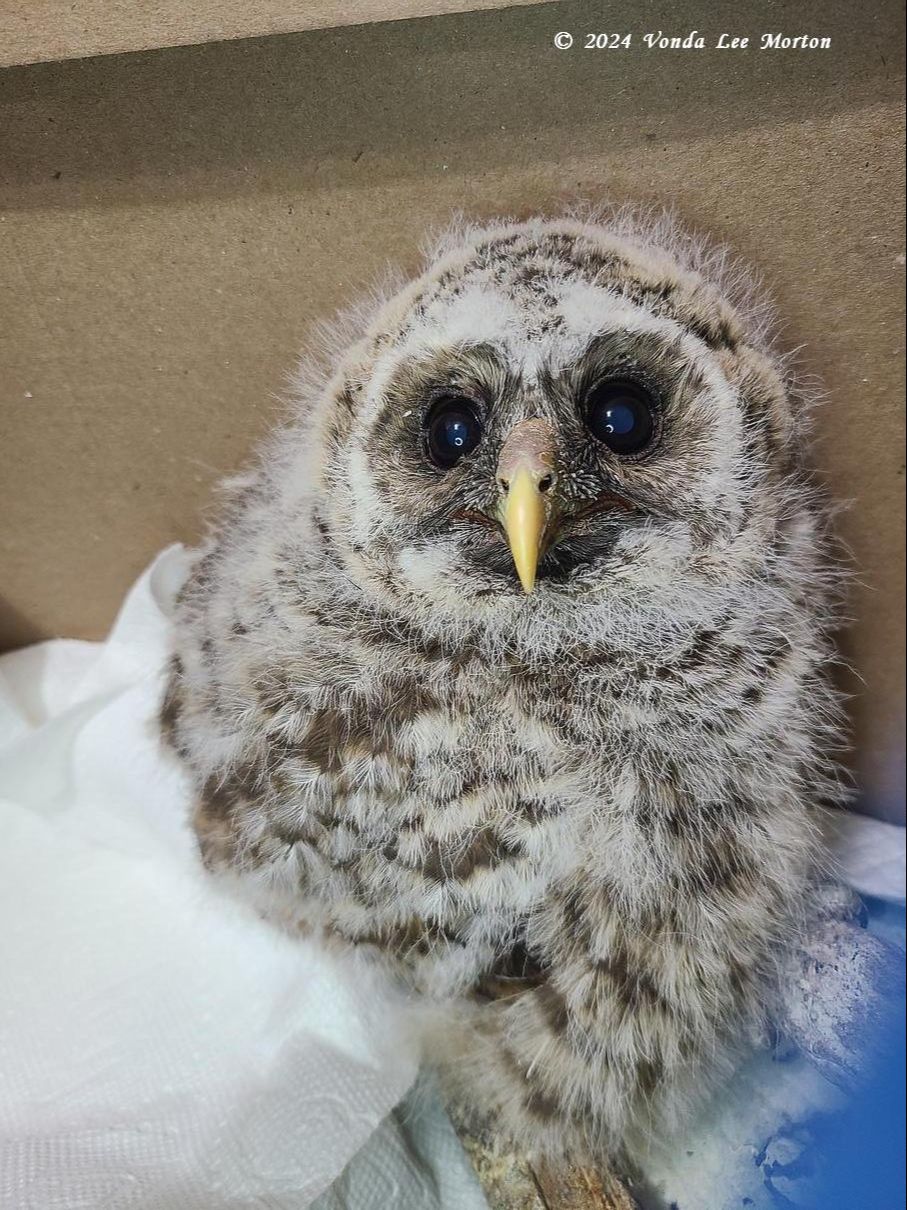
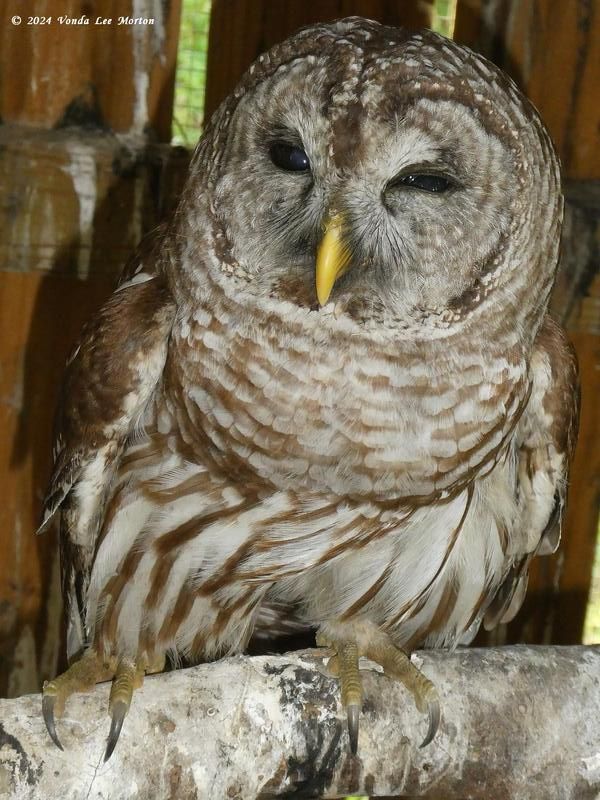
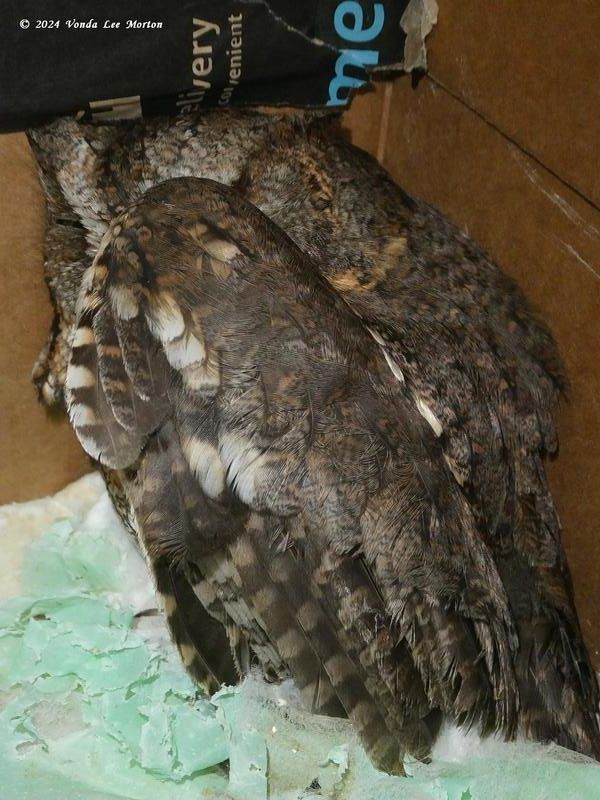
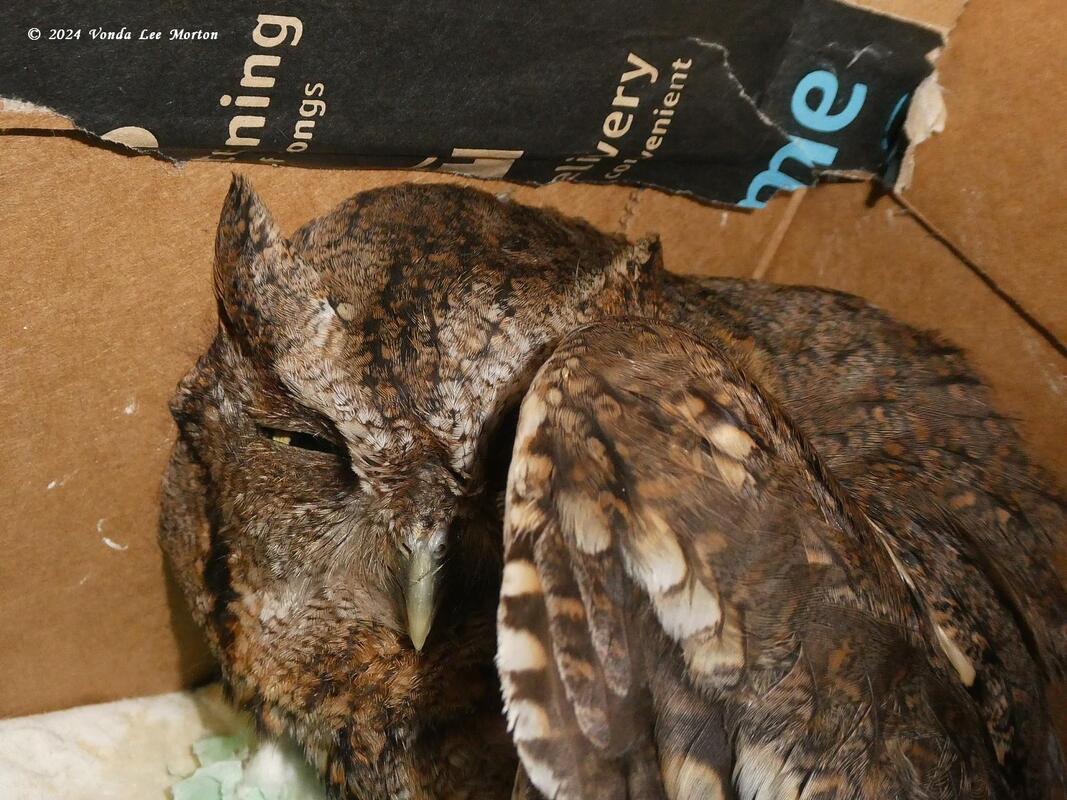
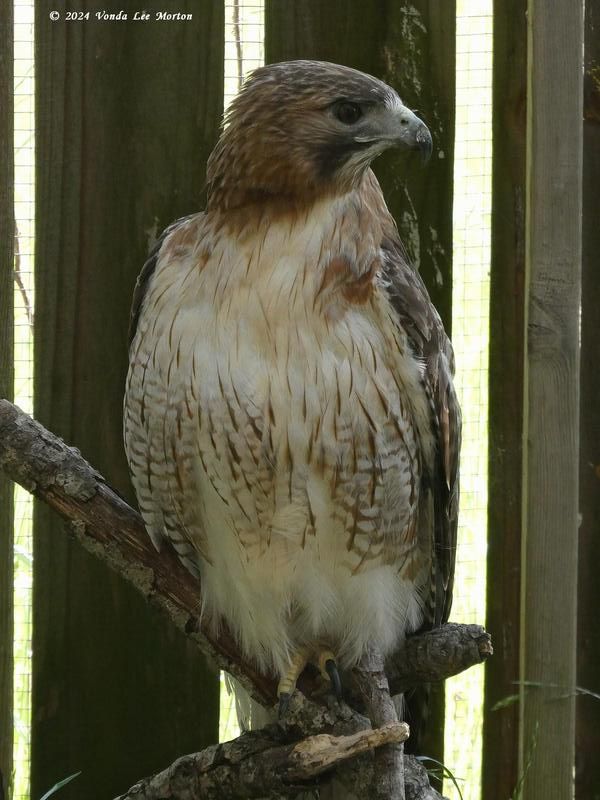
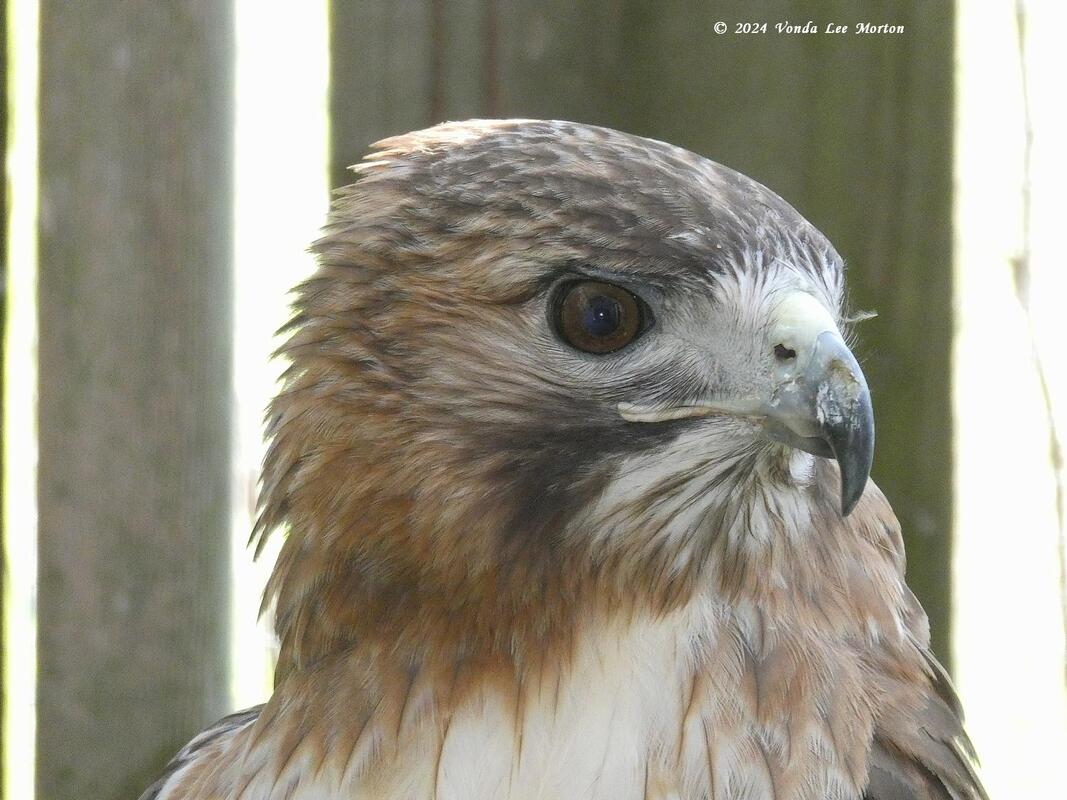
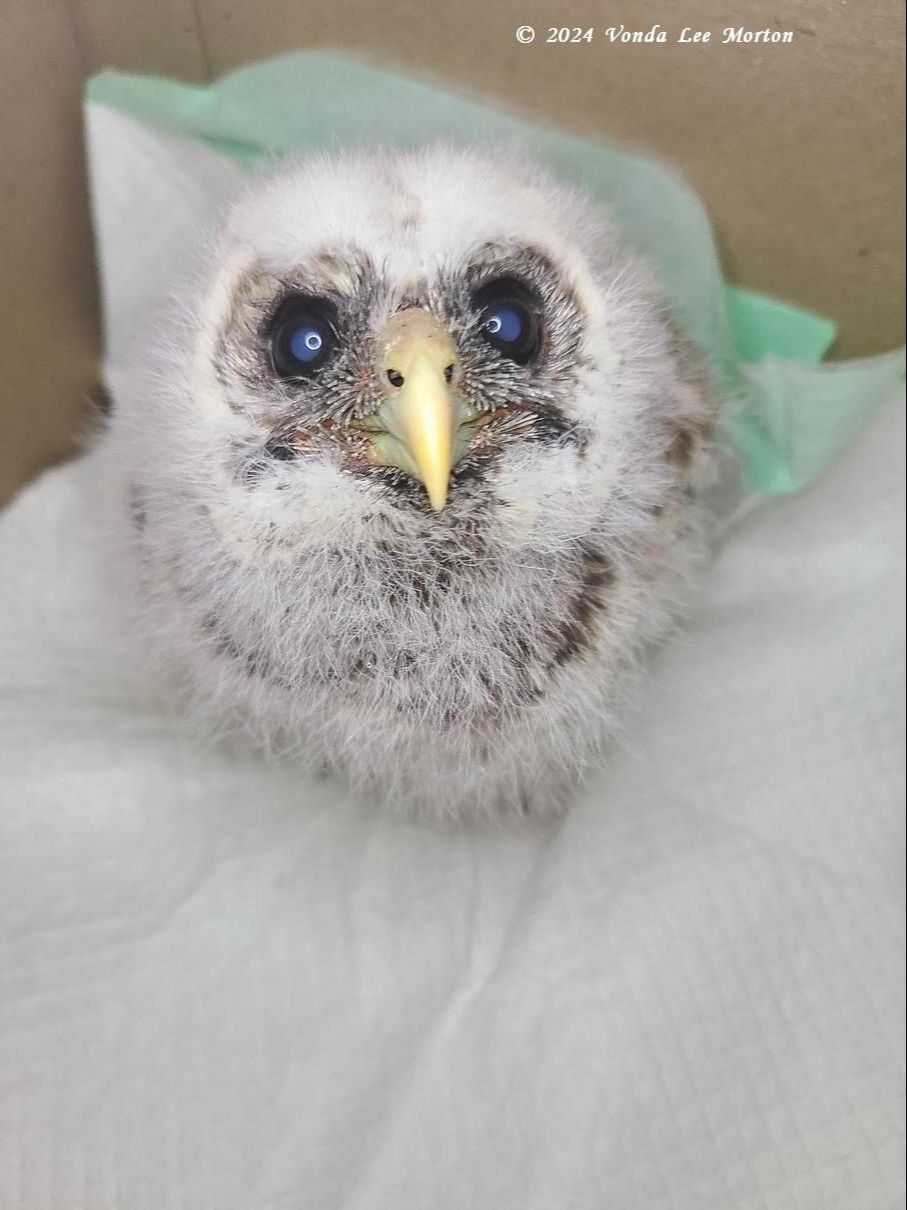
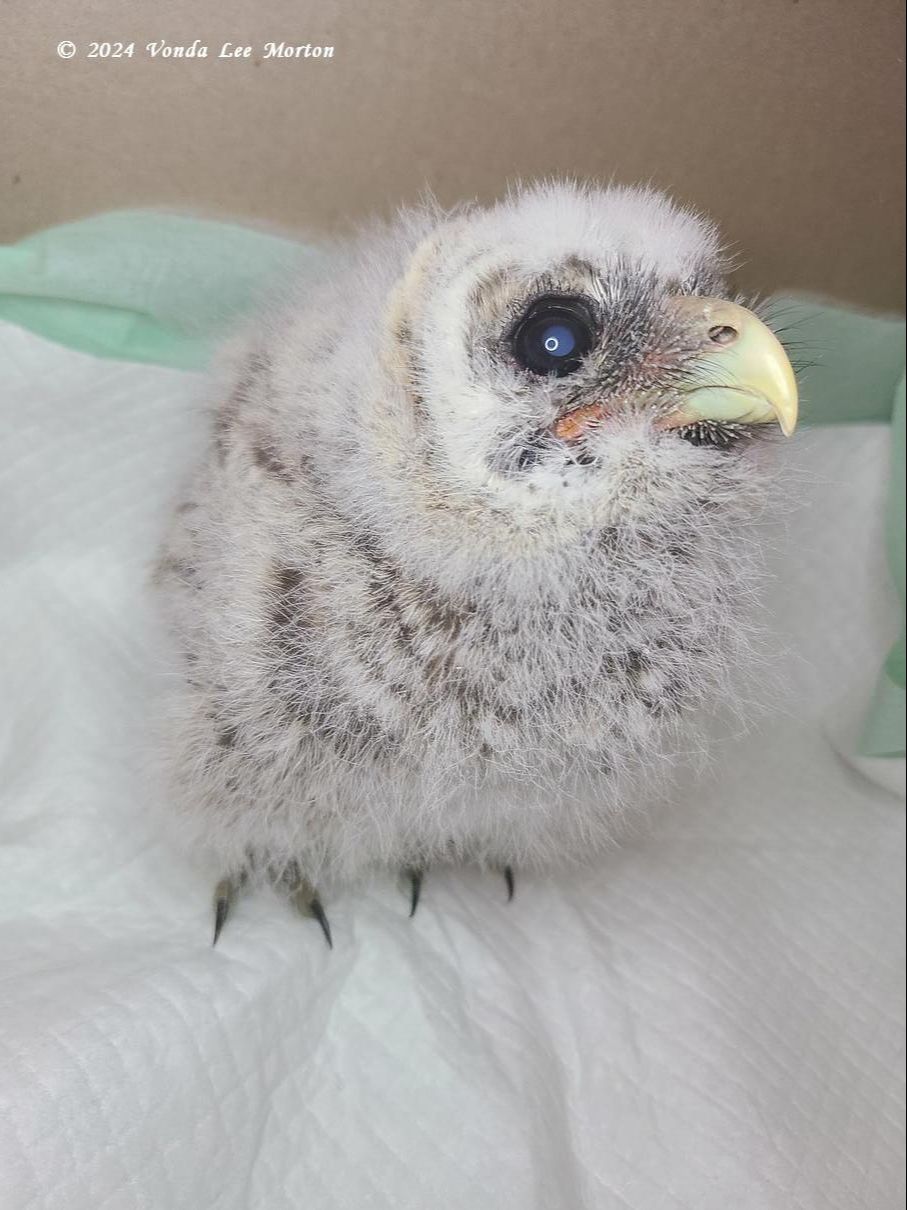
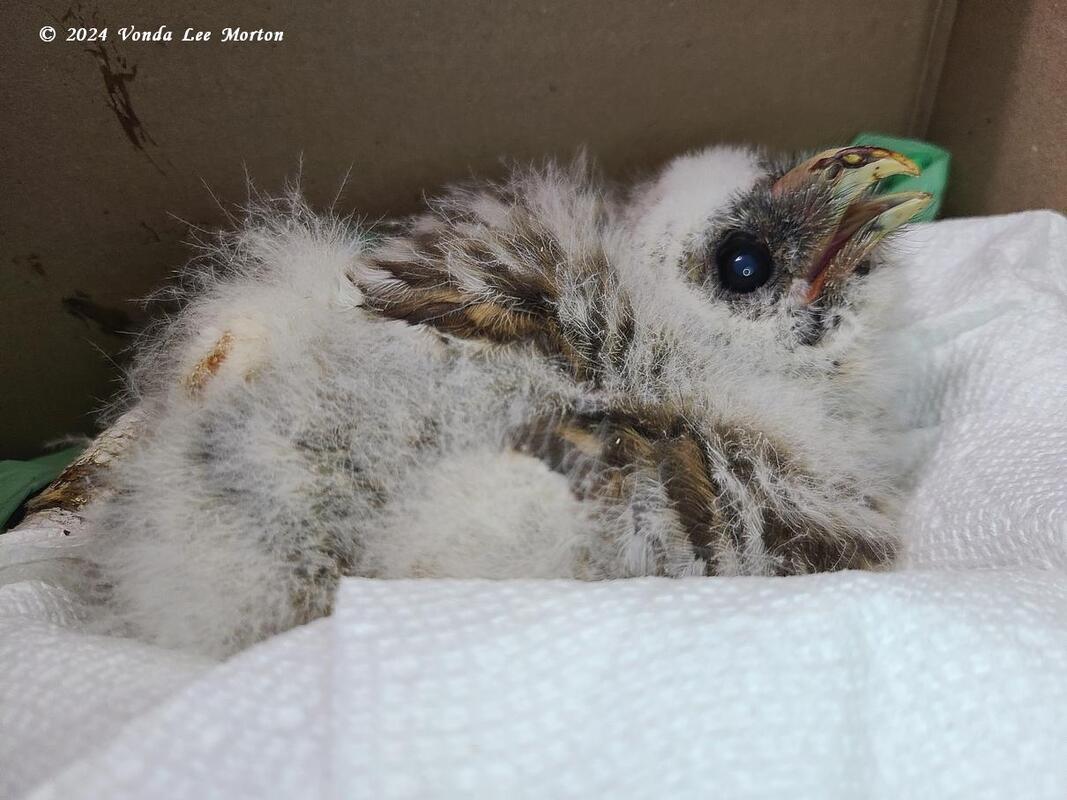
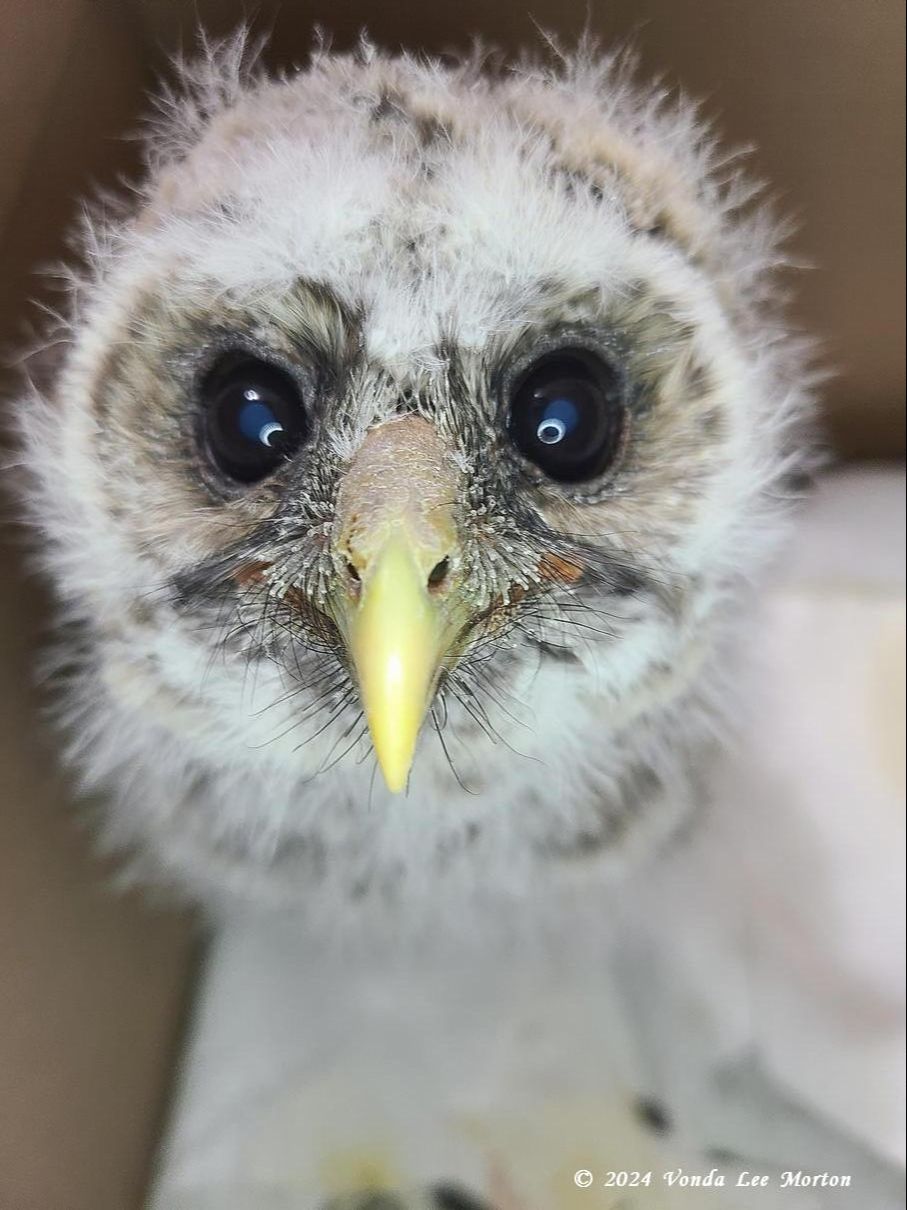
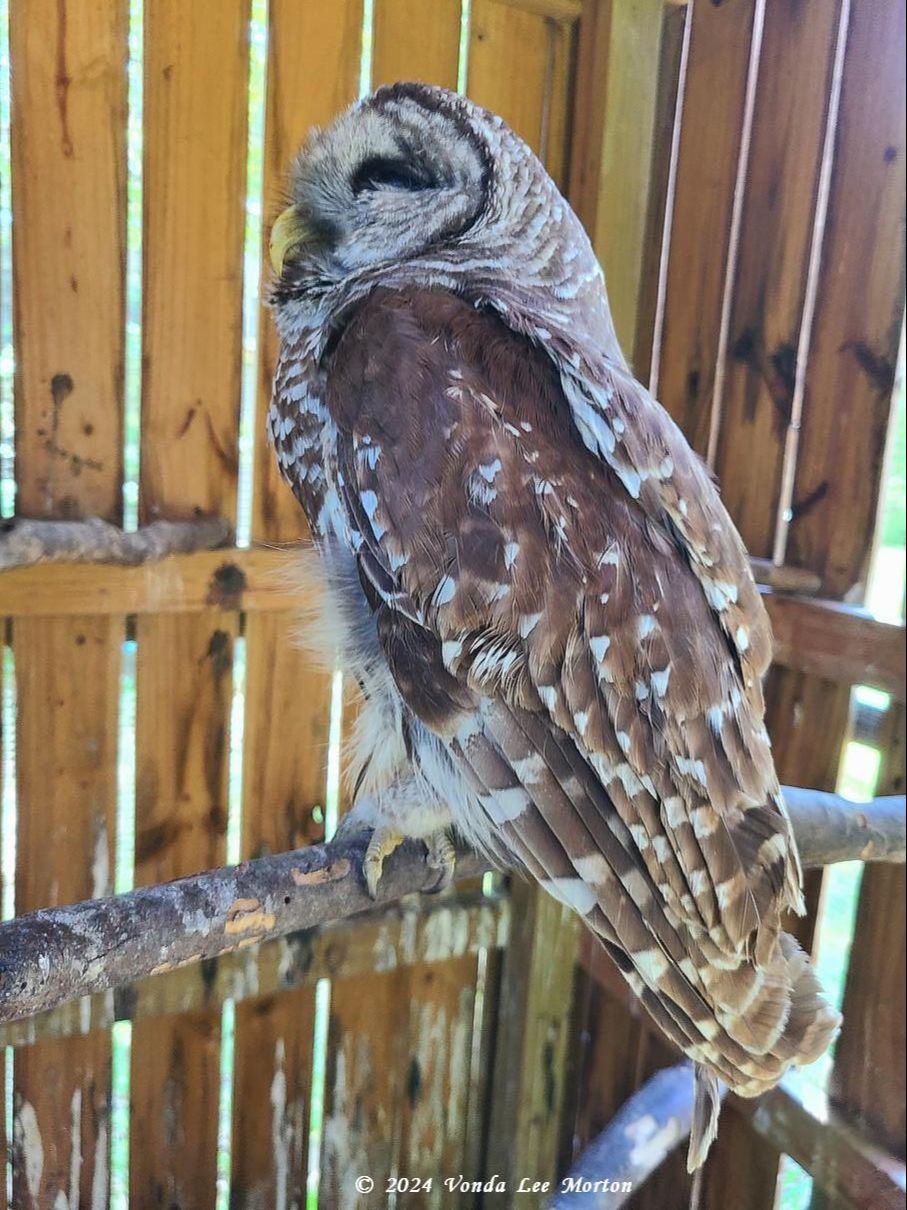
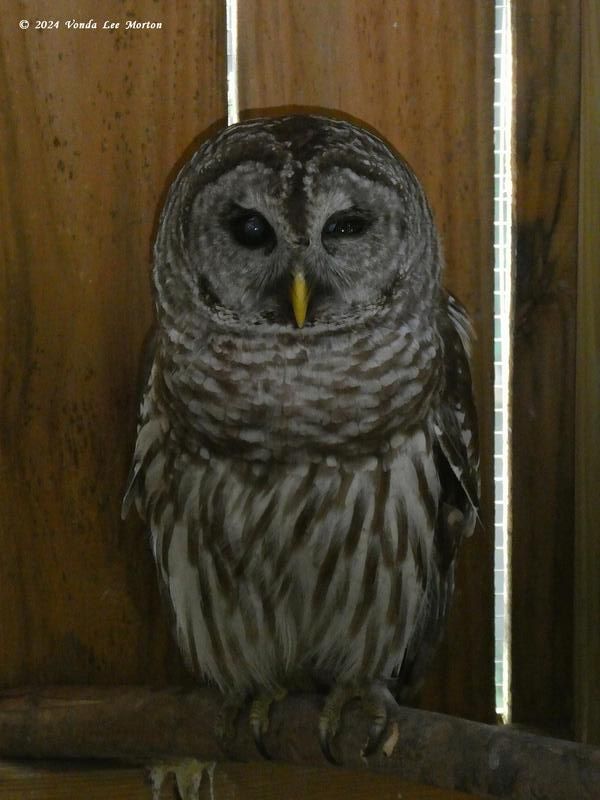
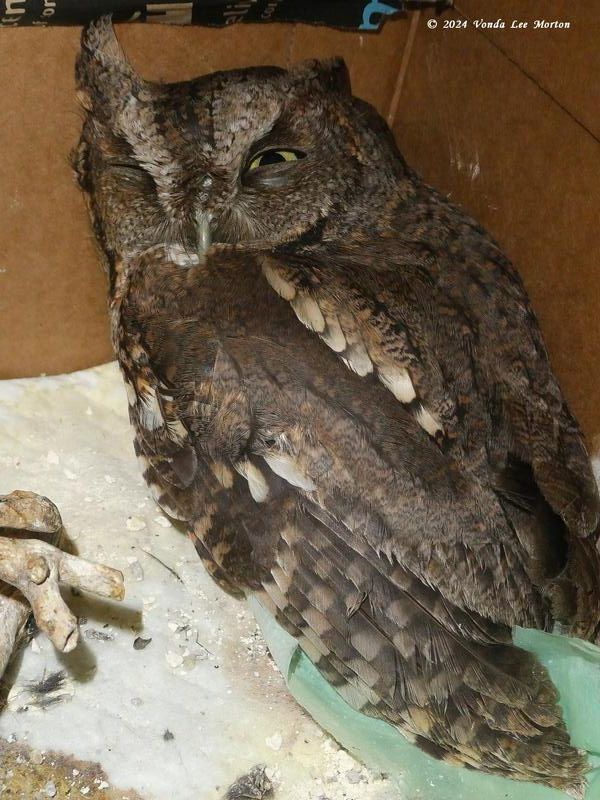
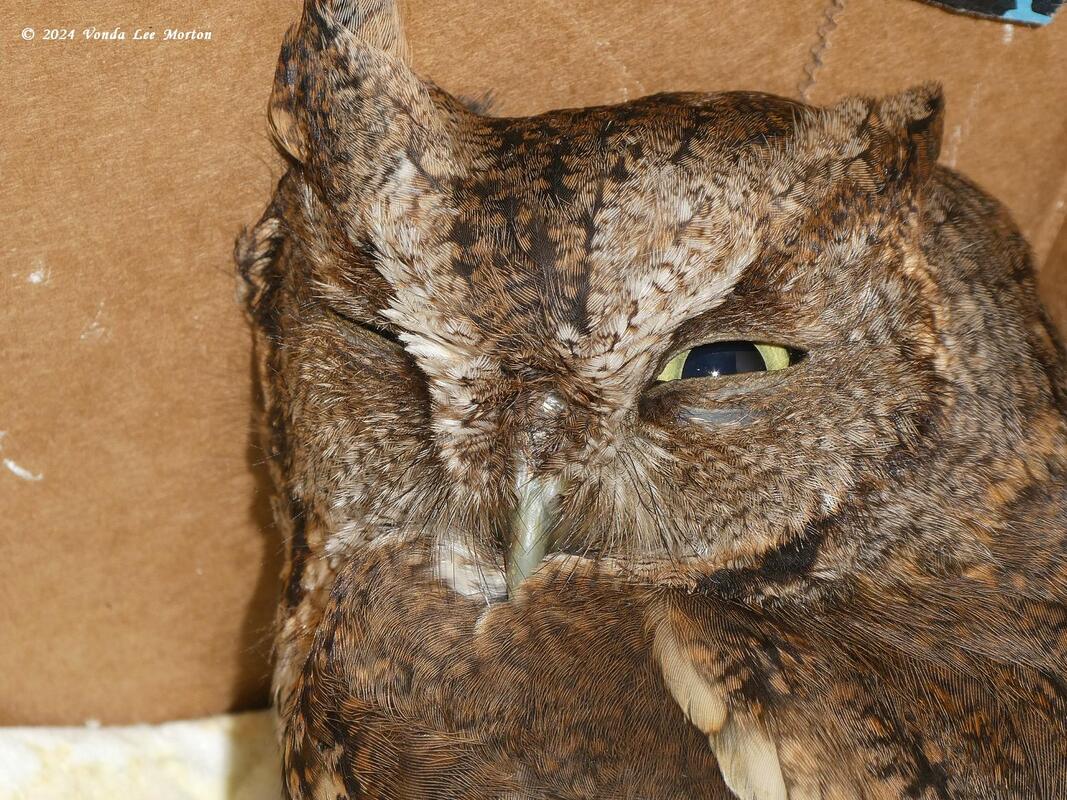
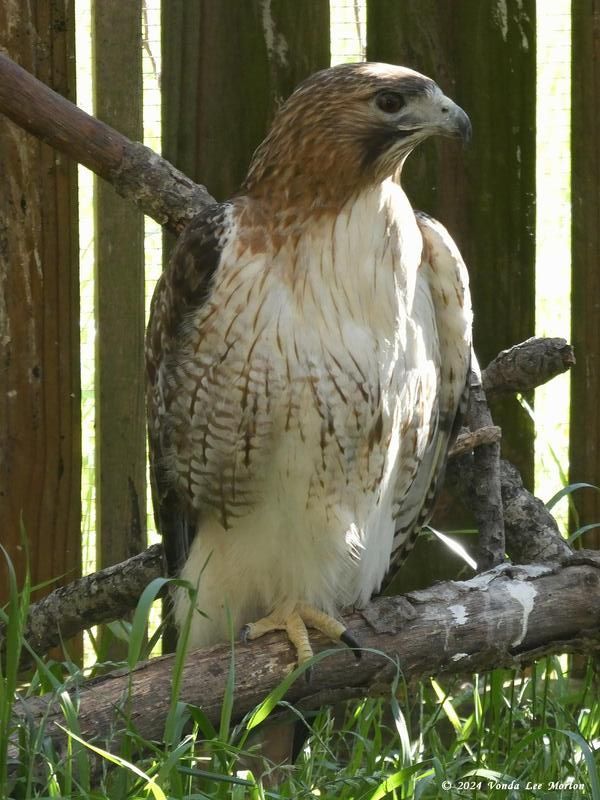
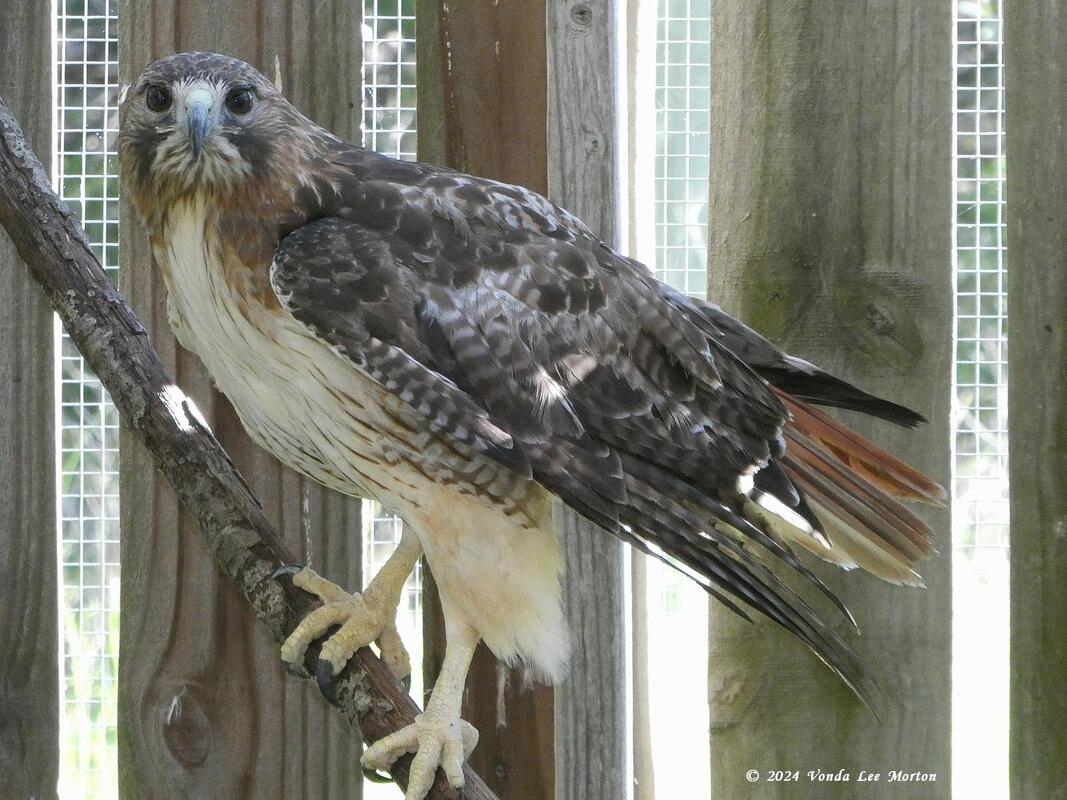
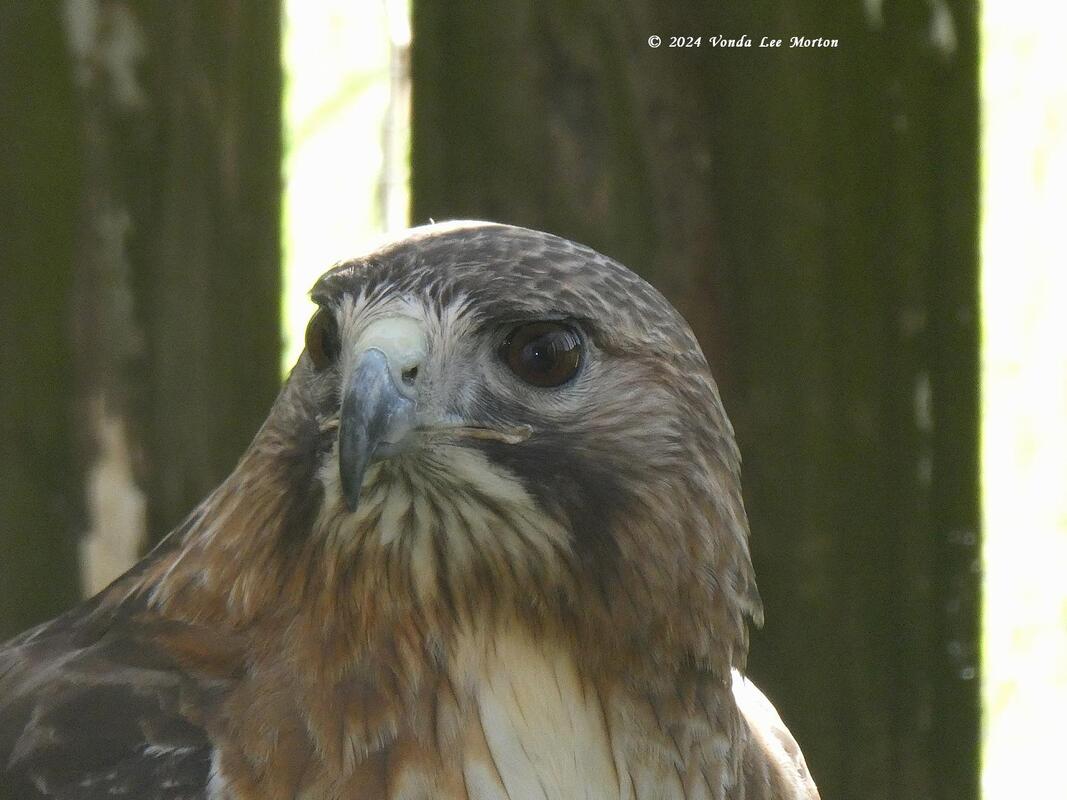
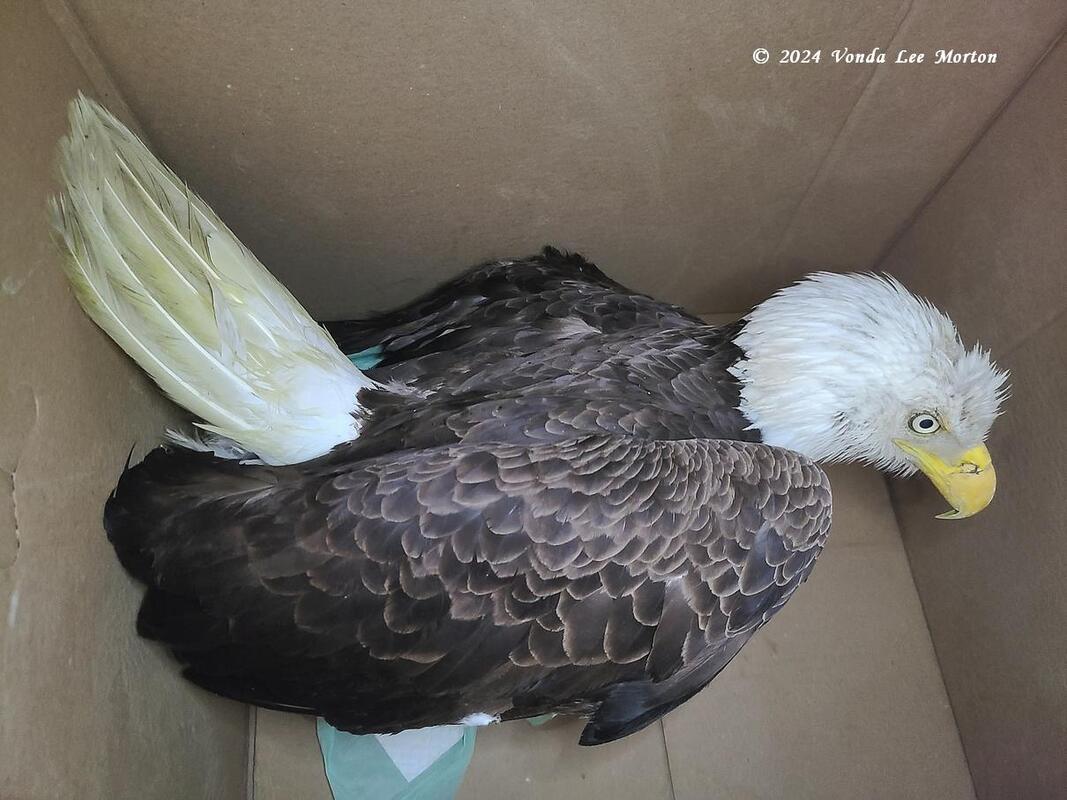
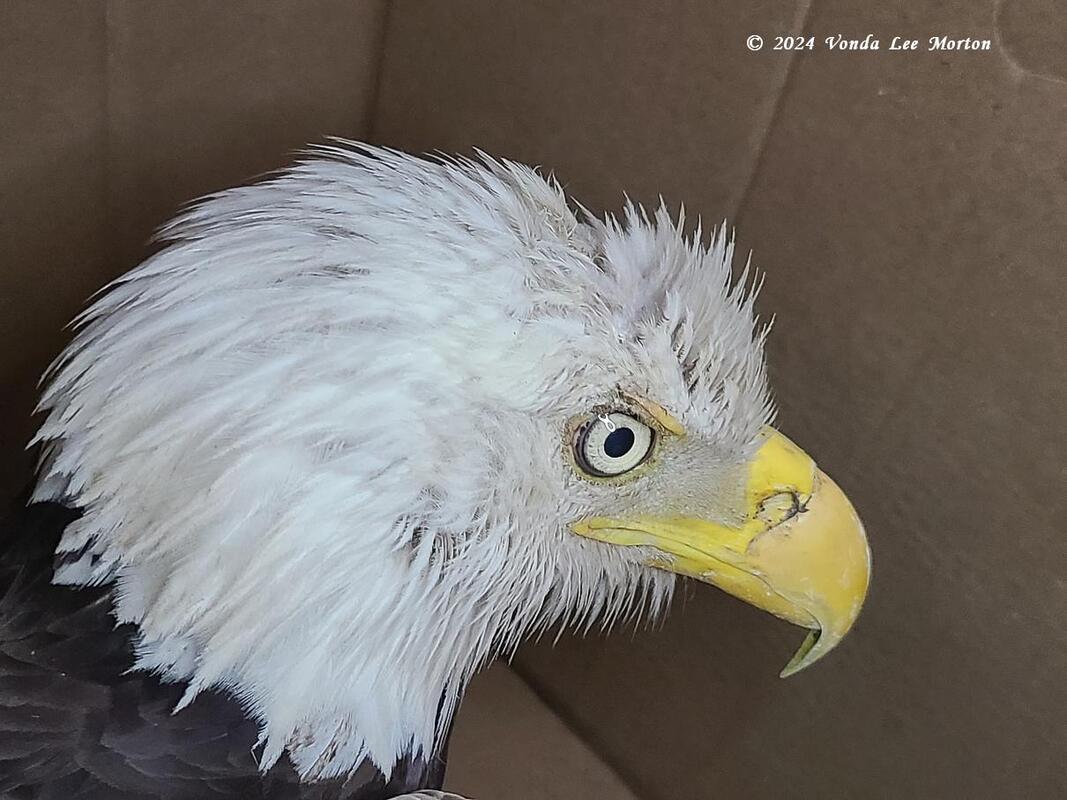
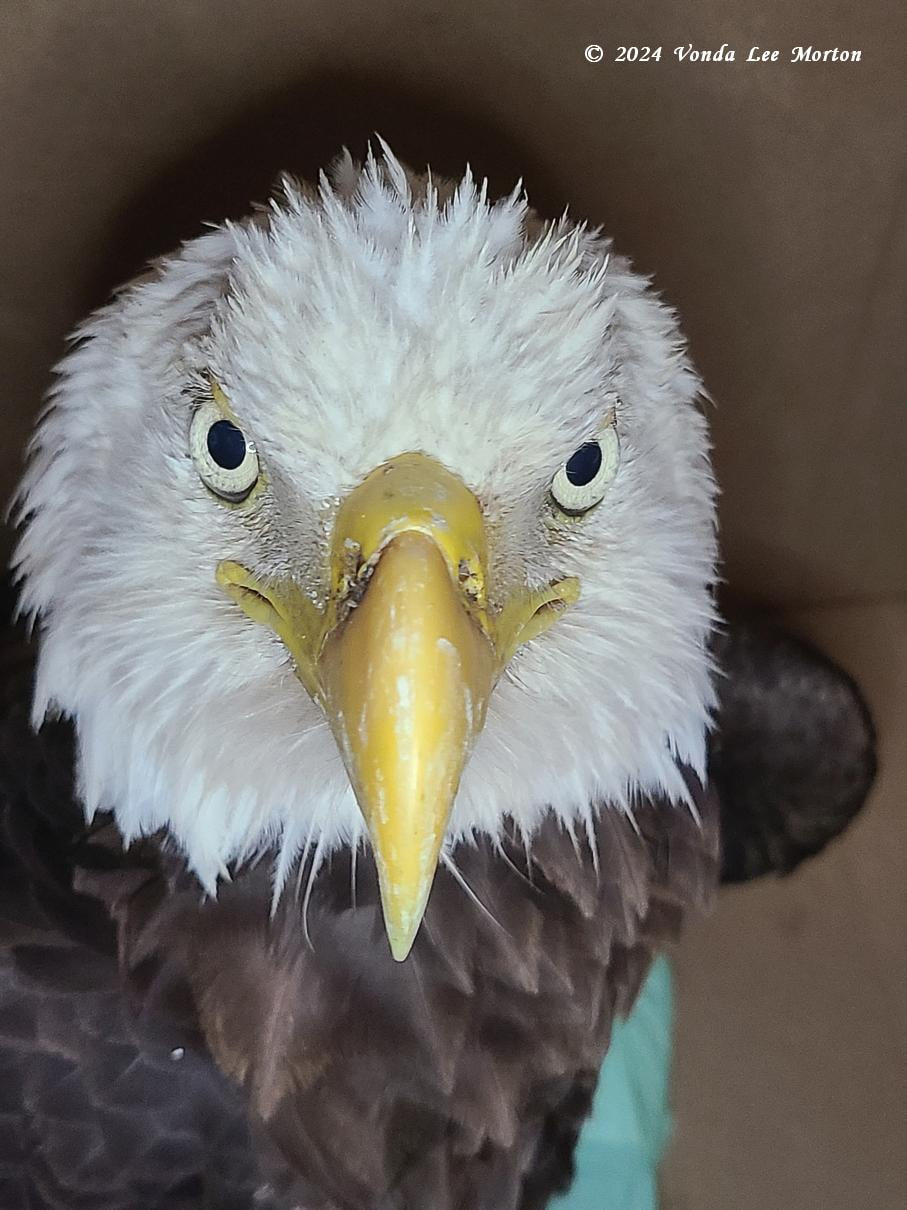
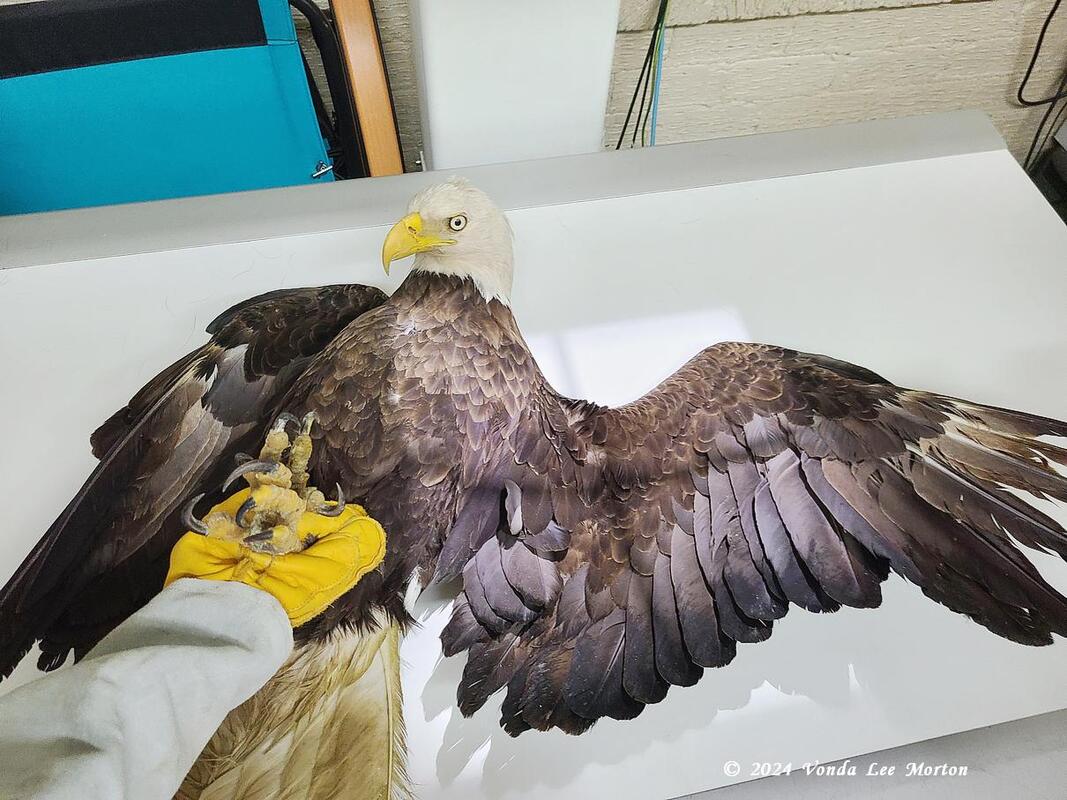
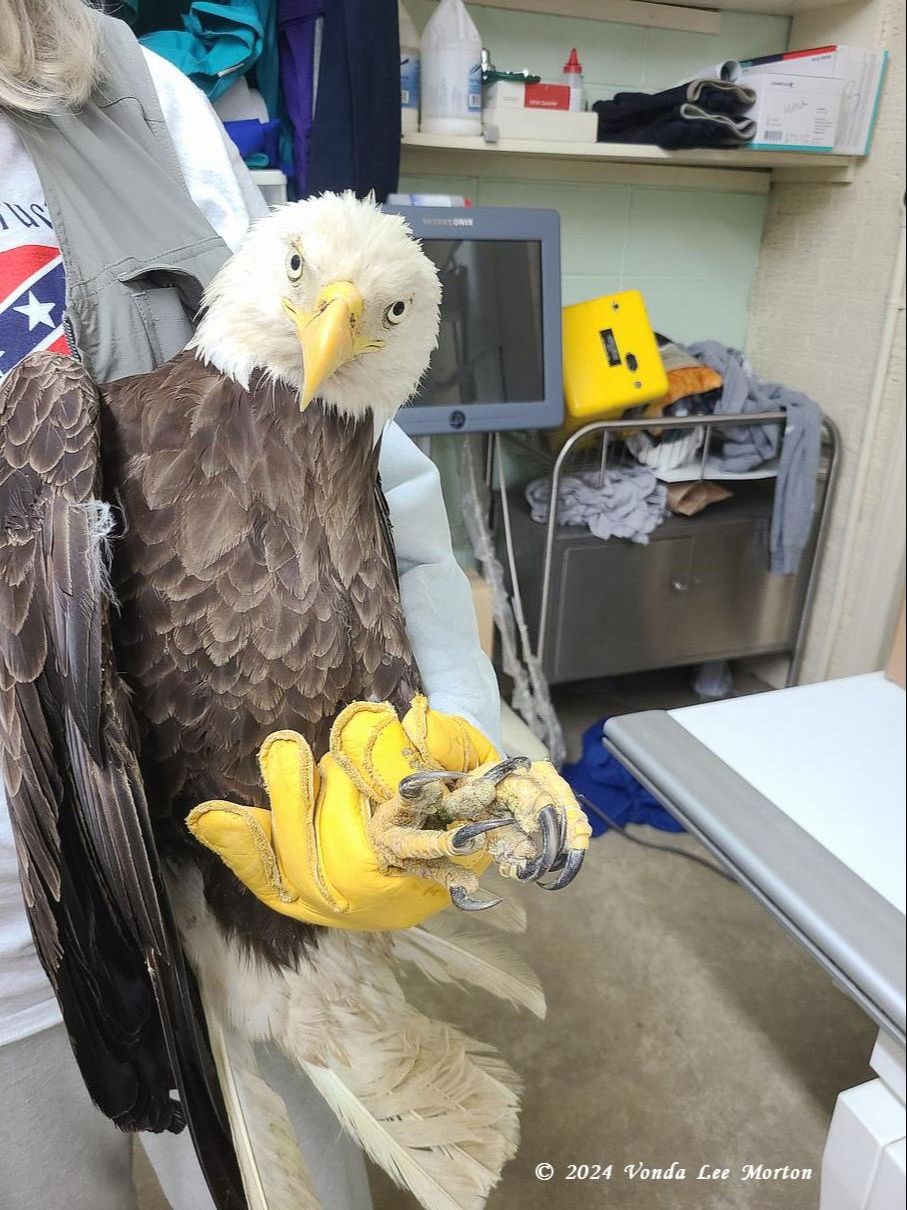
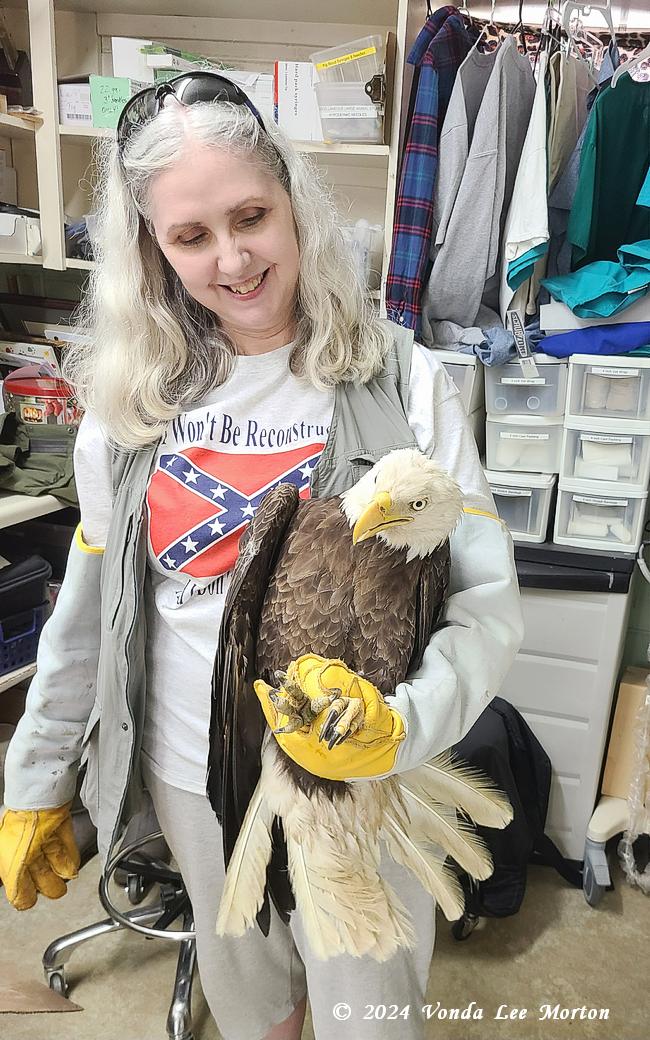
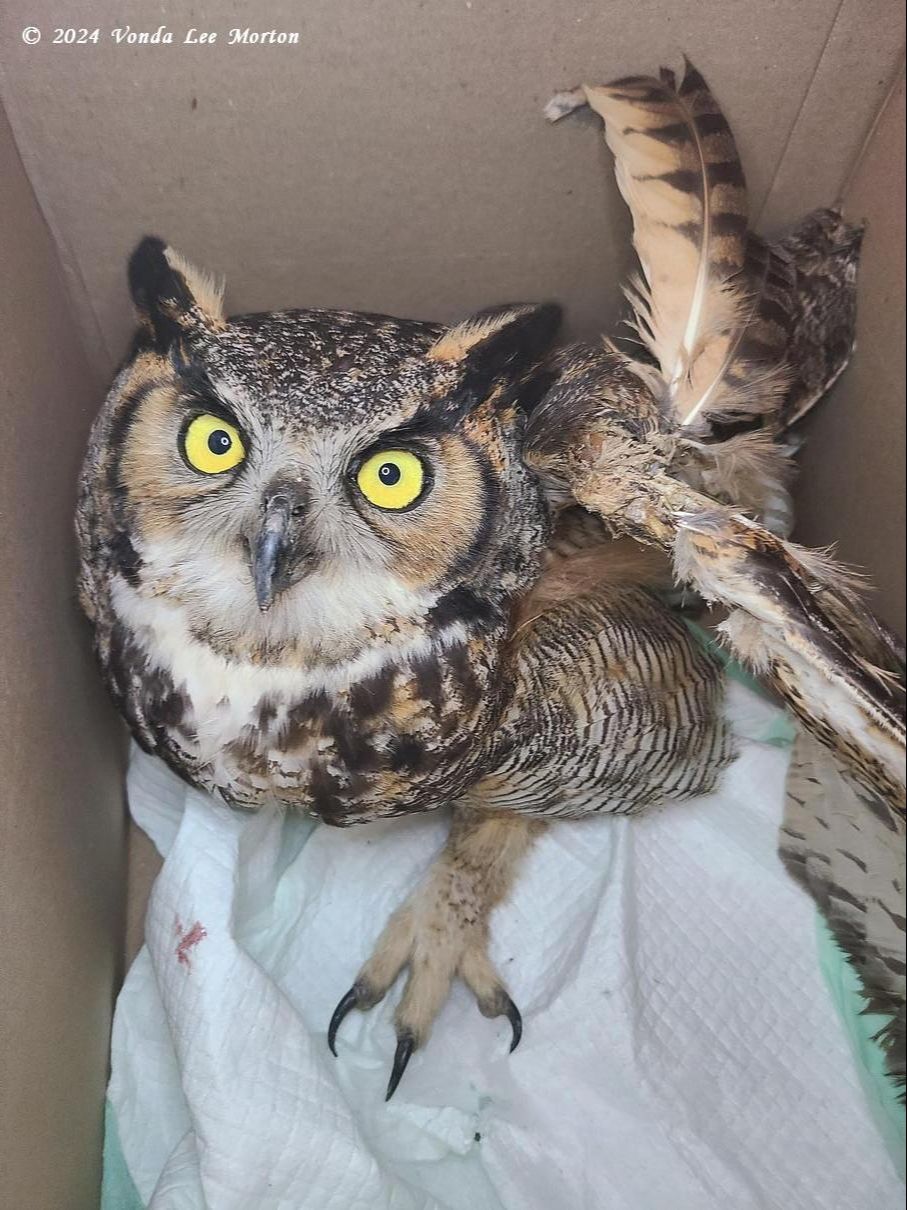
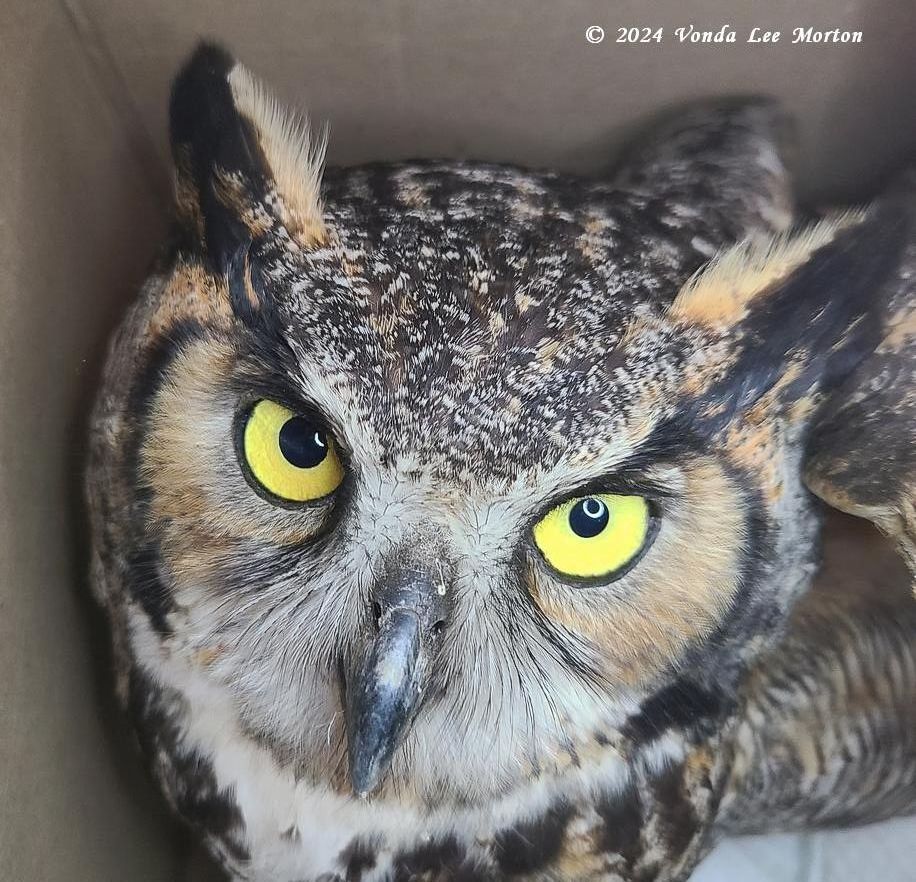
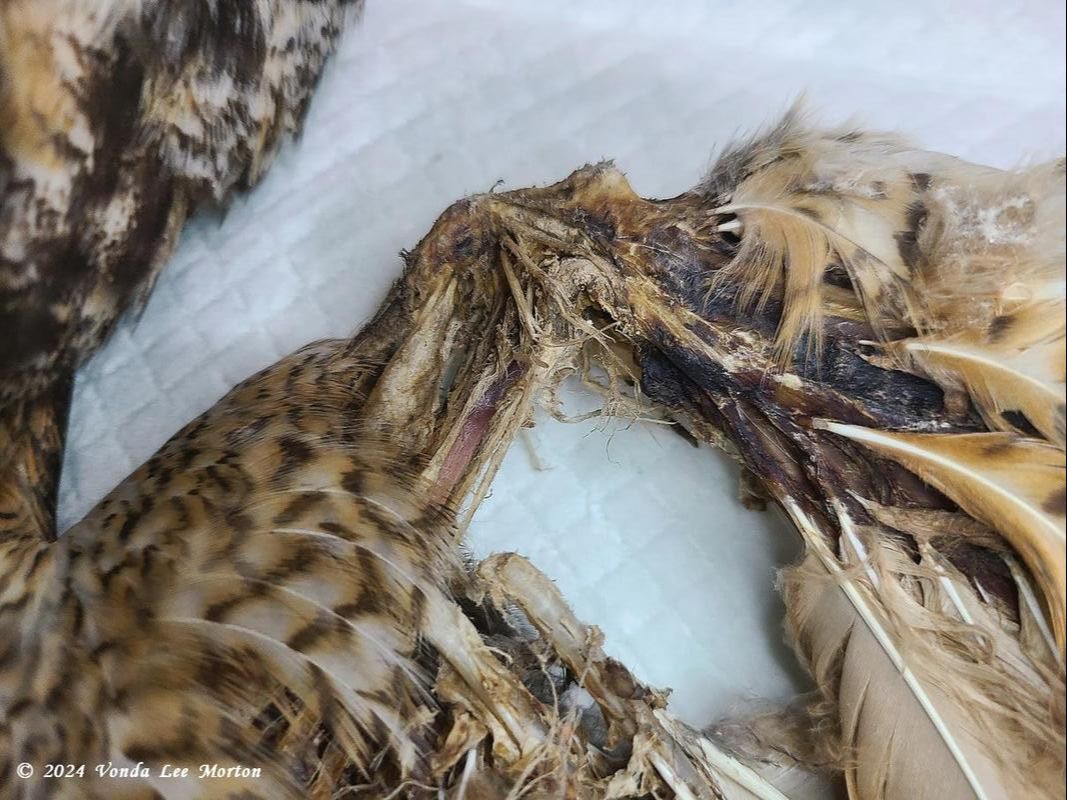
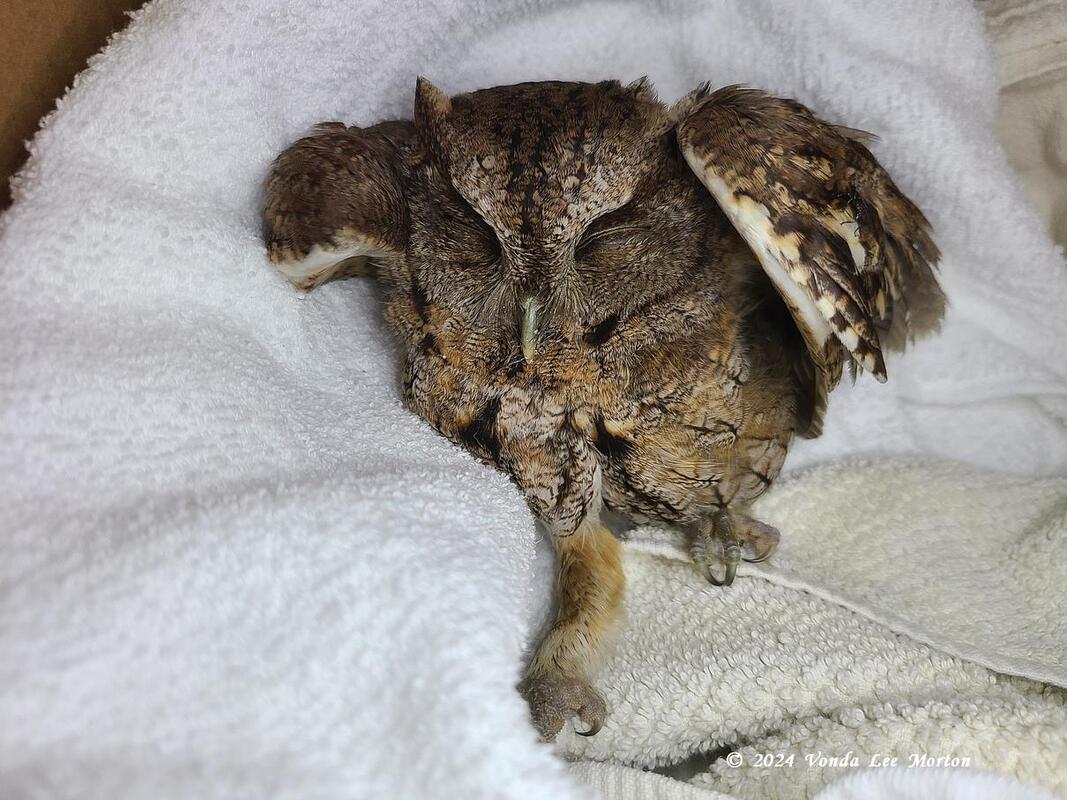
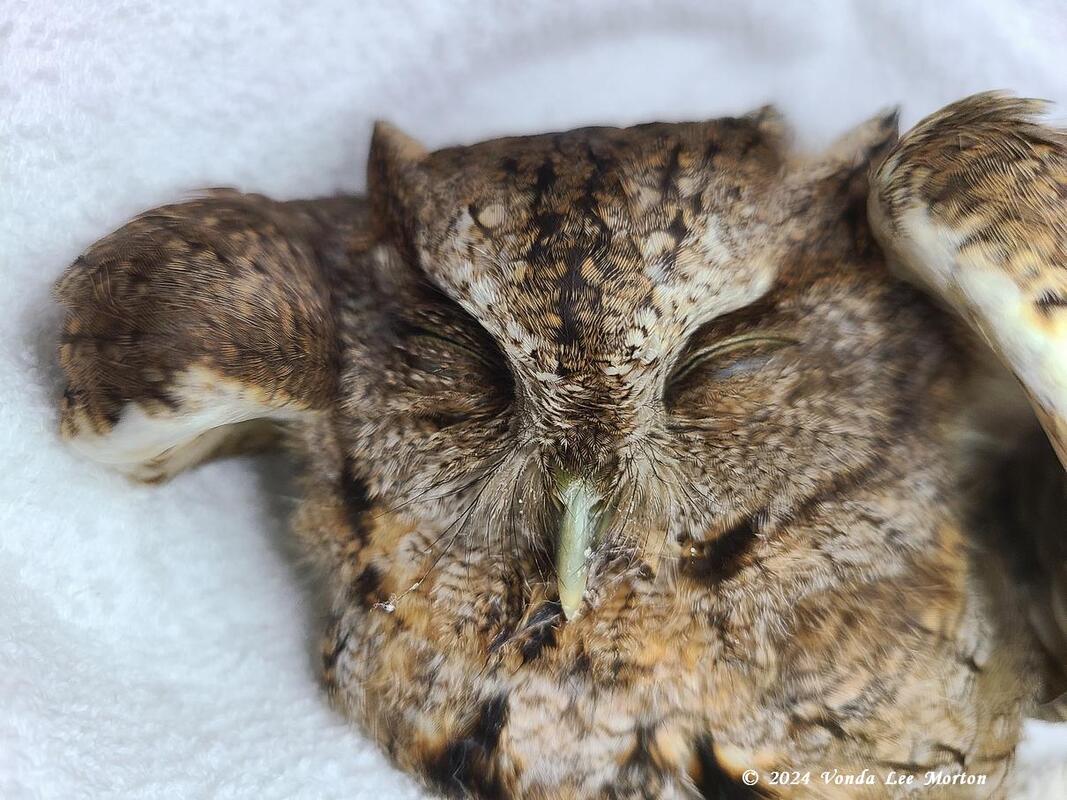
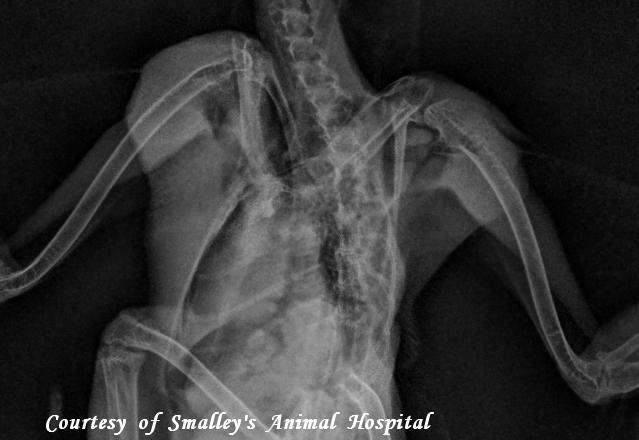
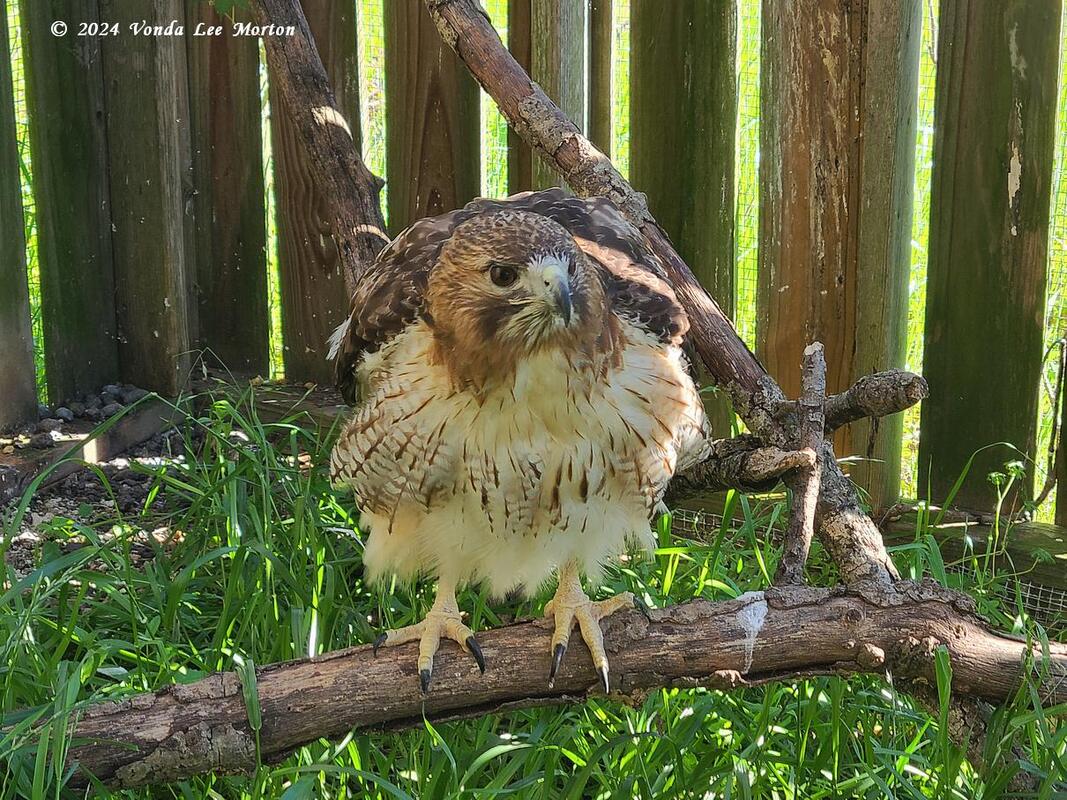
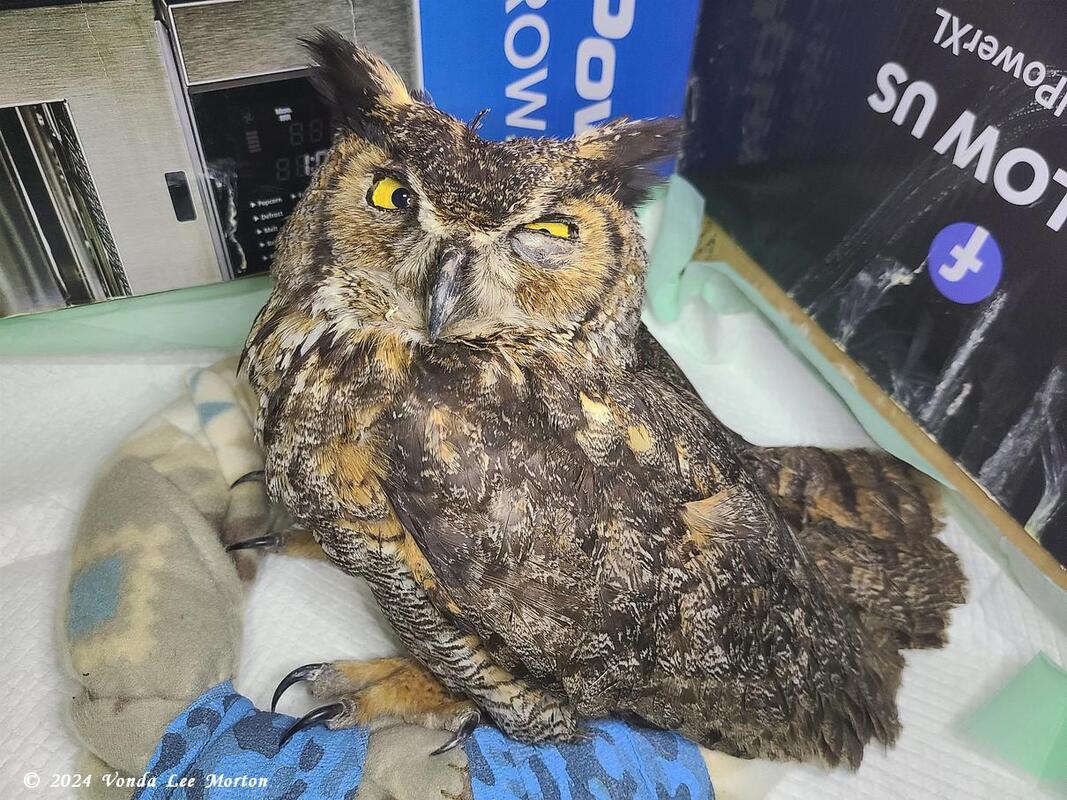
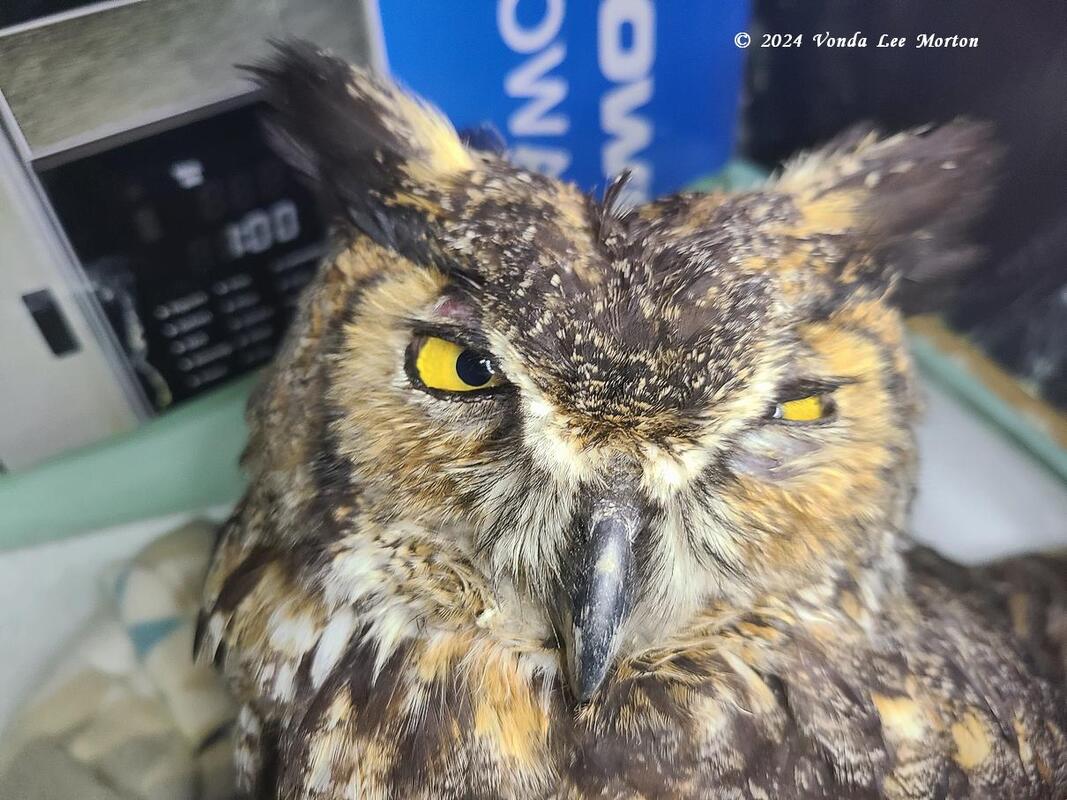
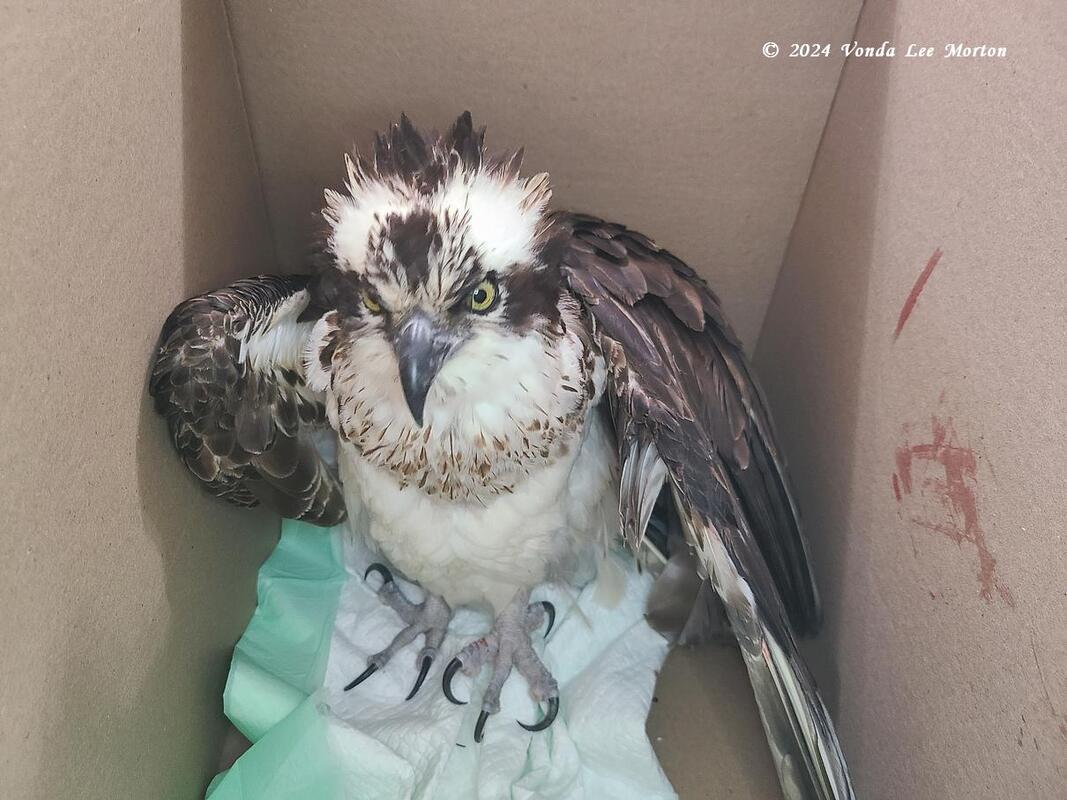
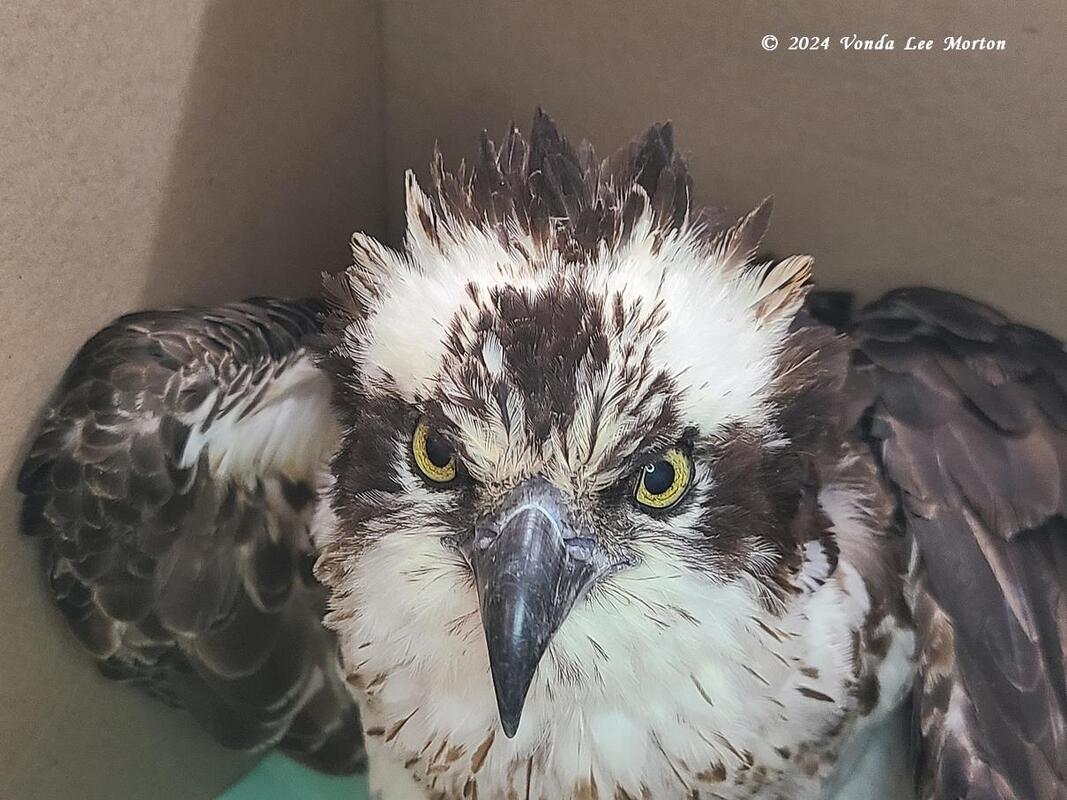
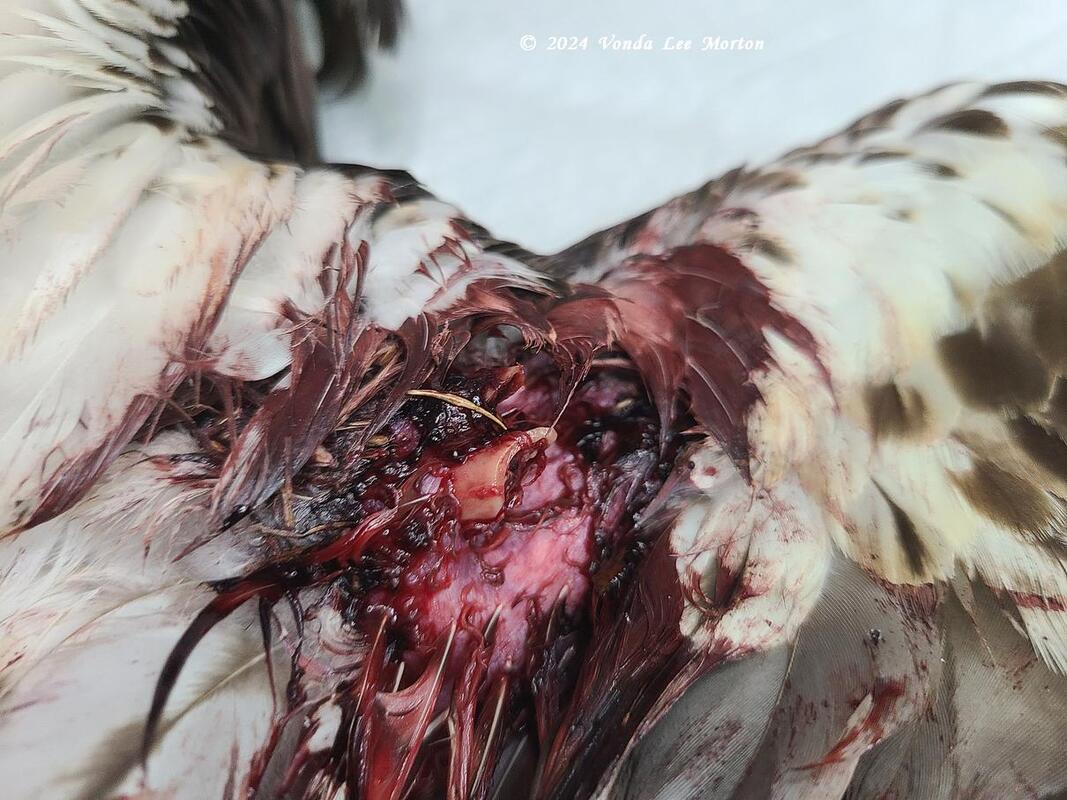
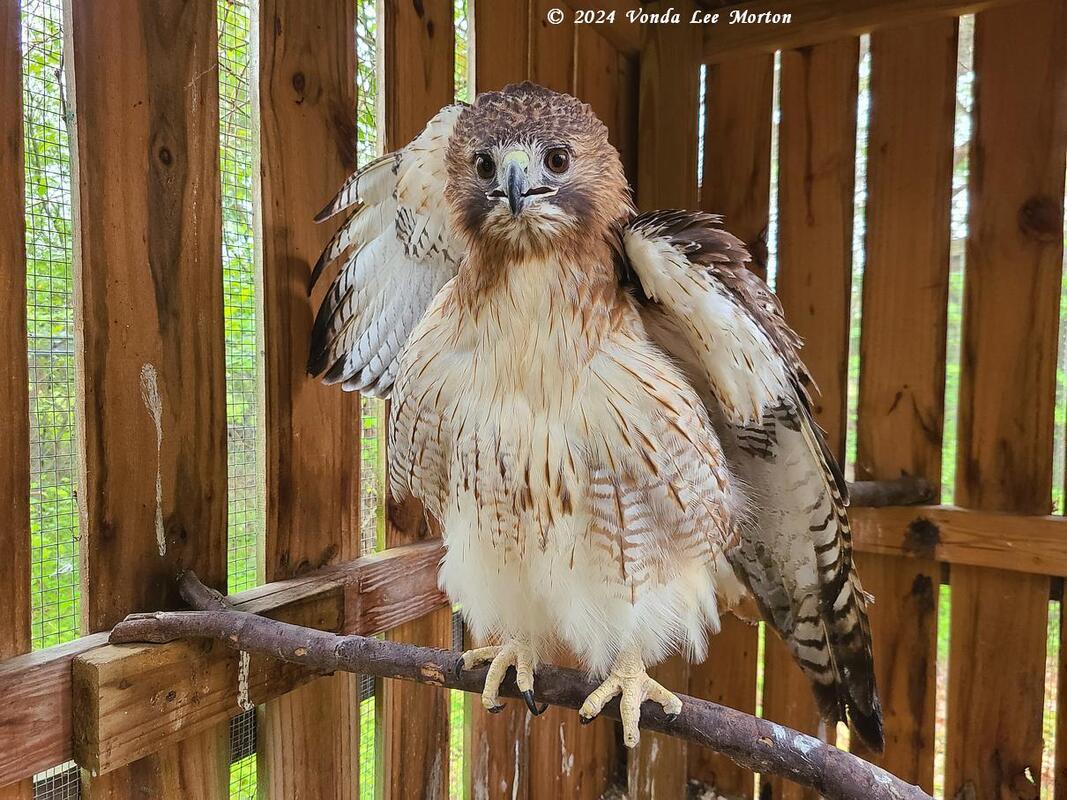
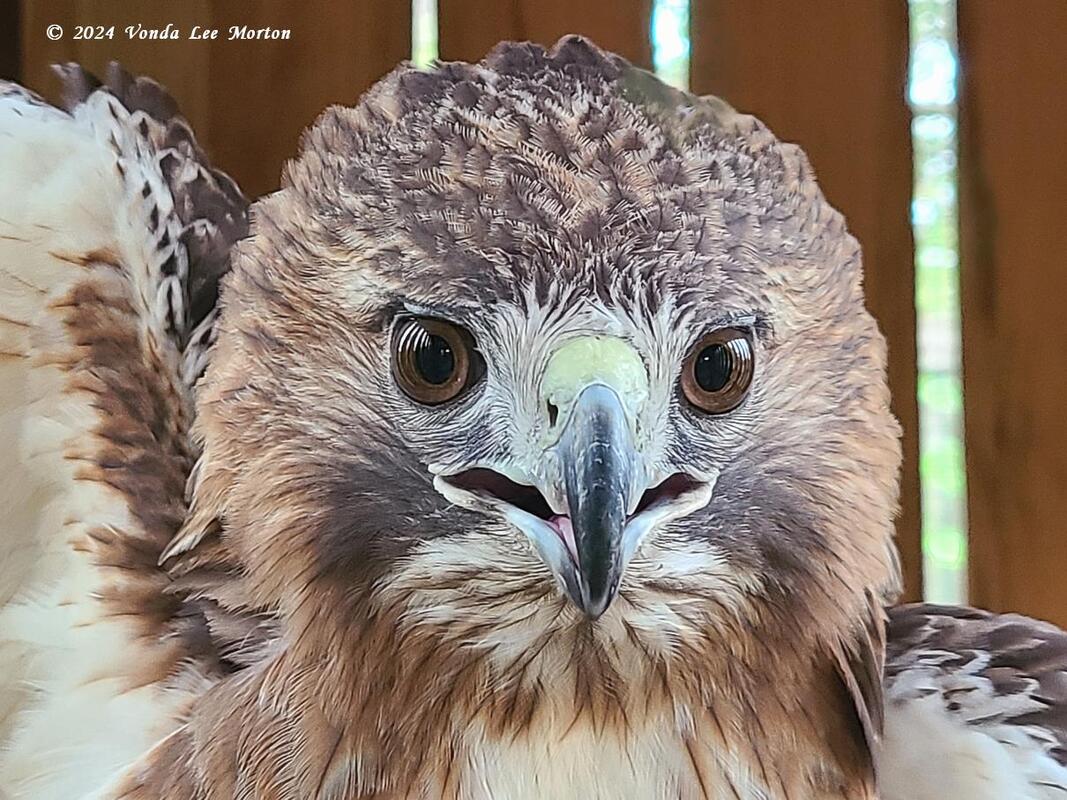
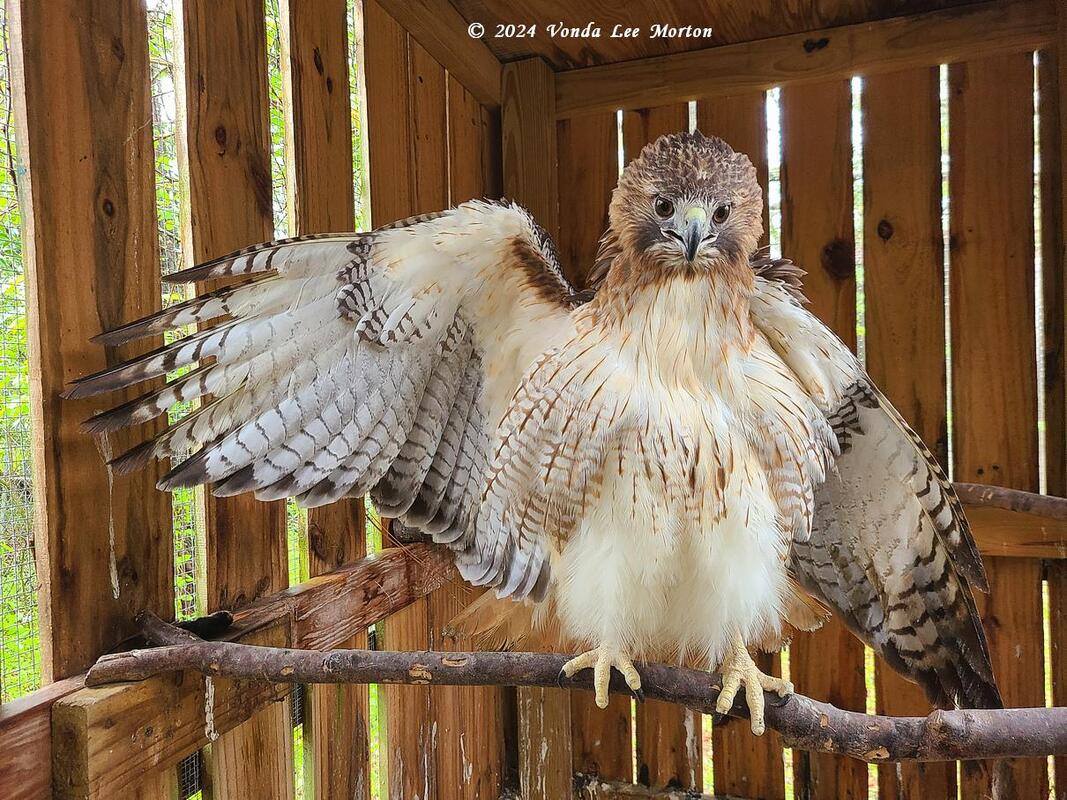
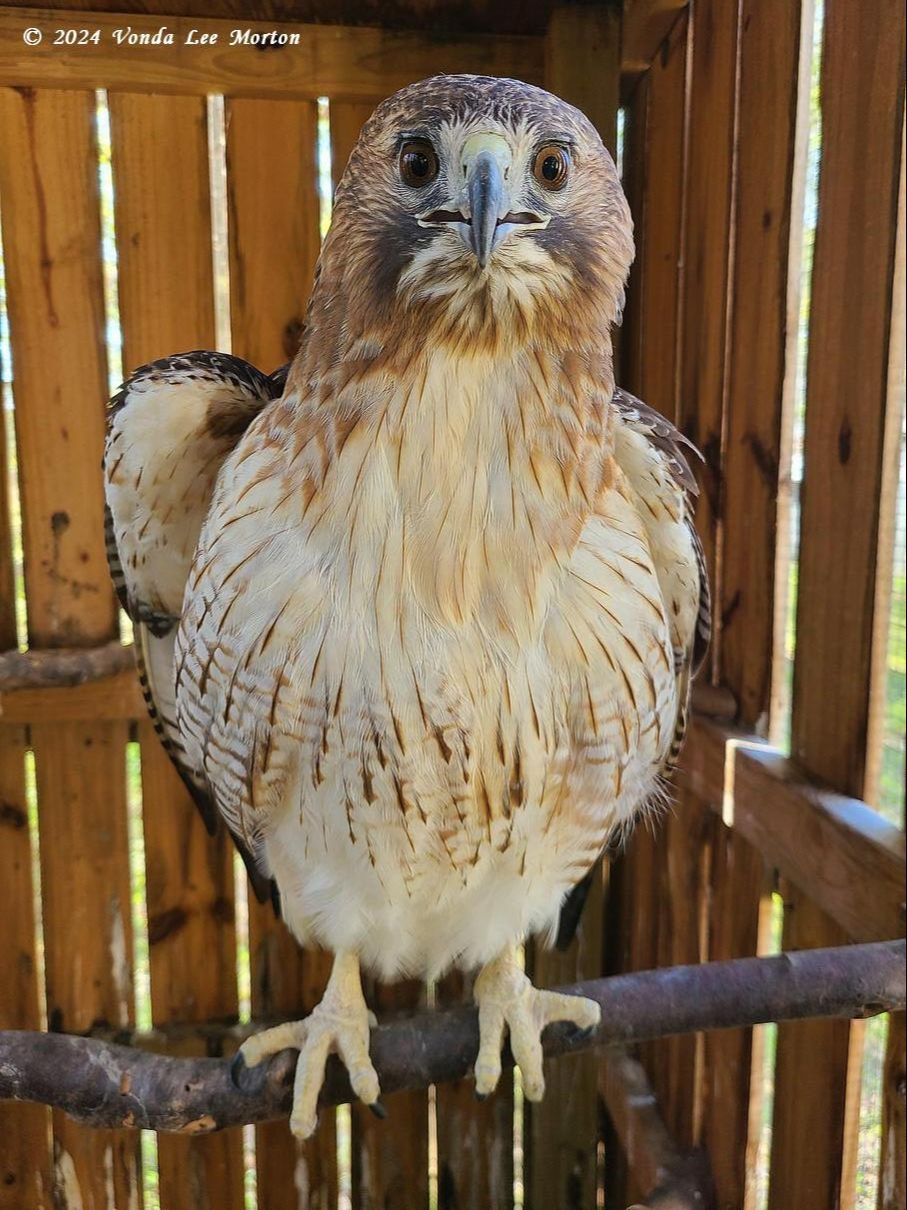
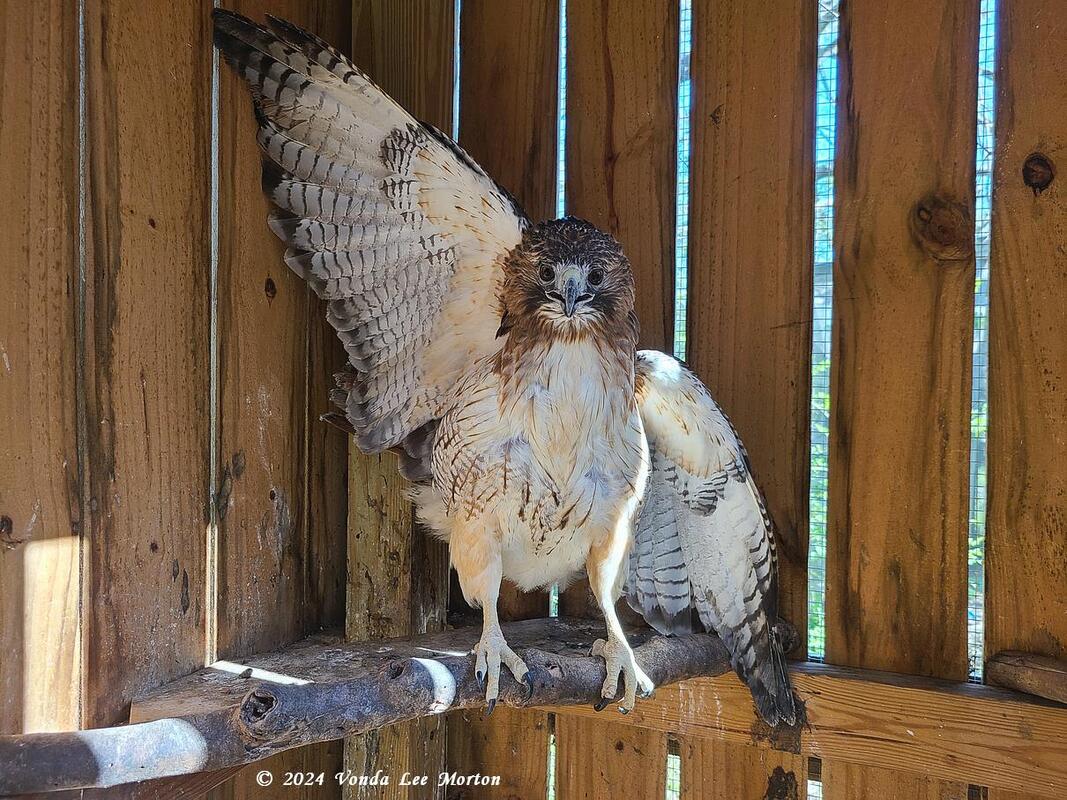
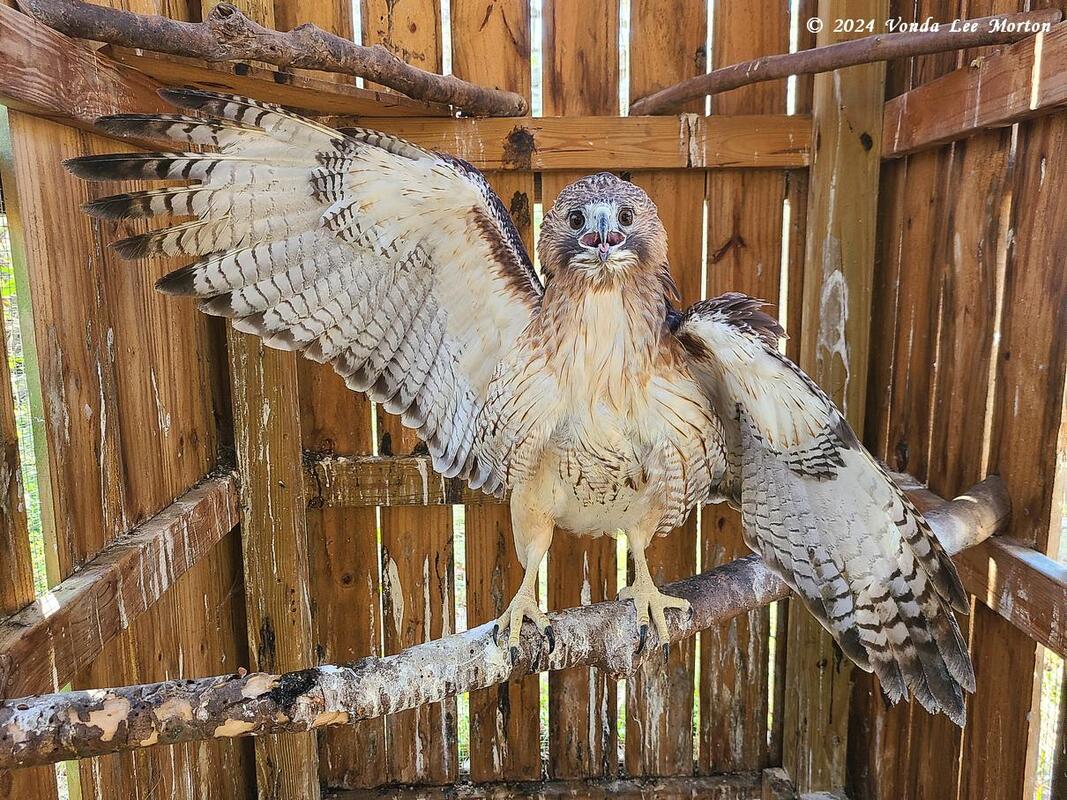
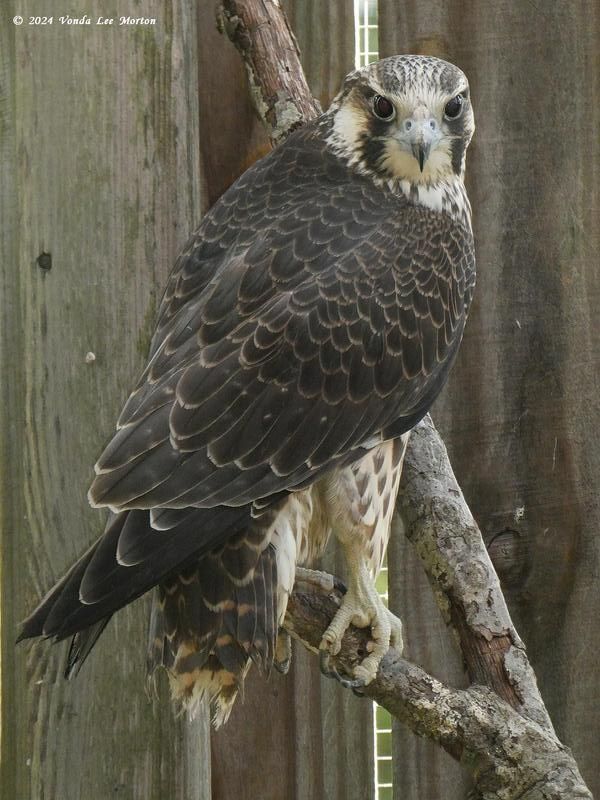
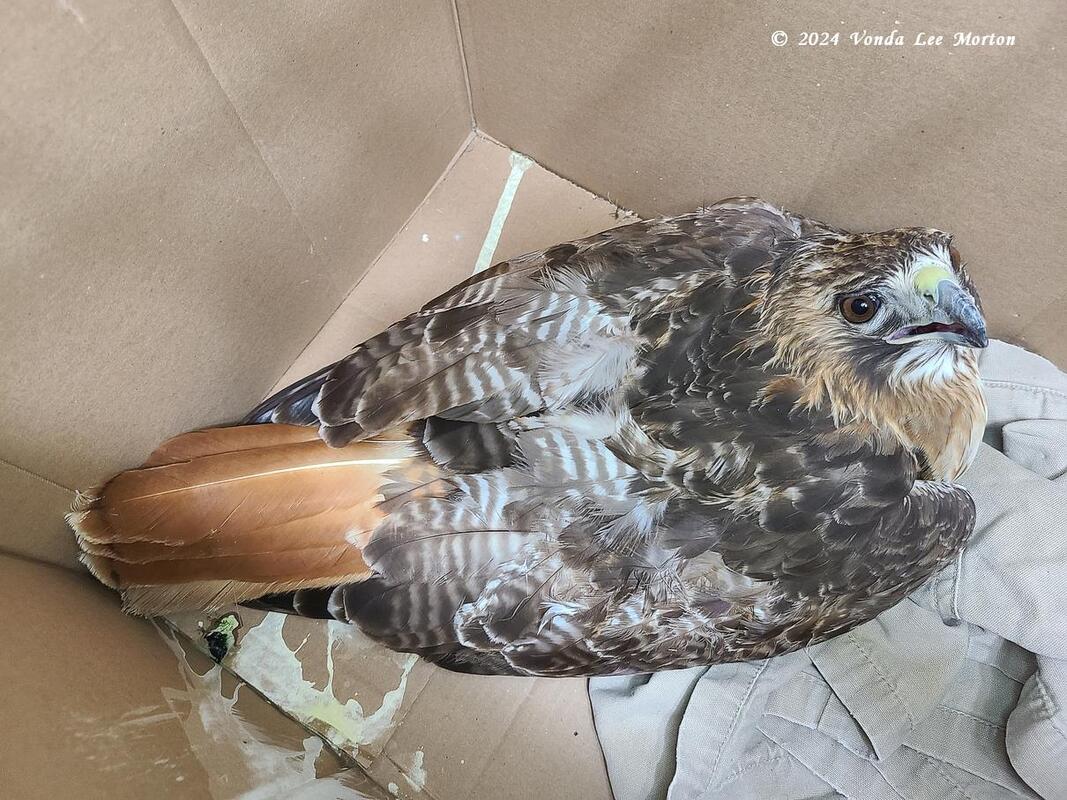
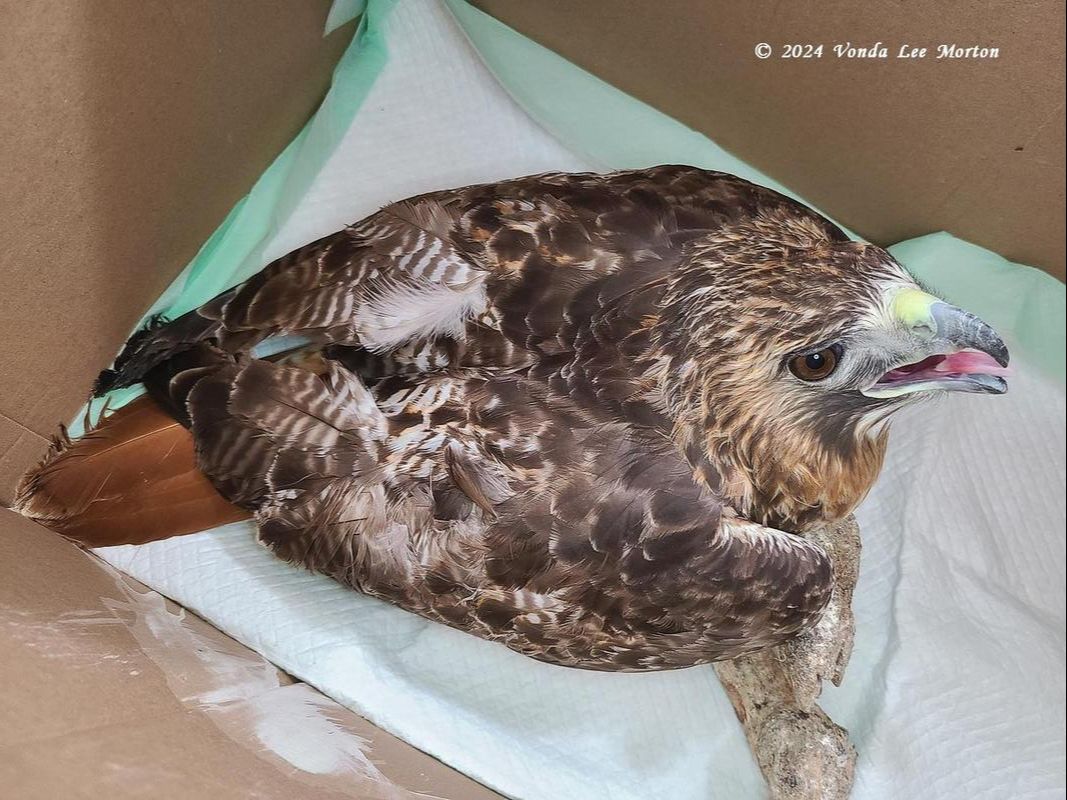
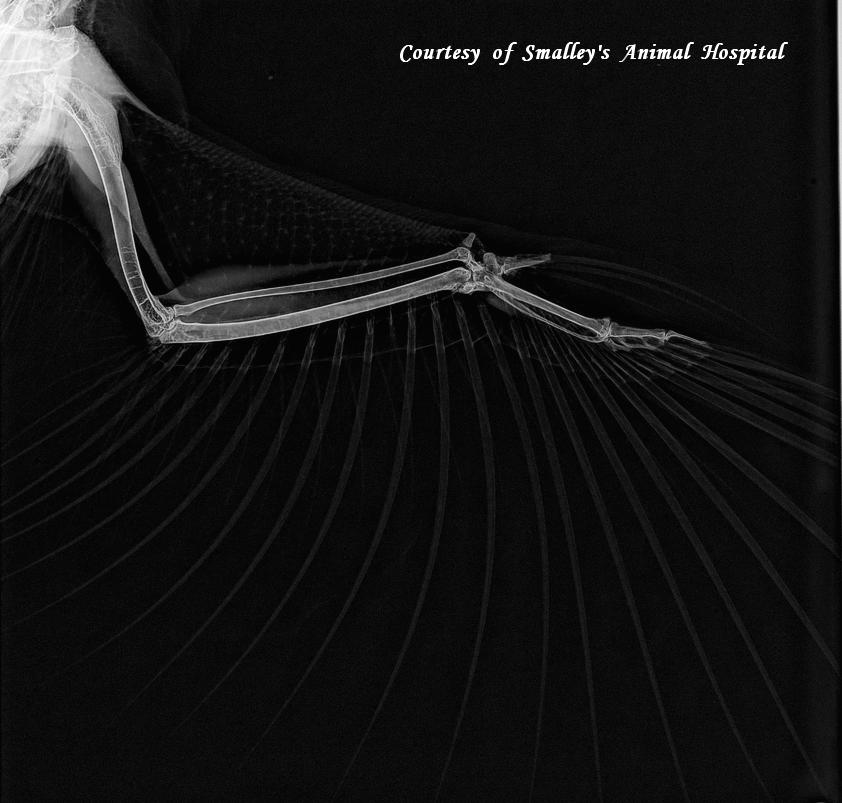
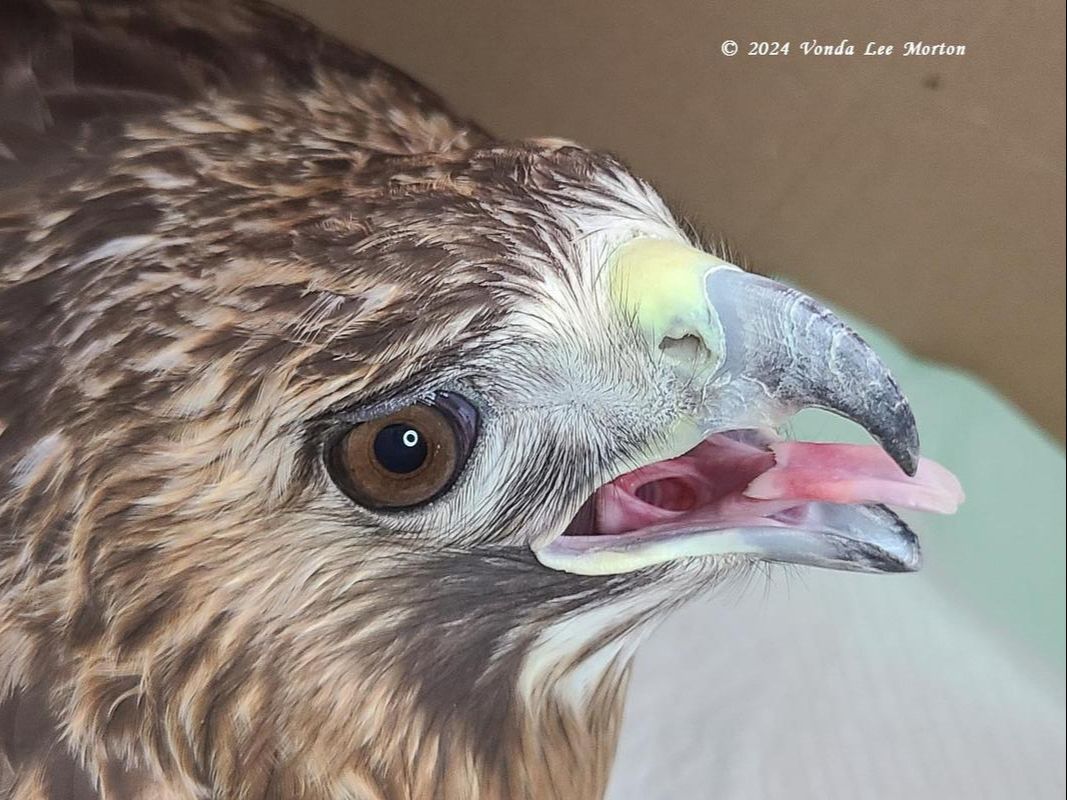
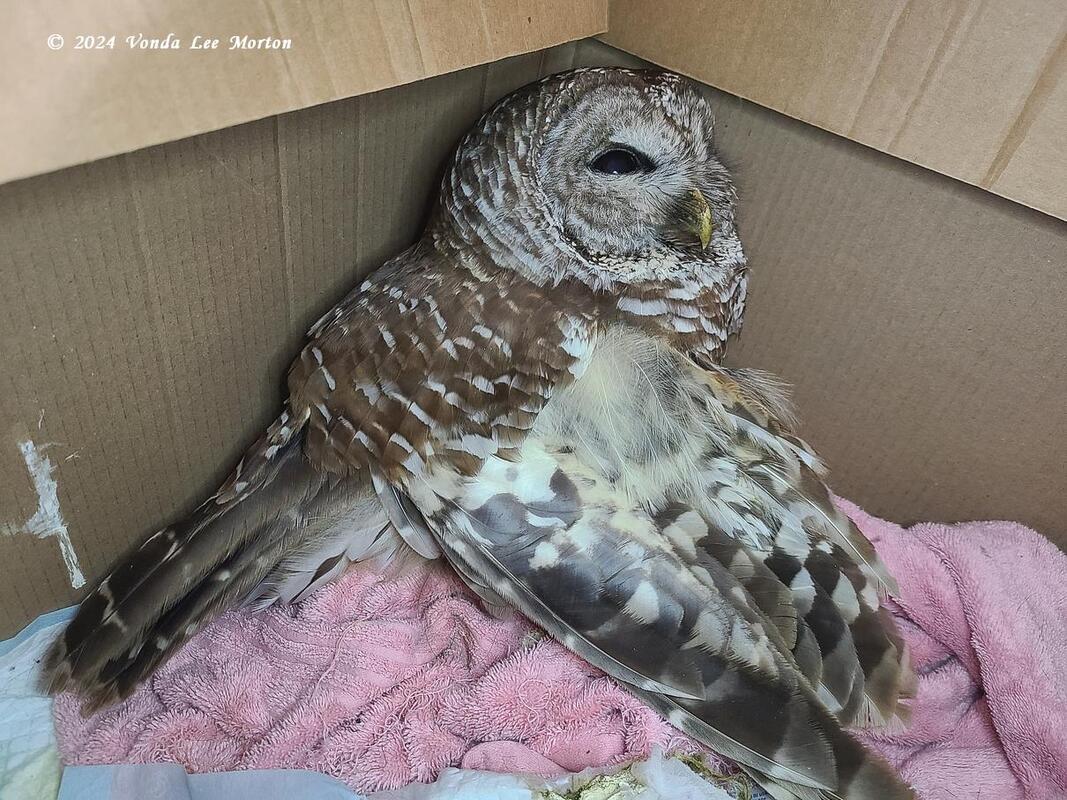
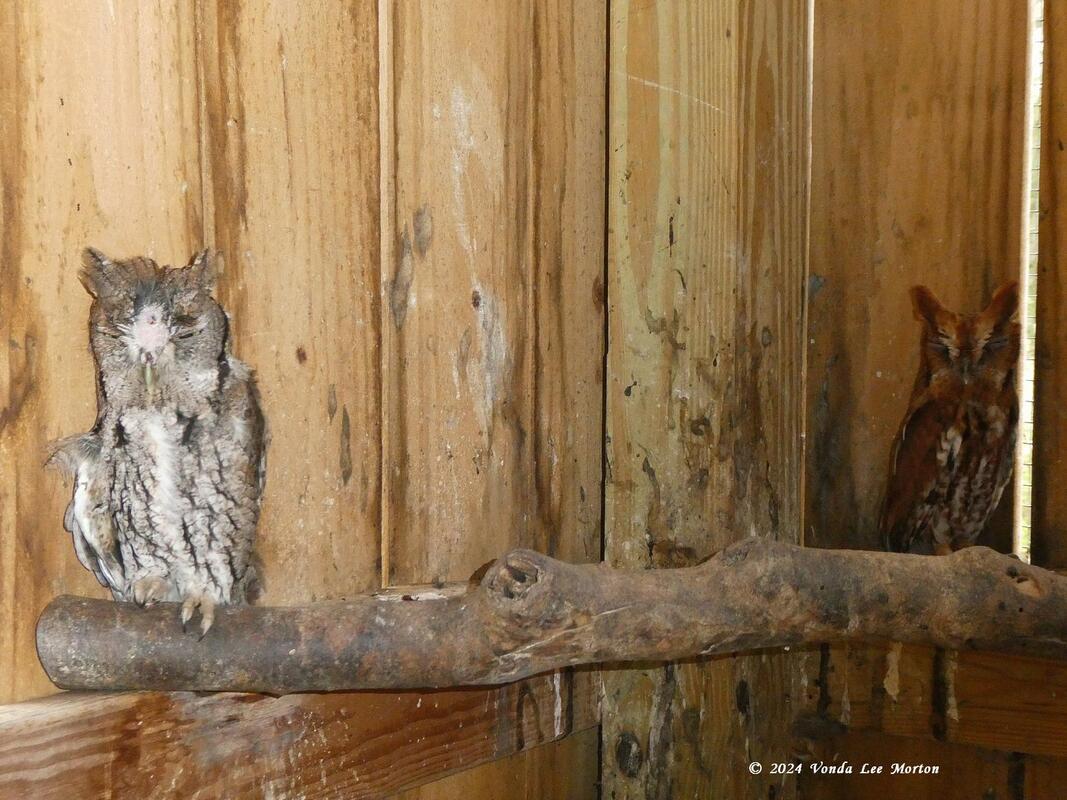
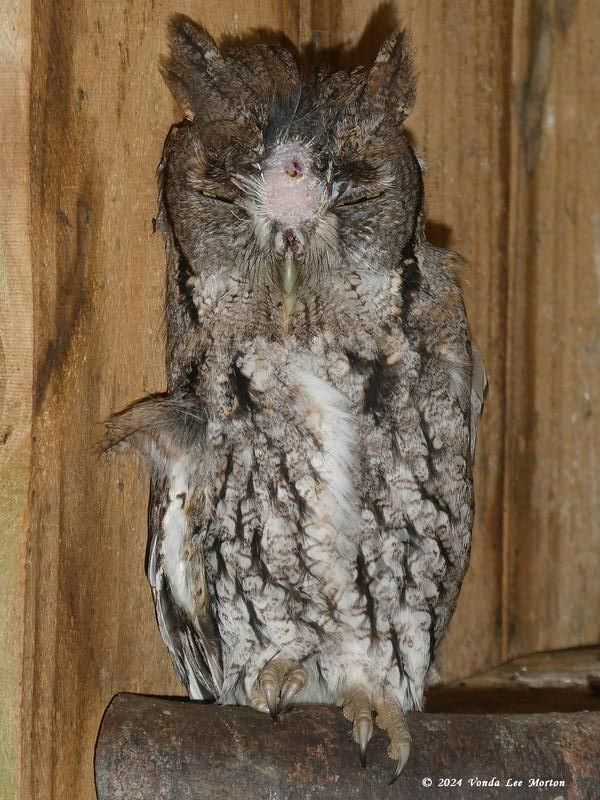
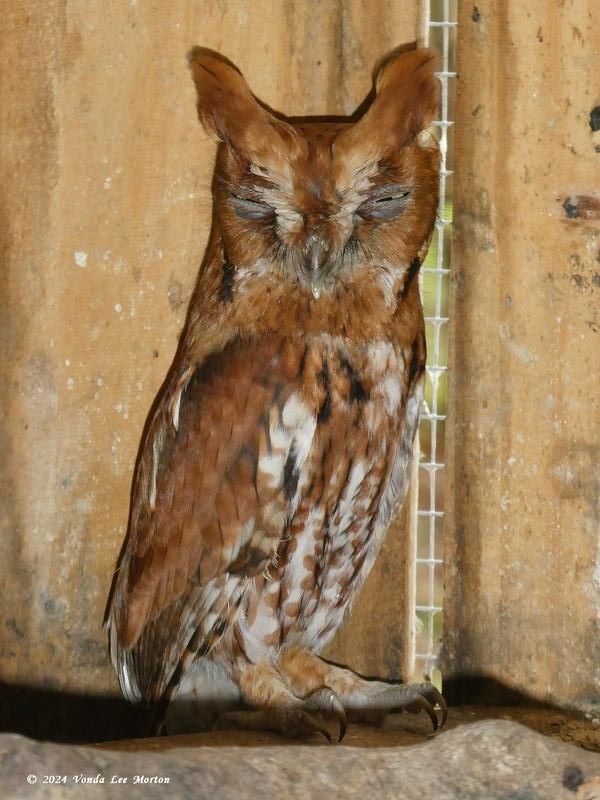
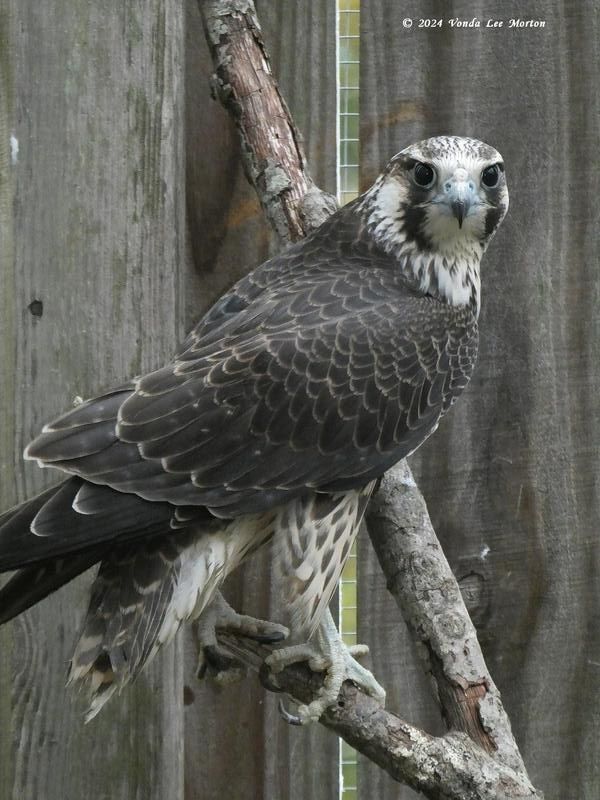
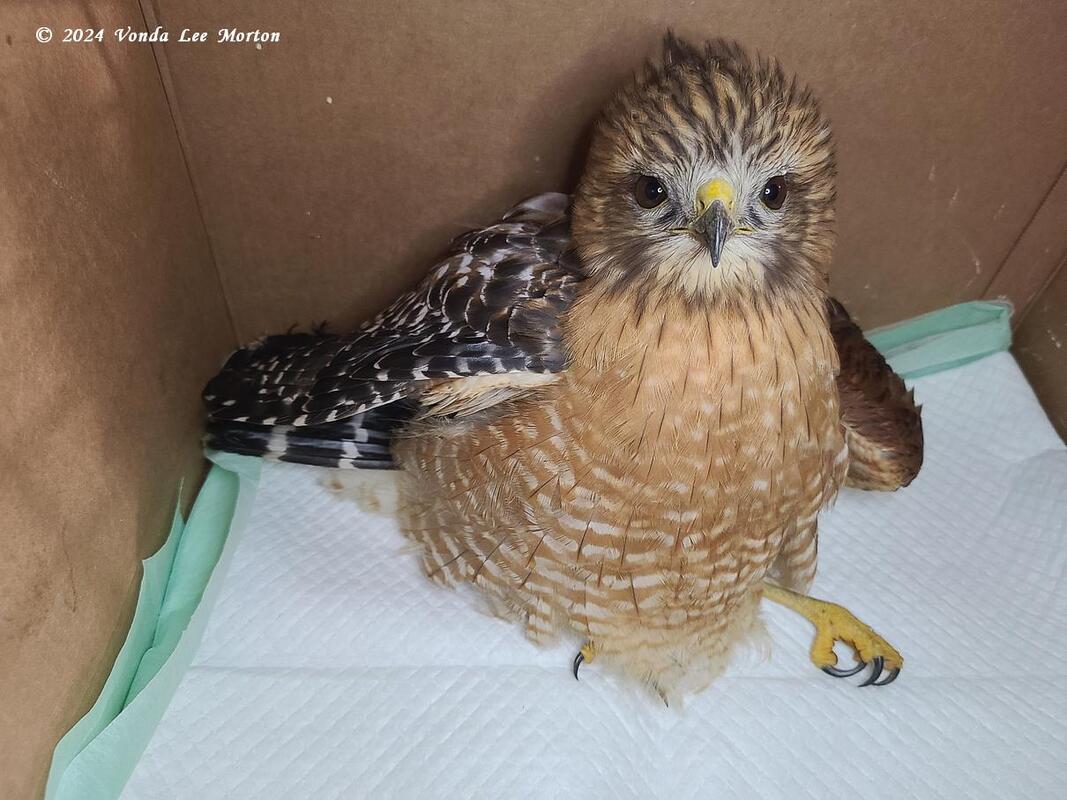
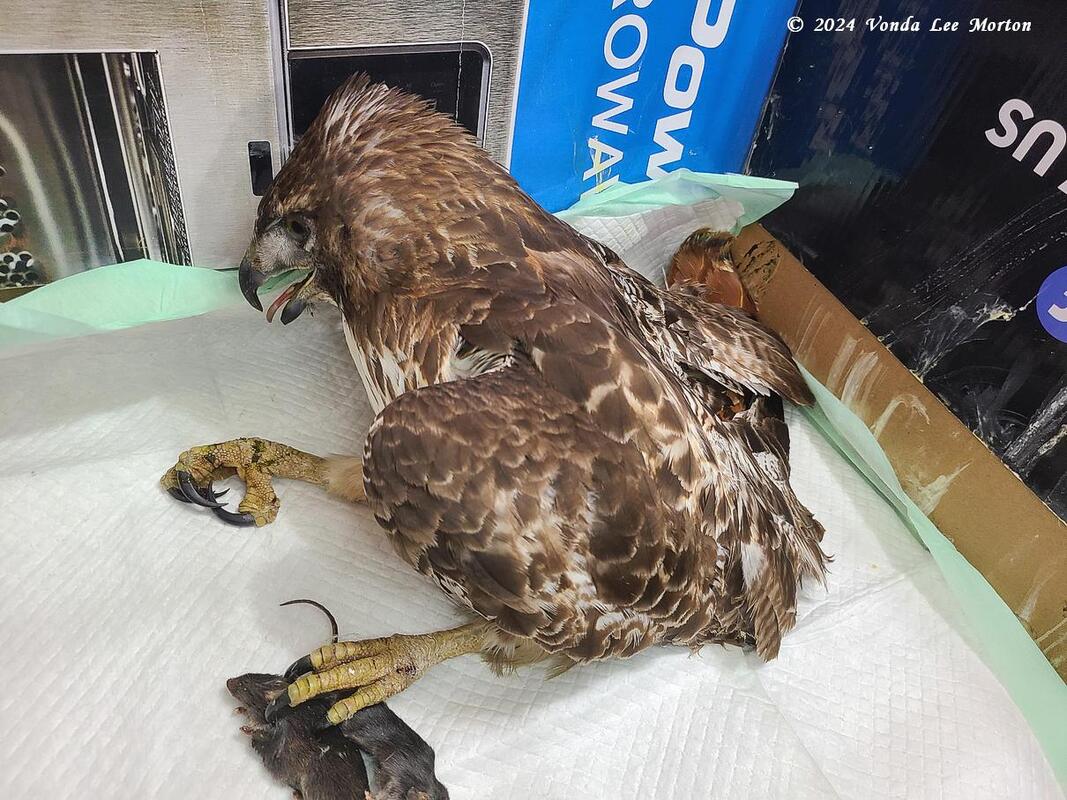
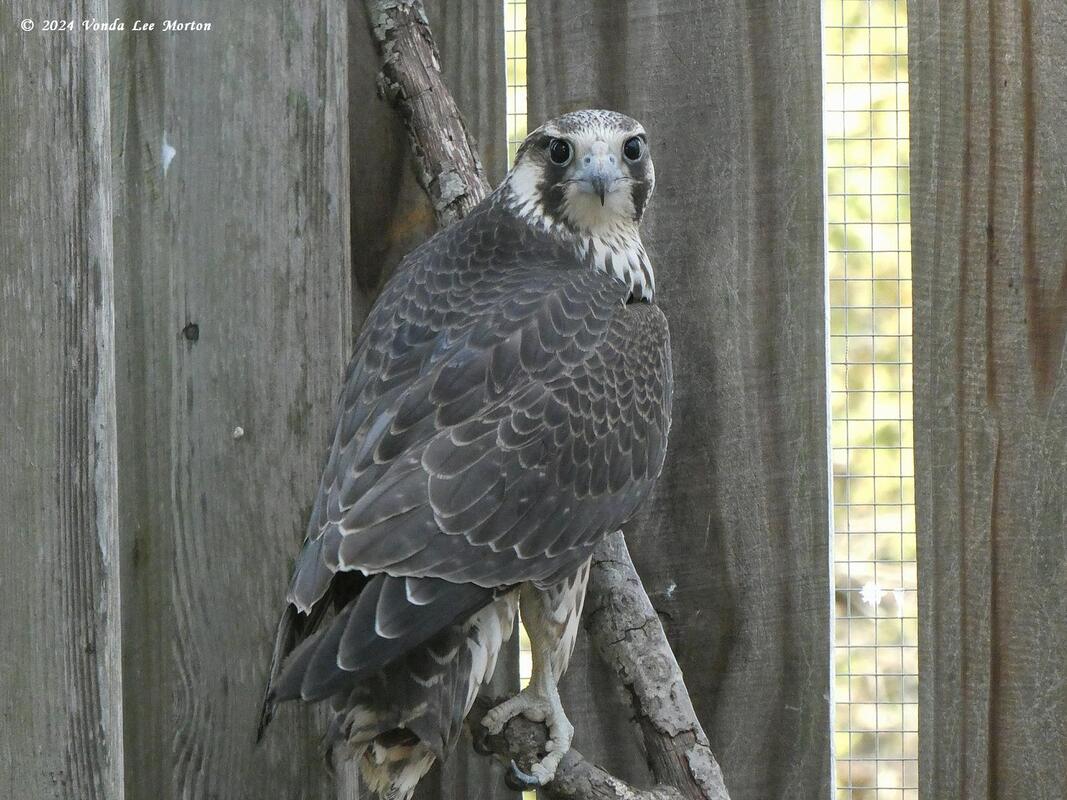

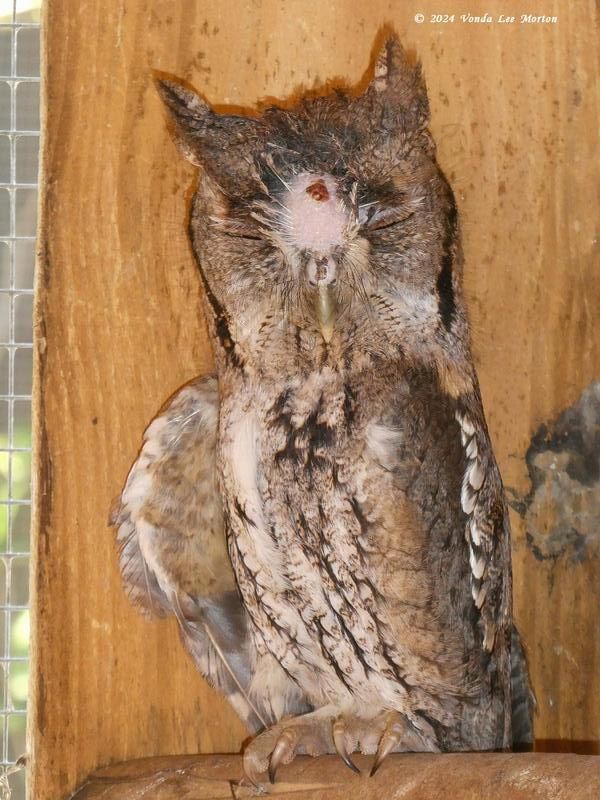
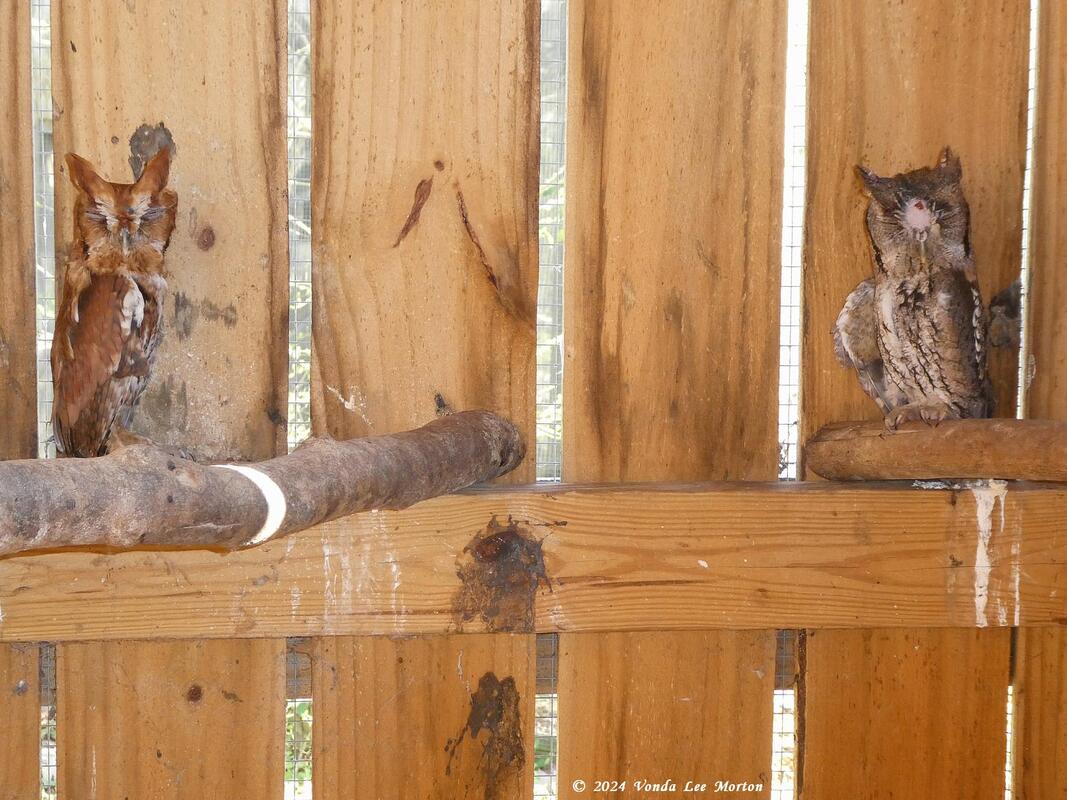
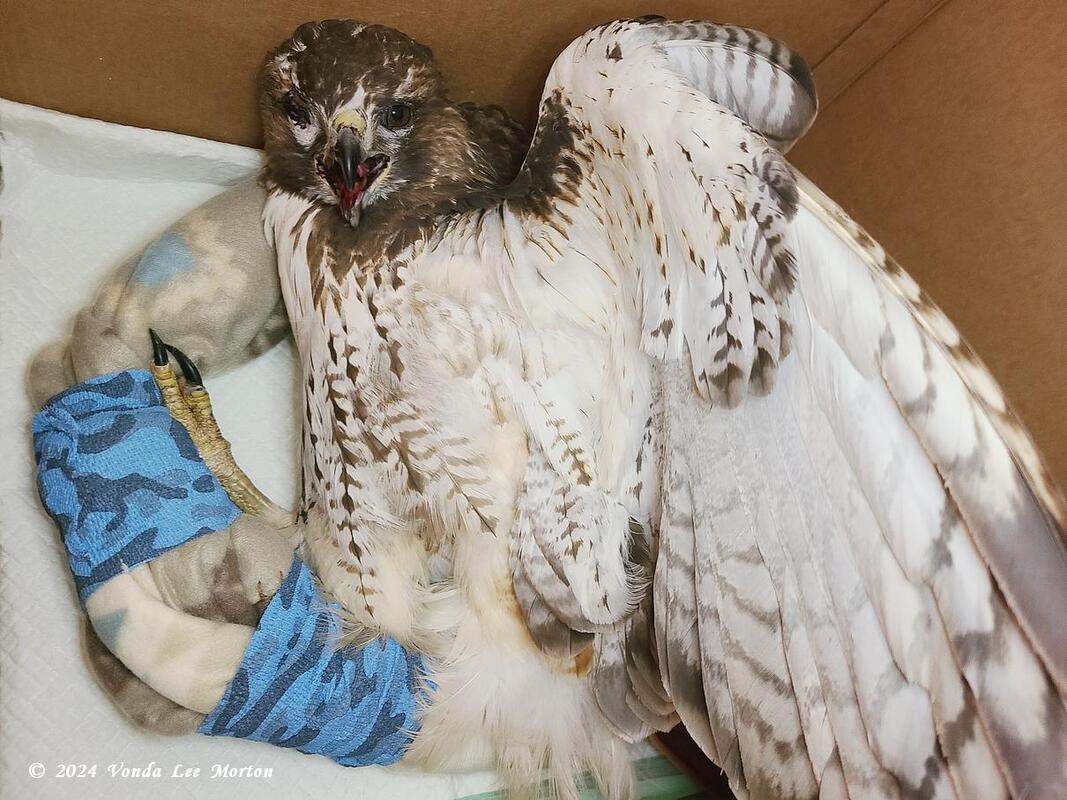
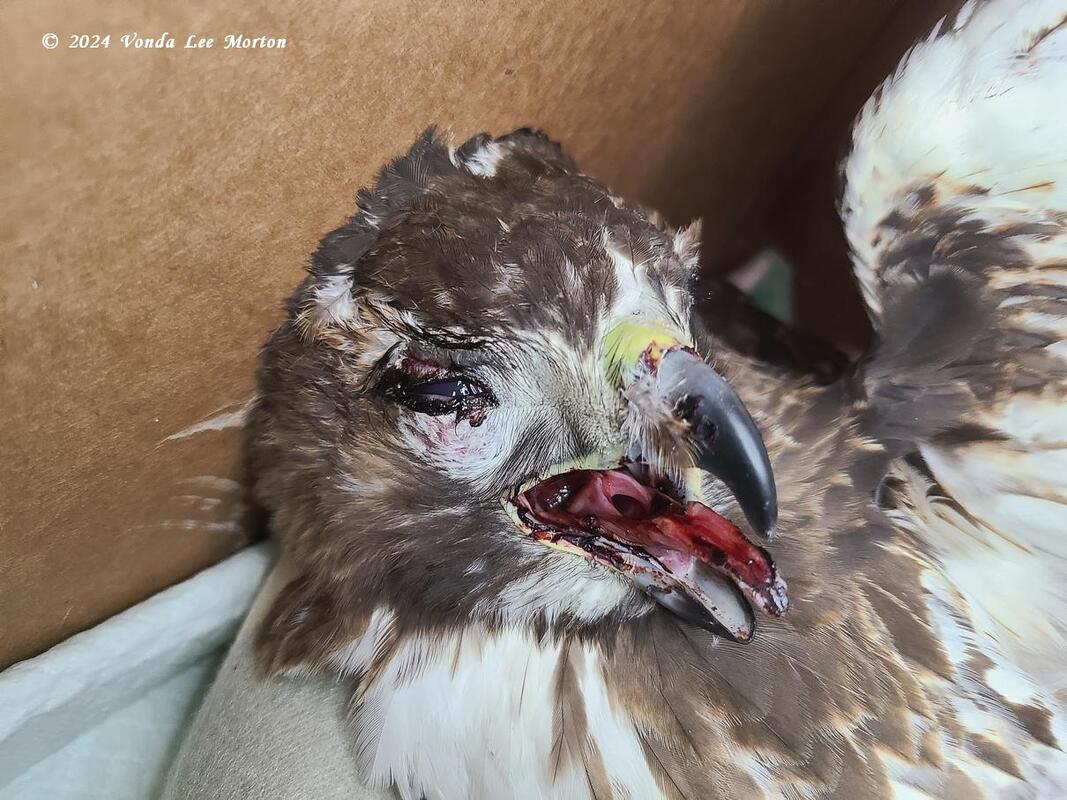
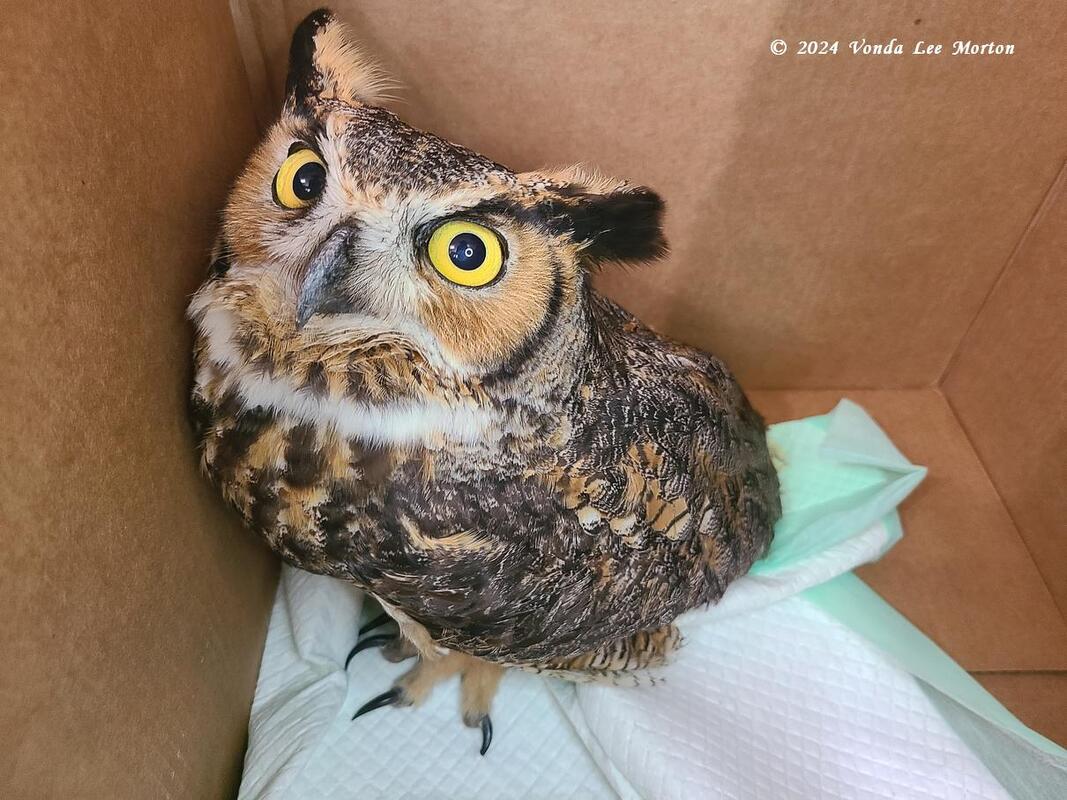
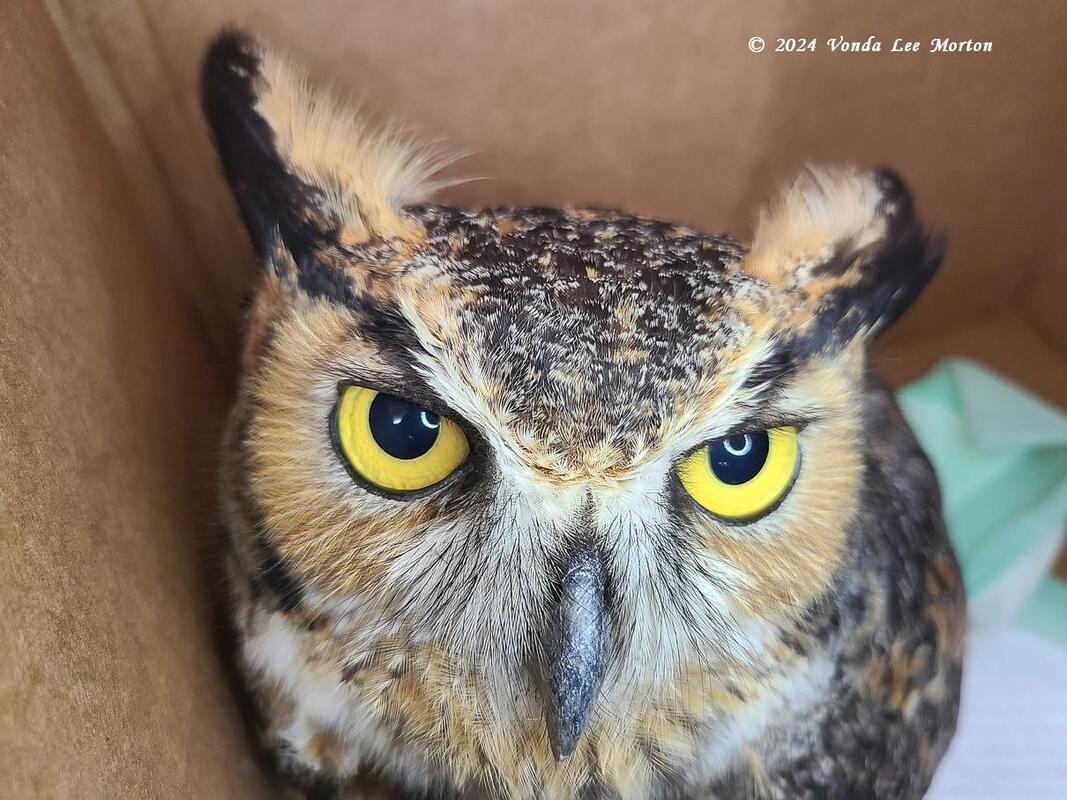
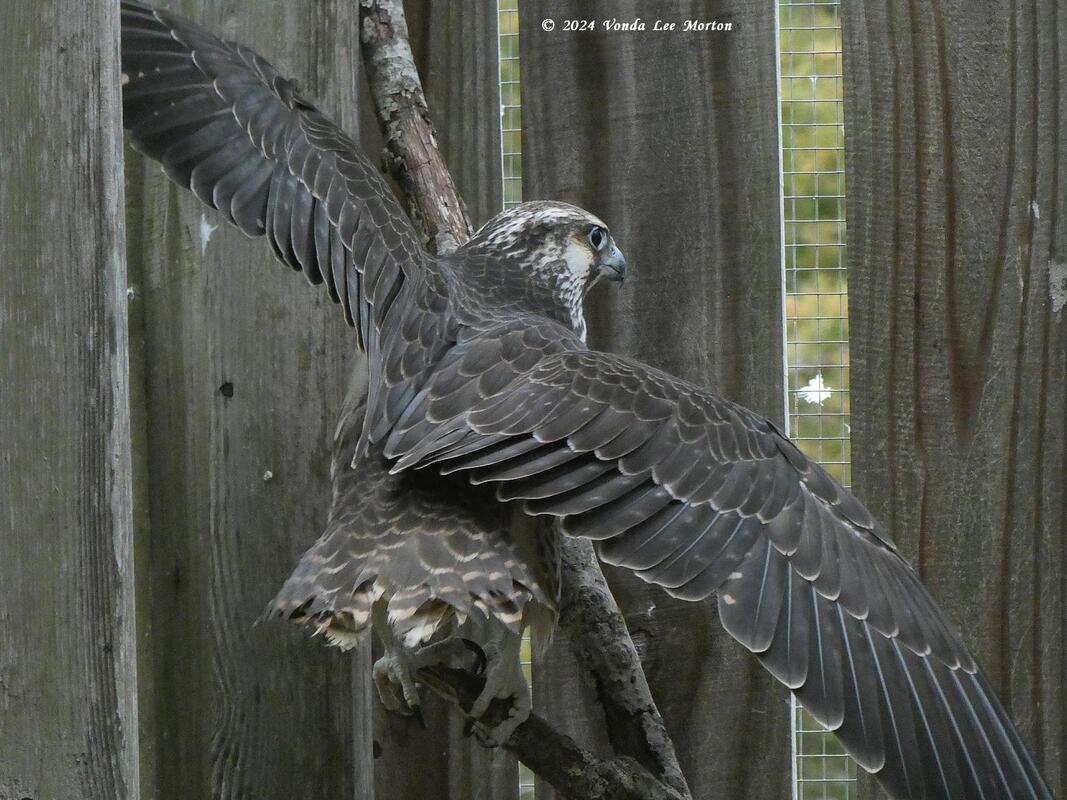
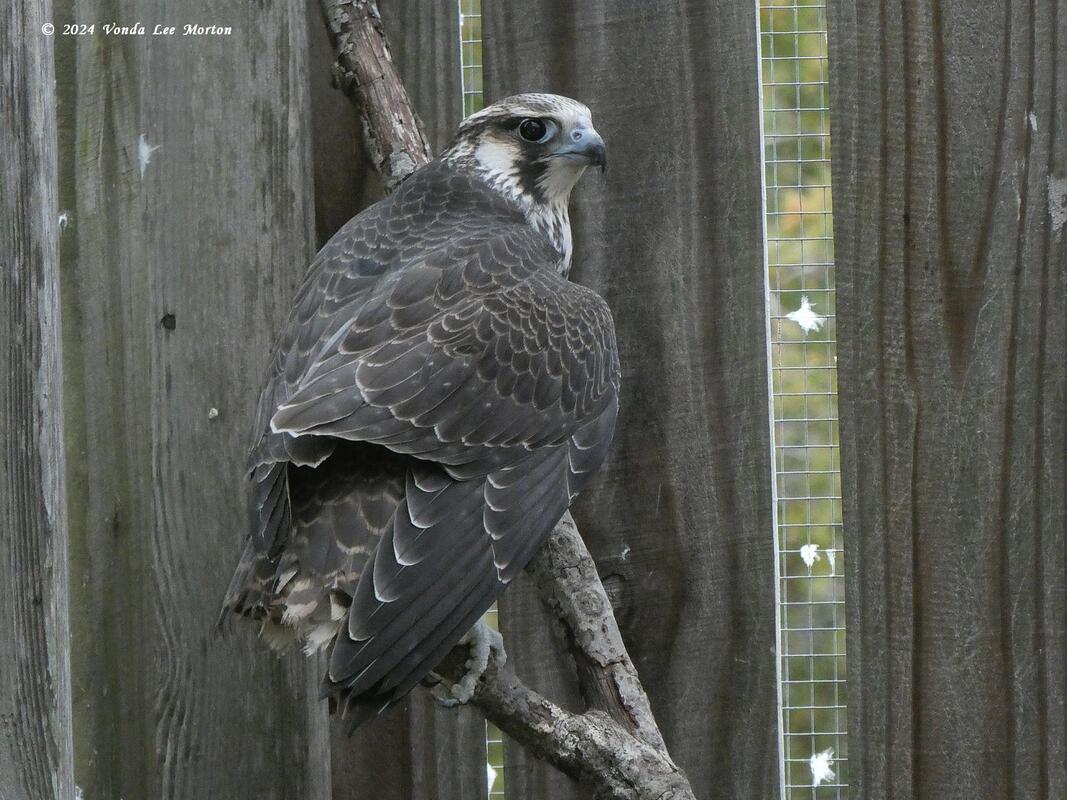
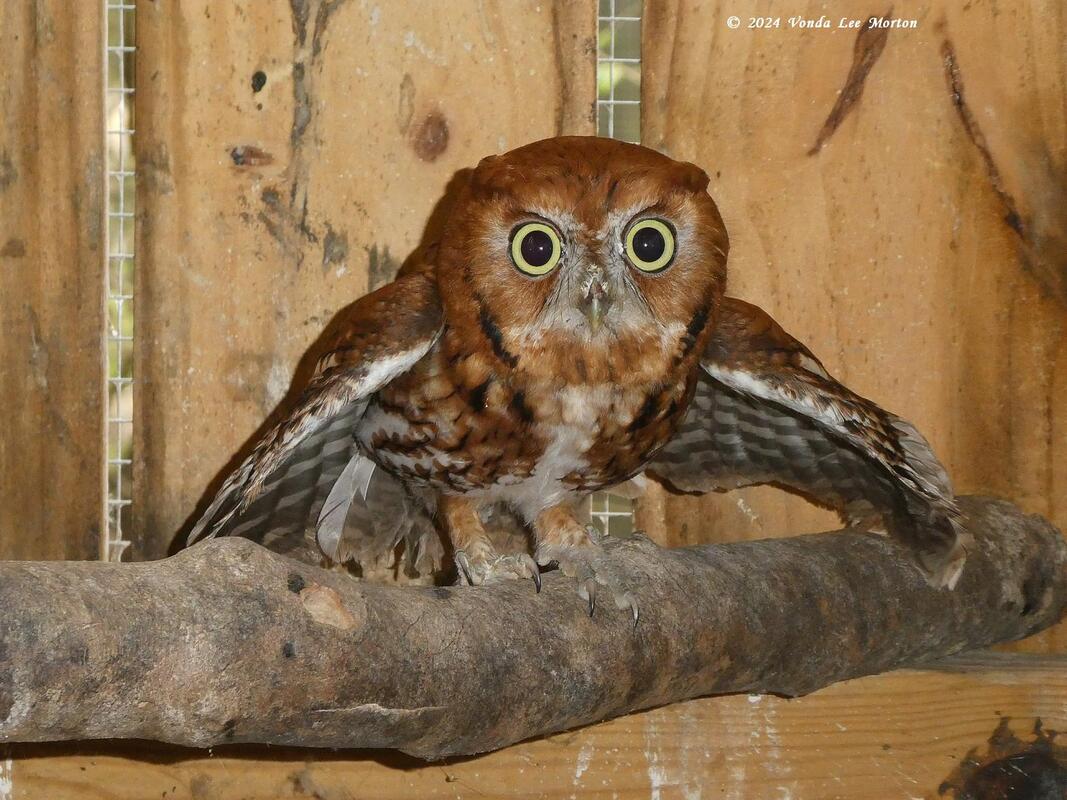
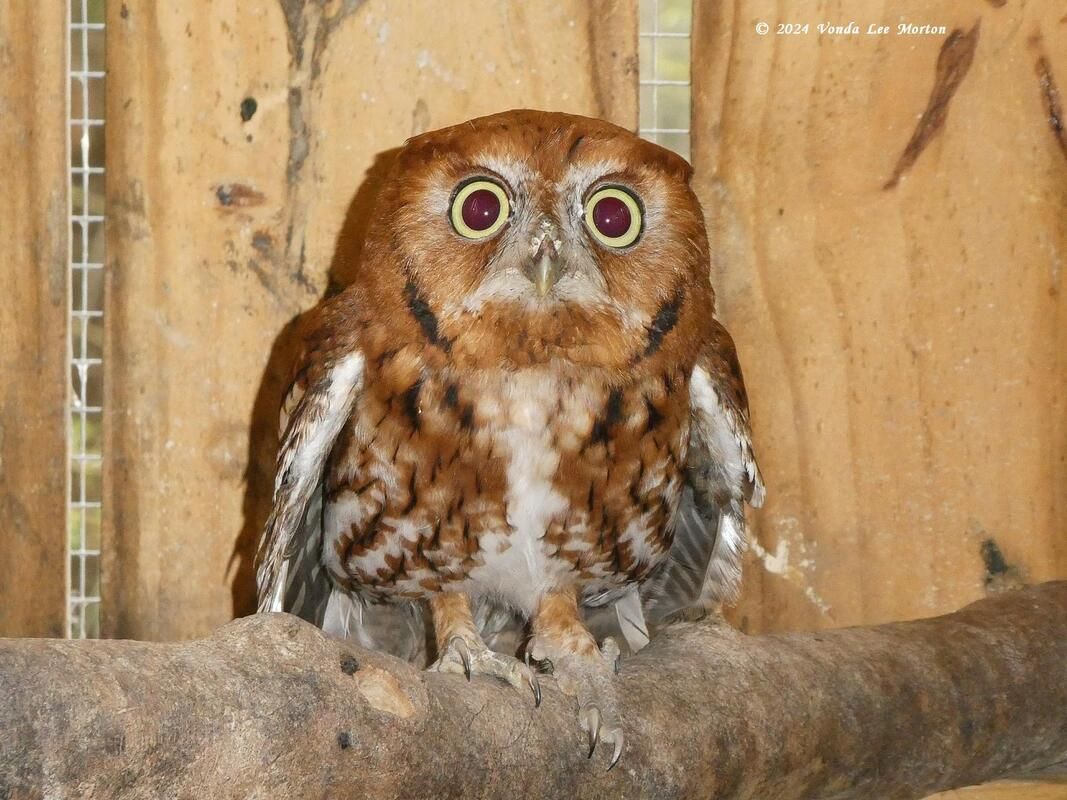
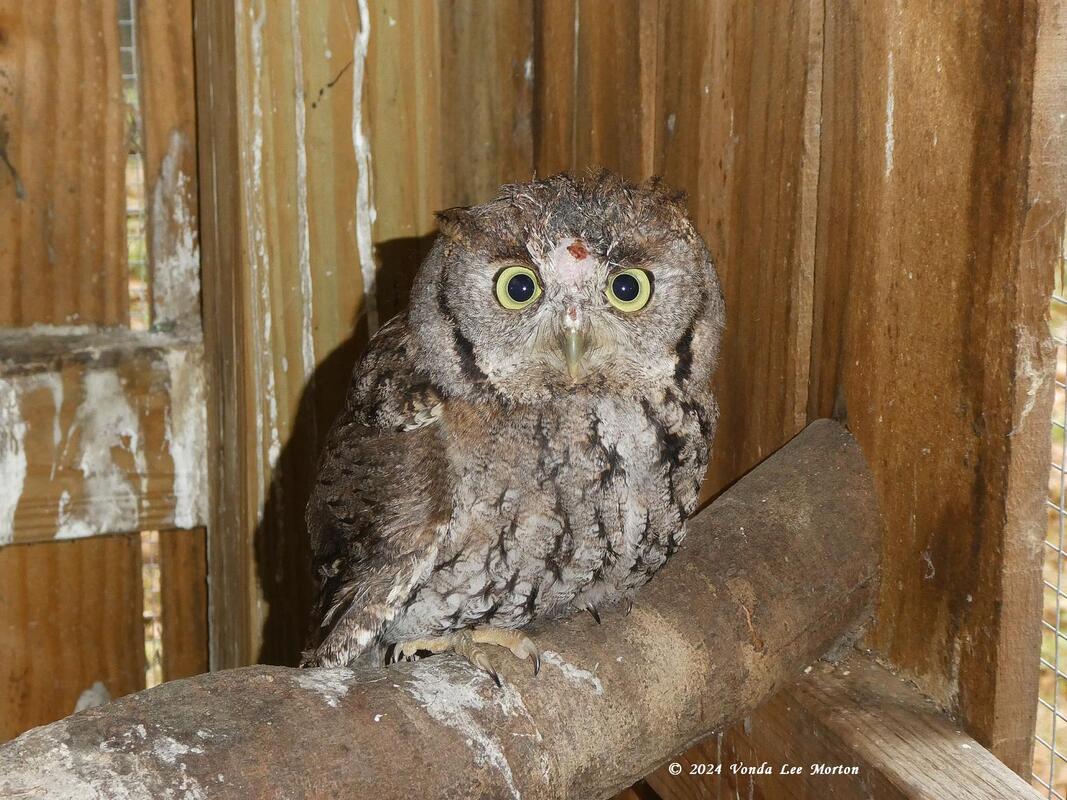
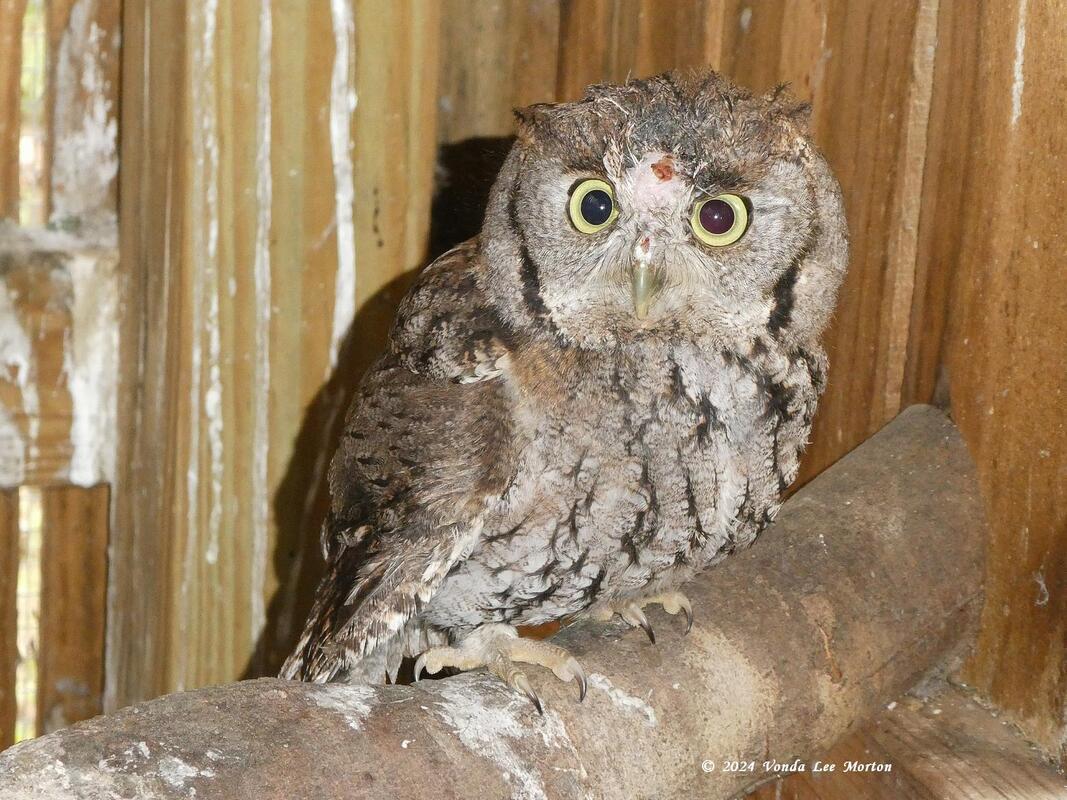
 RSS Feed
RSS Feed
